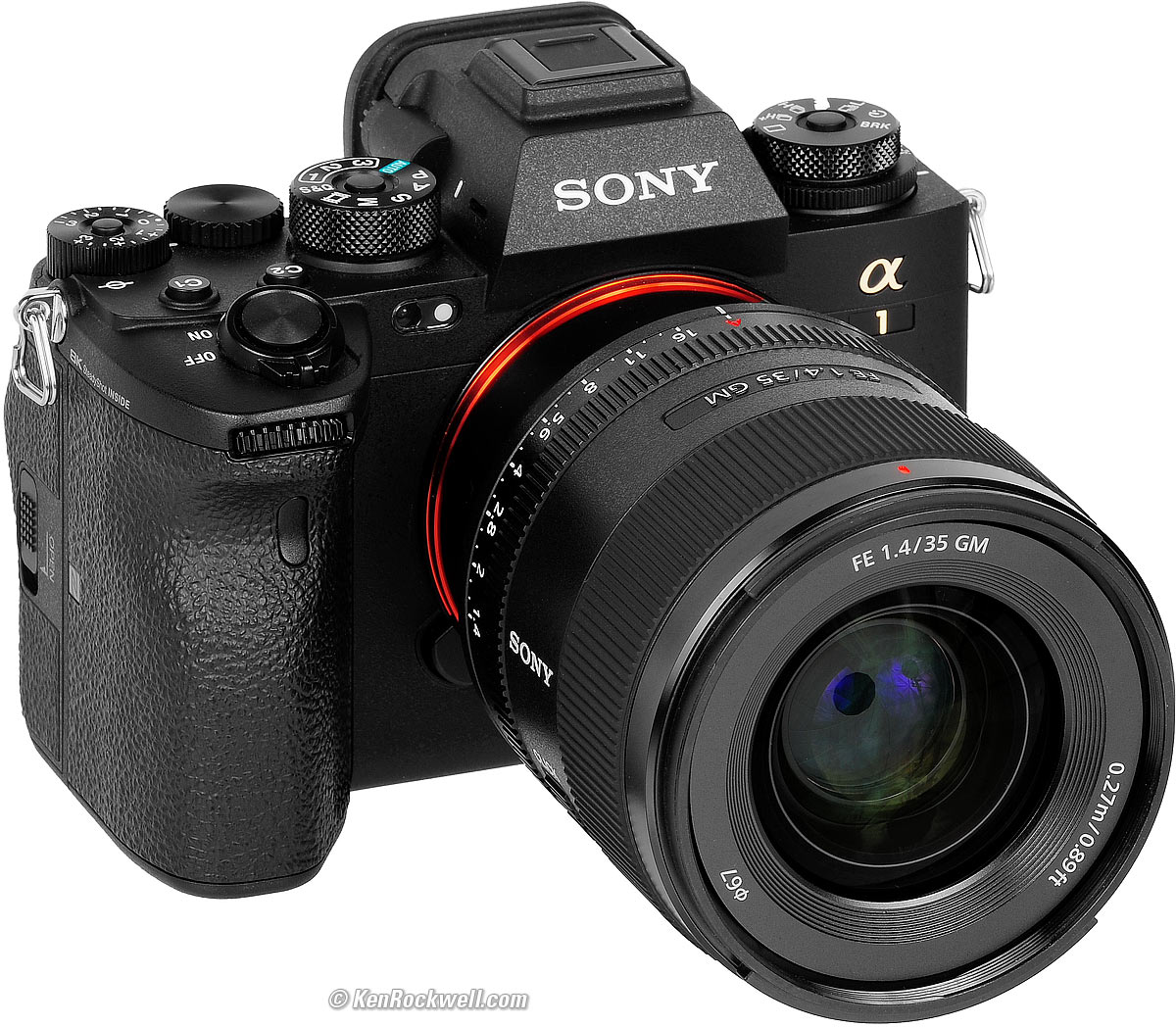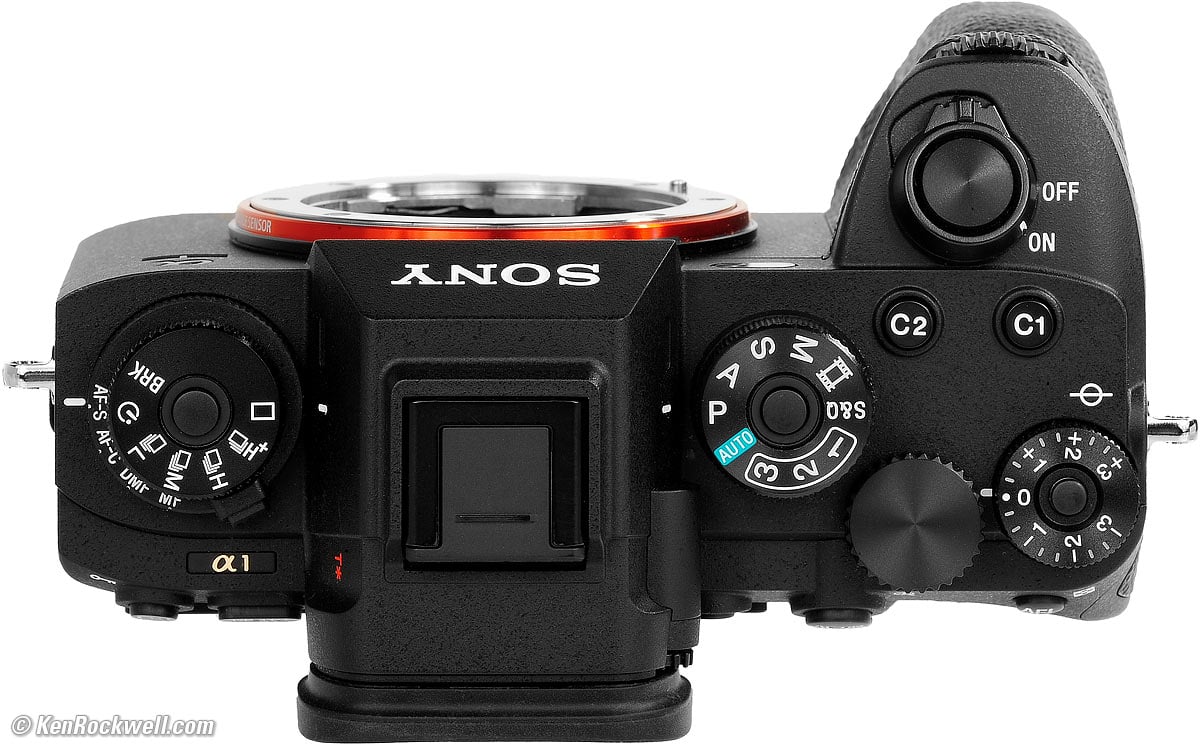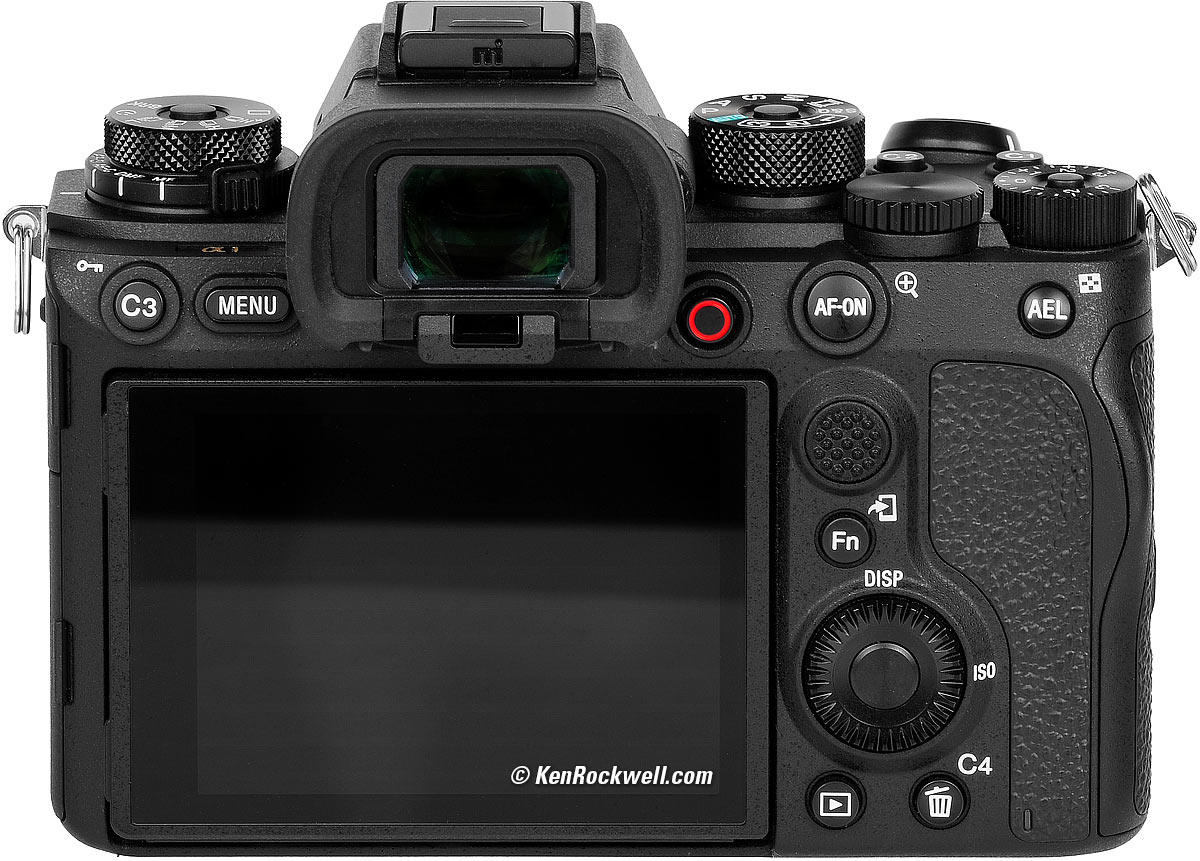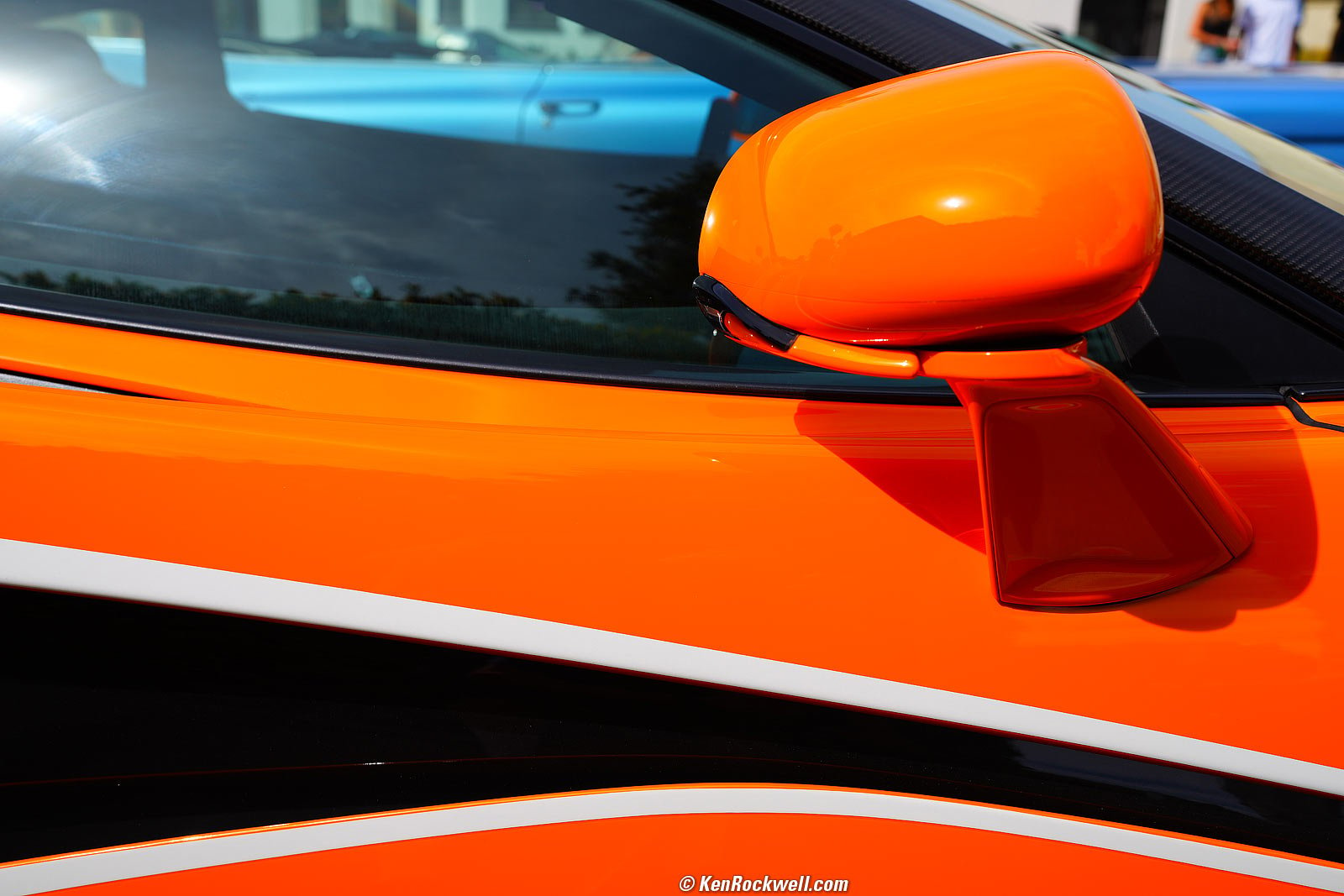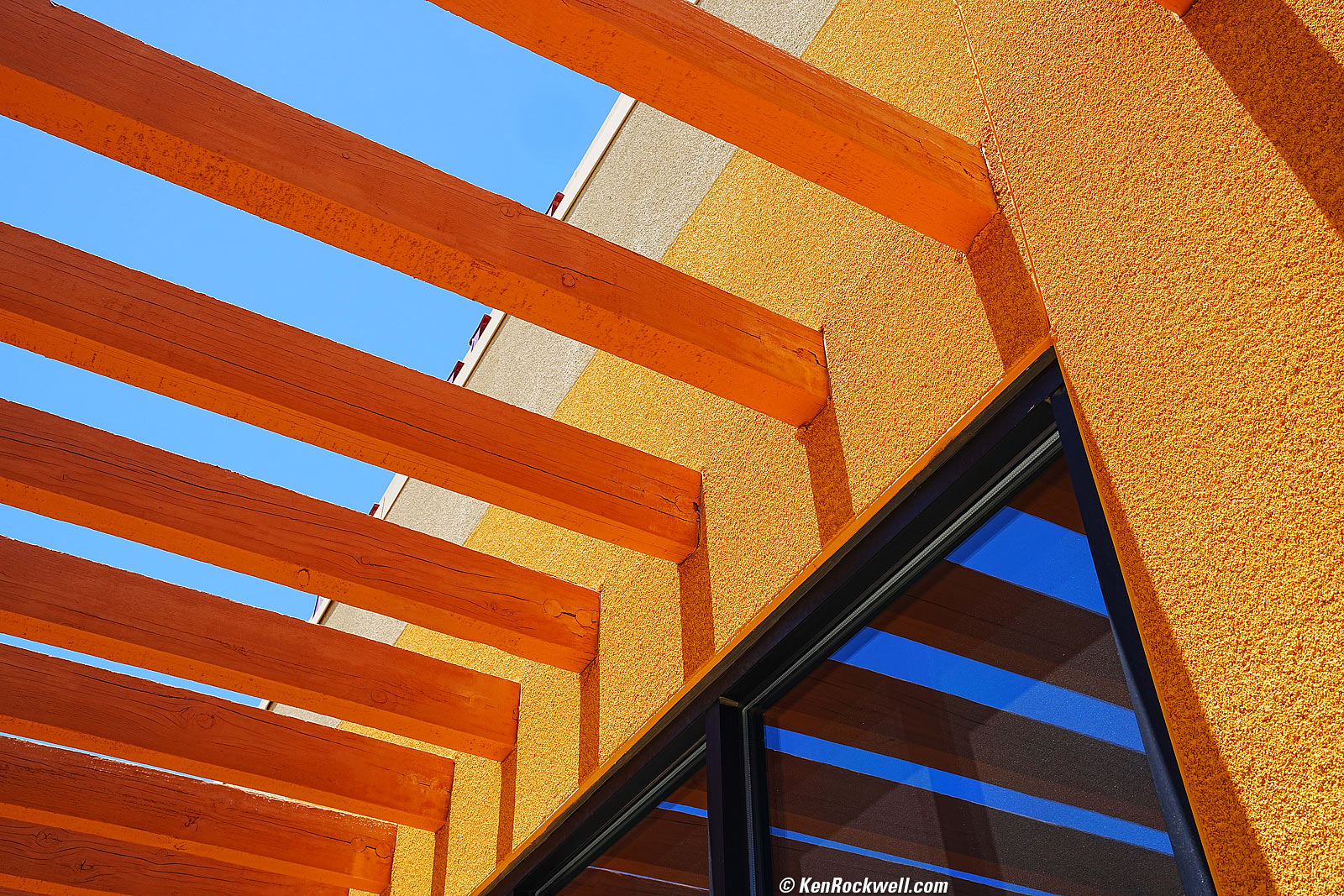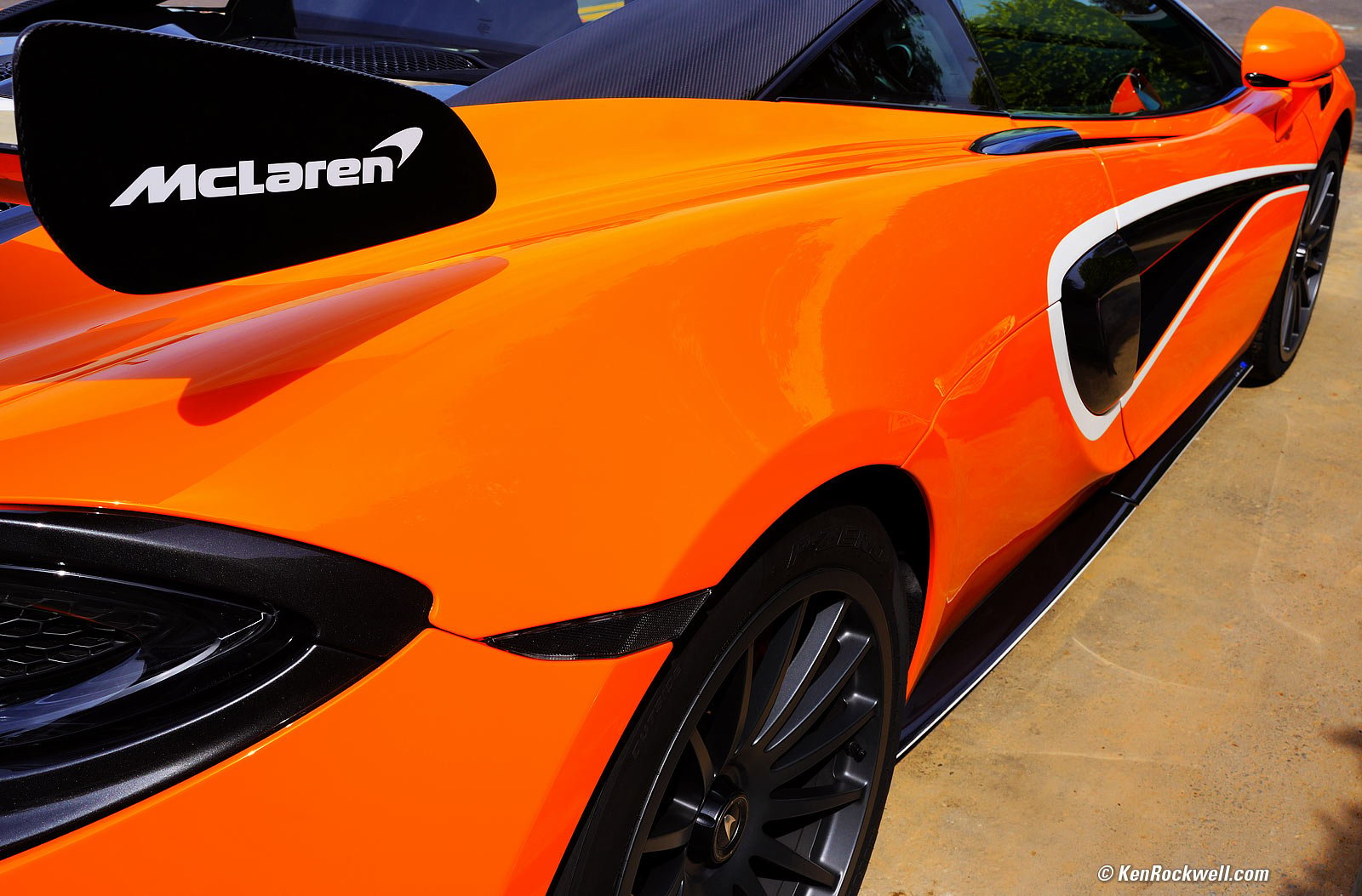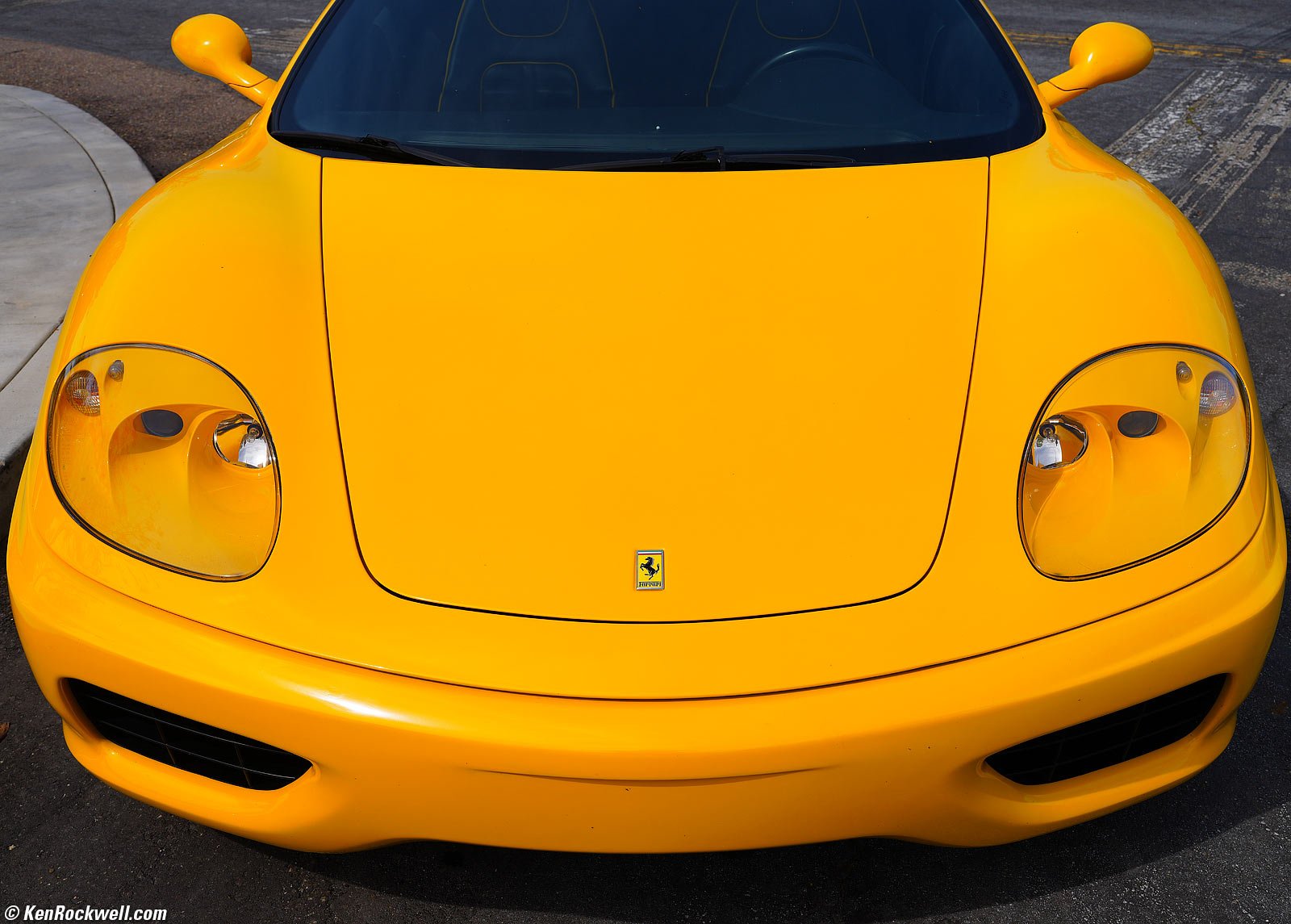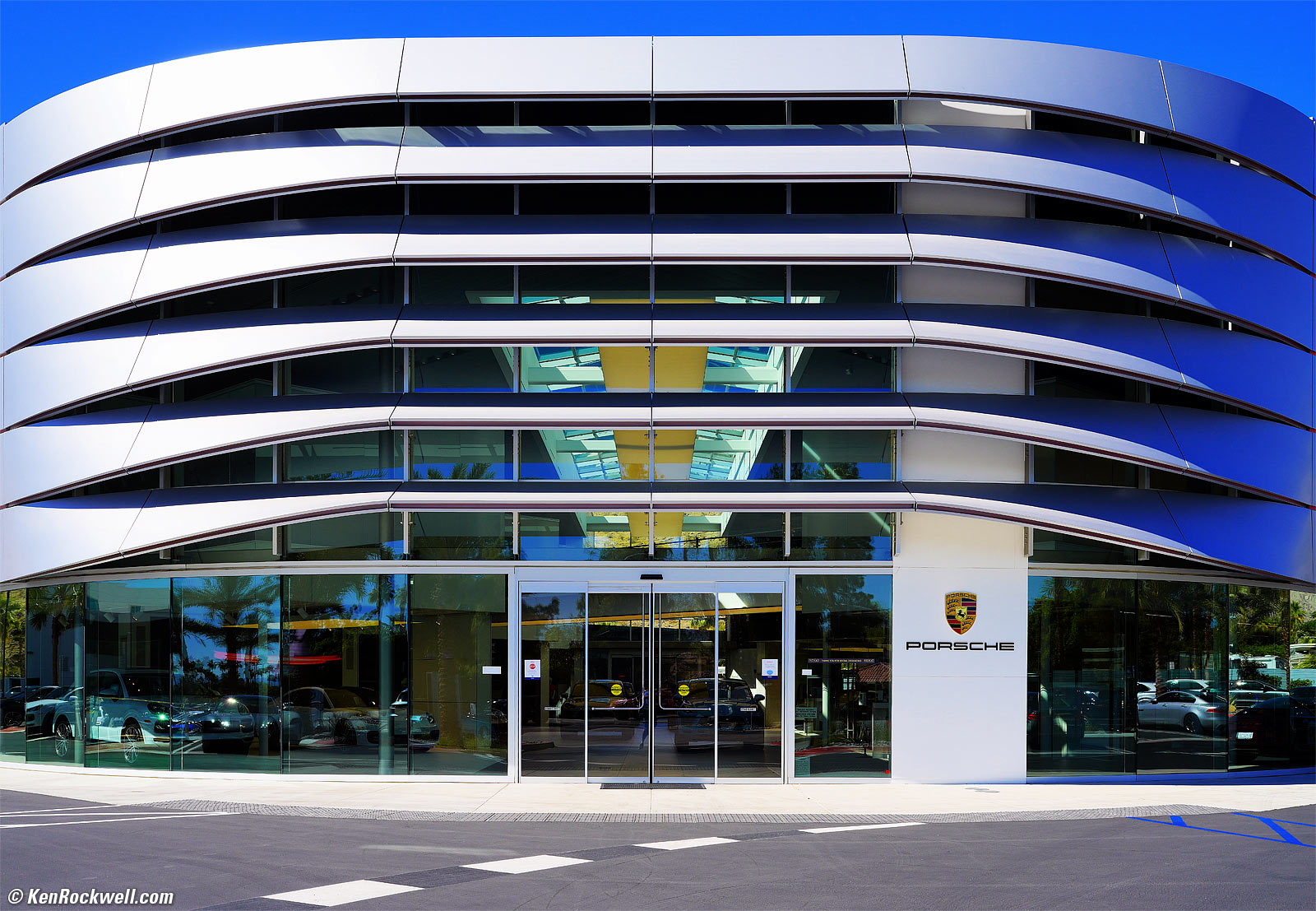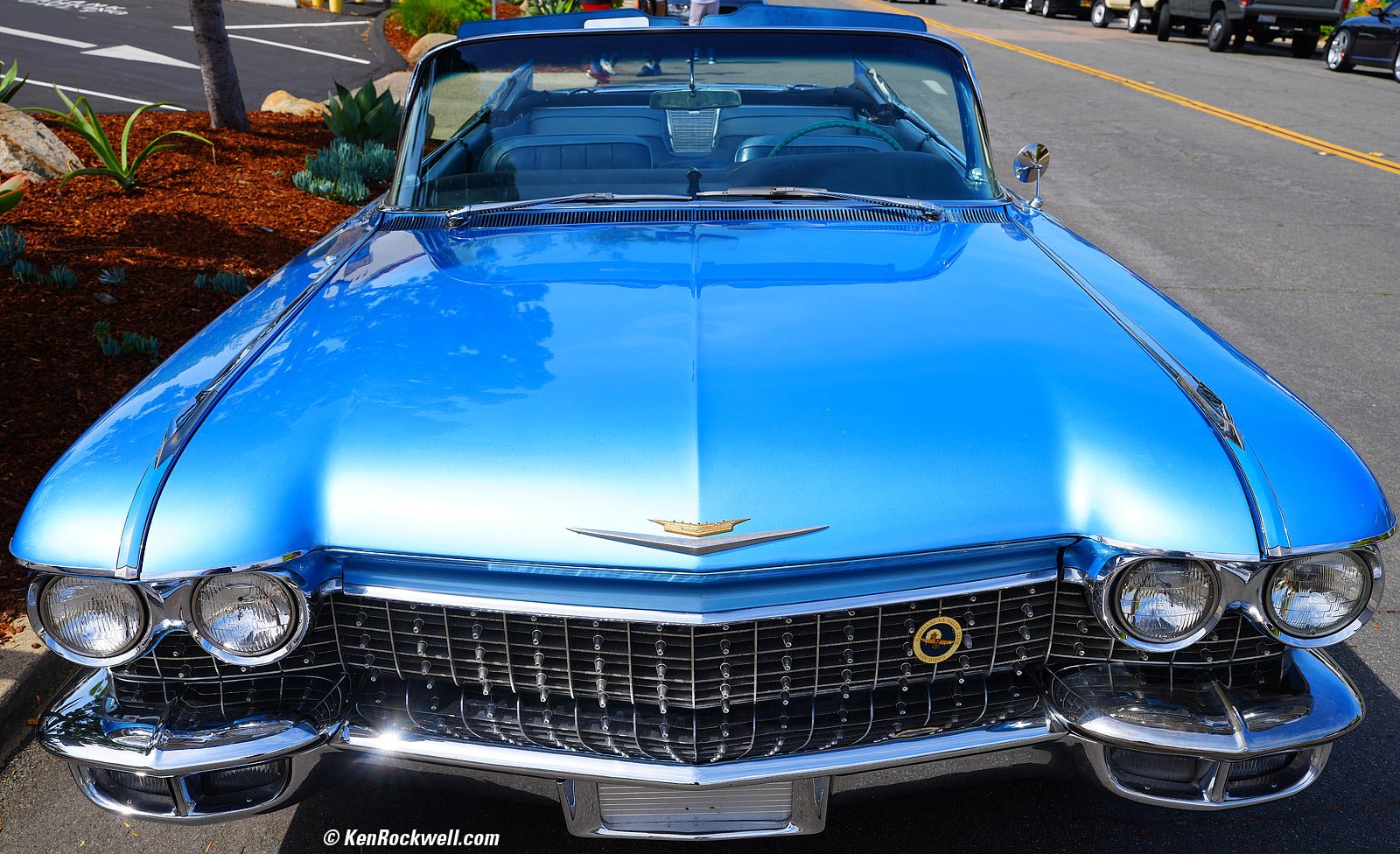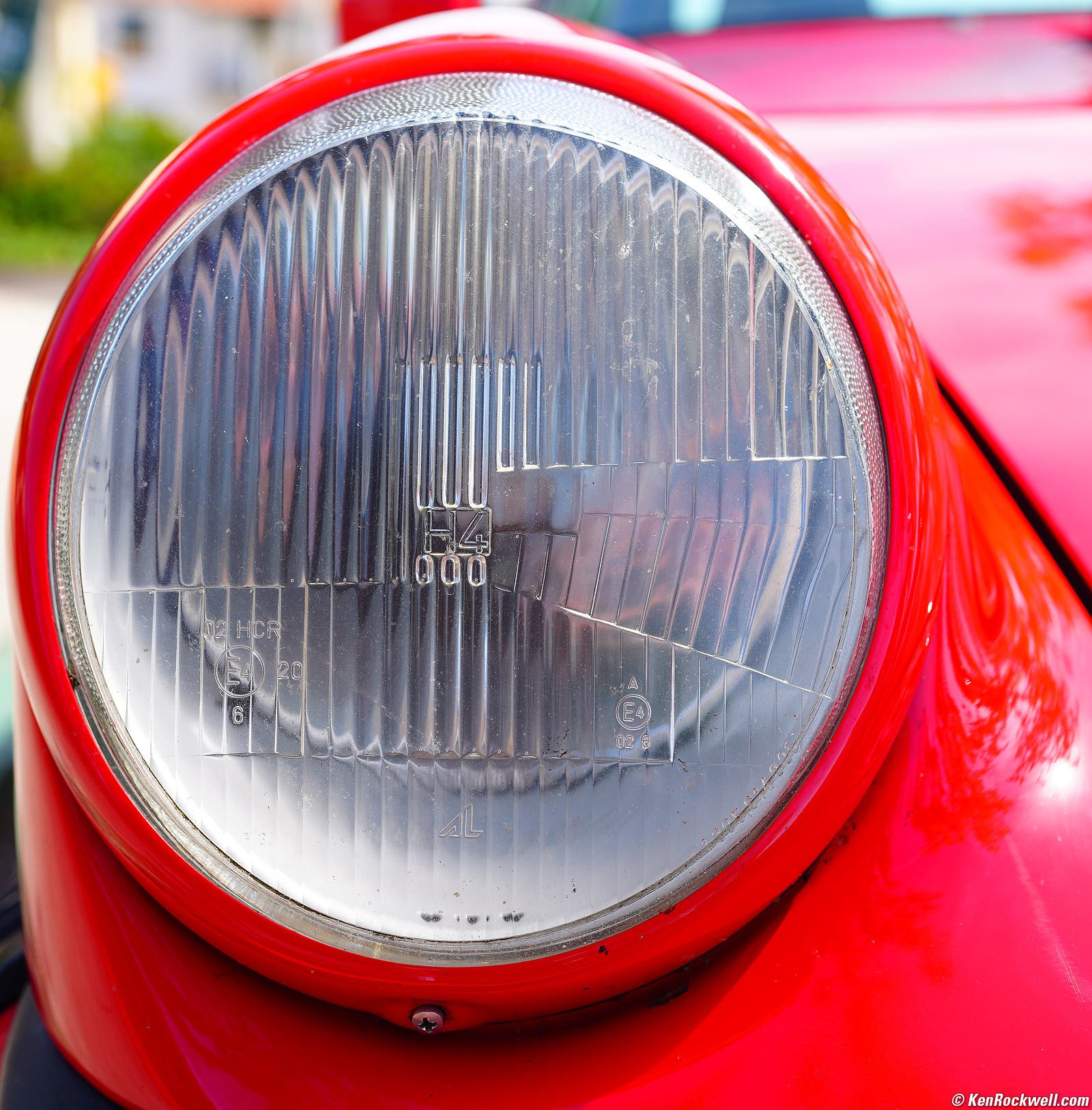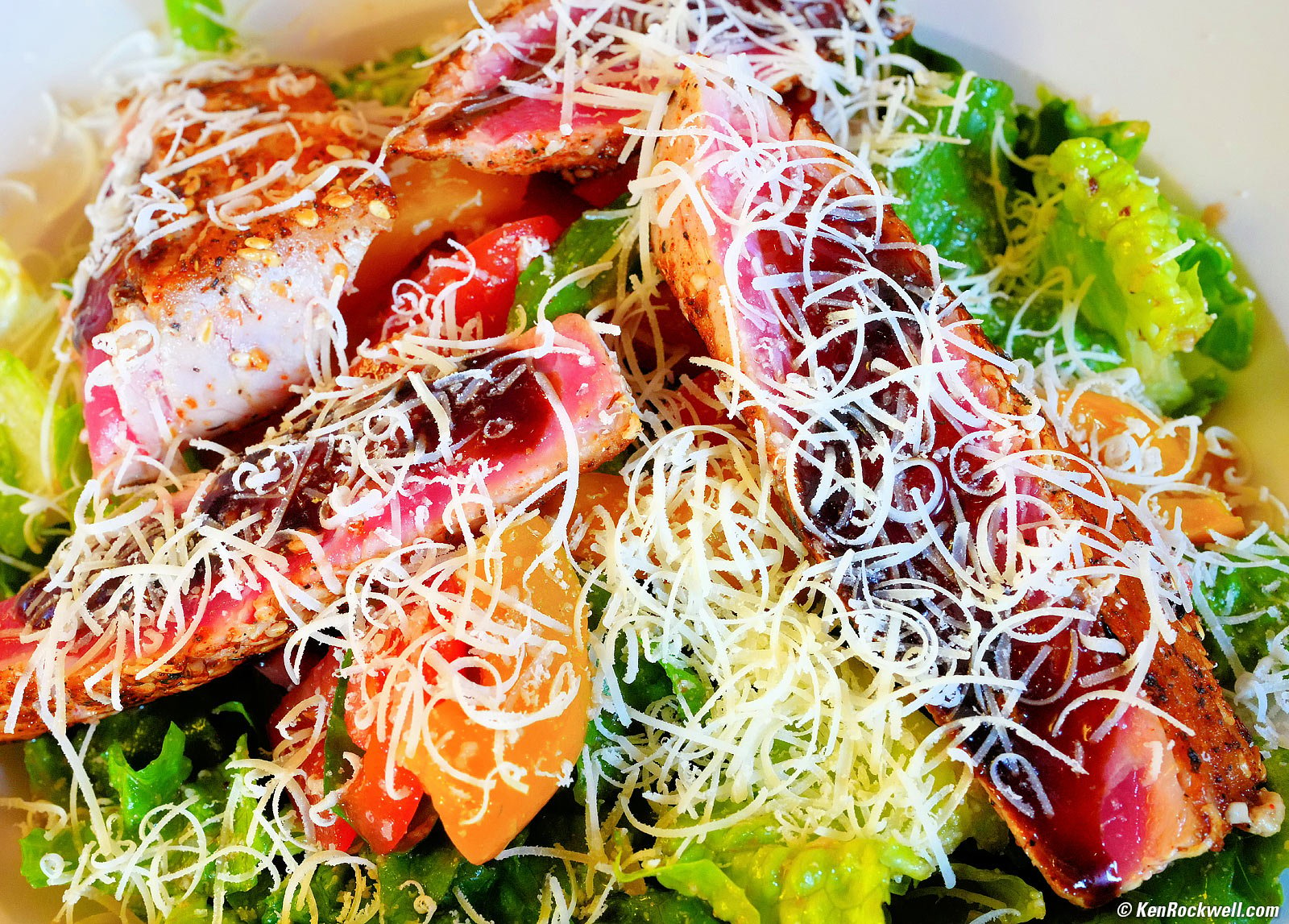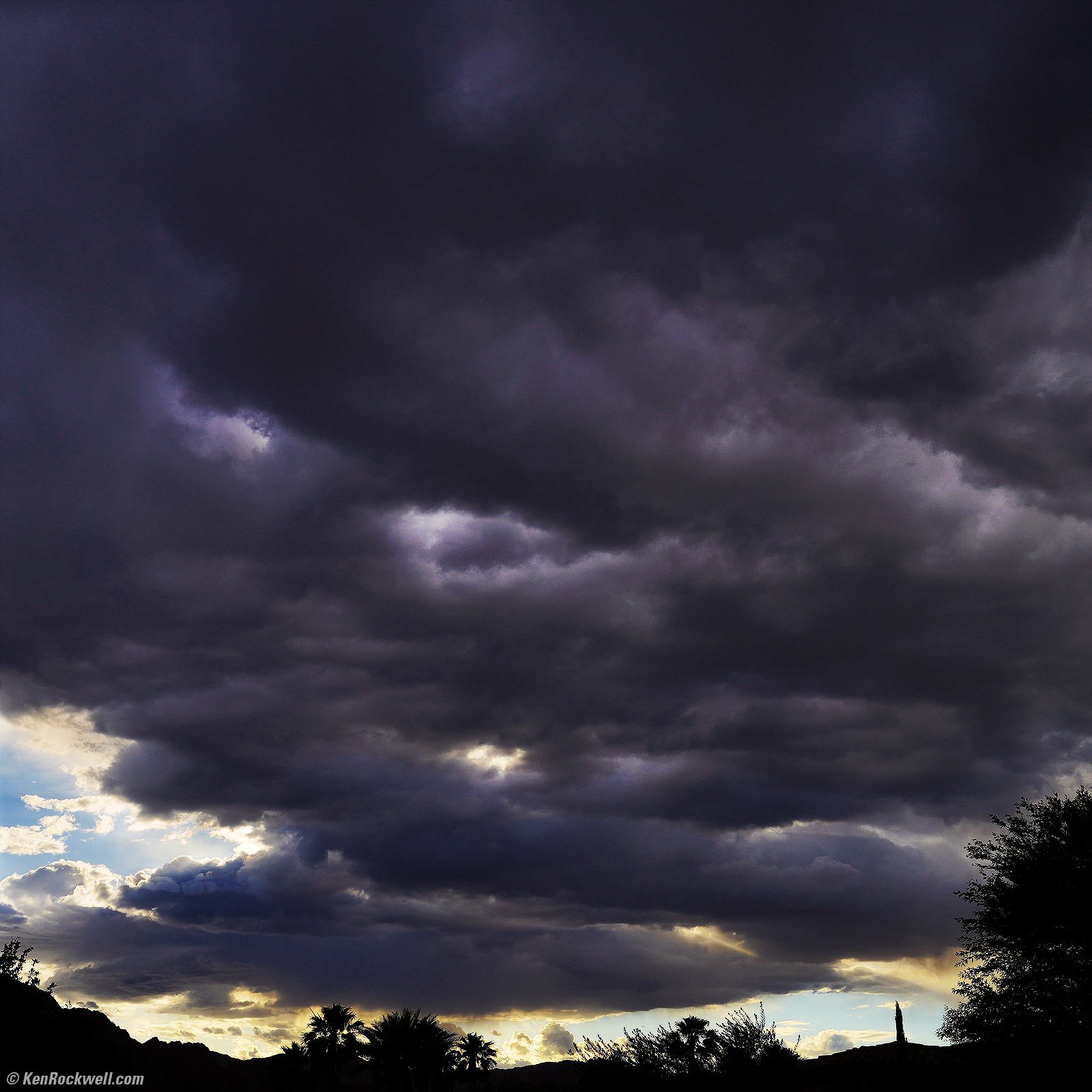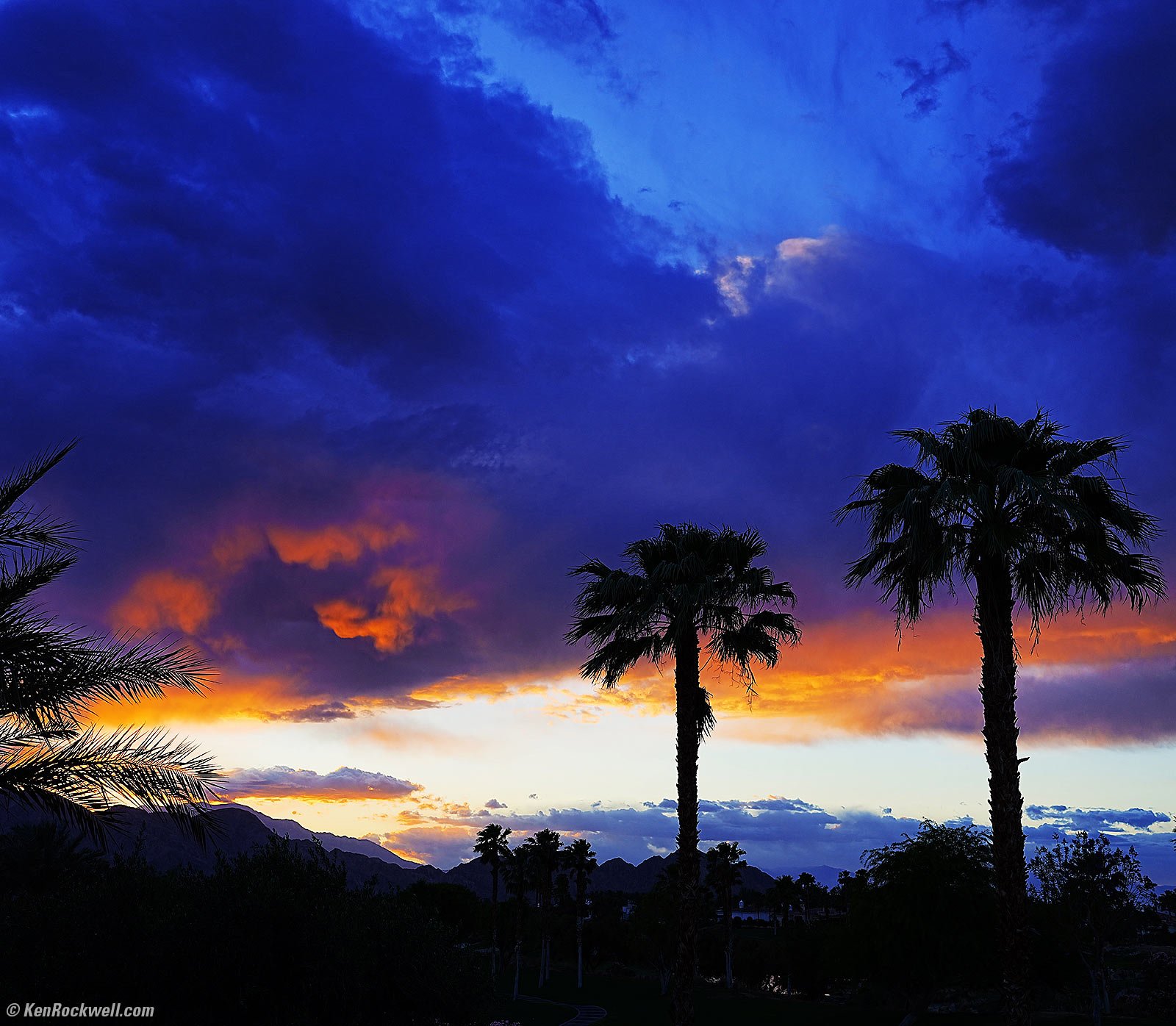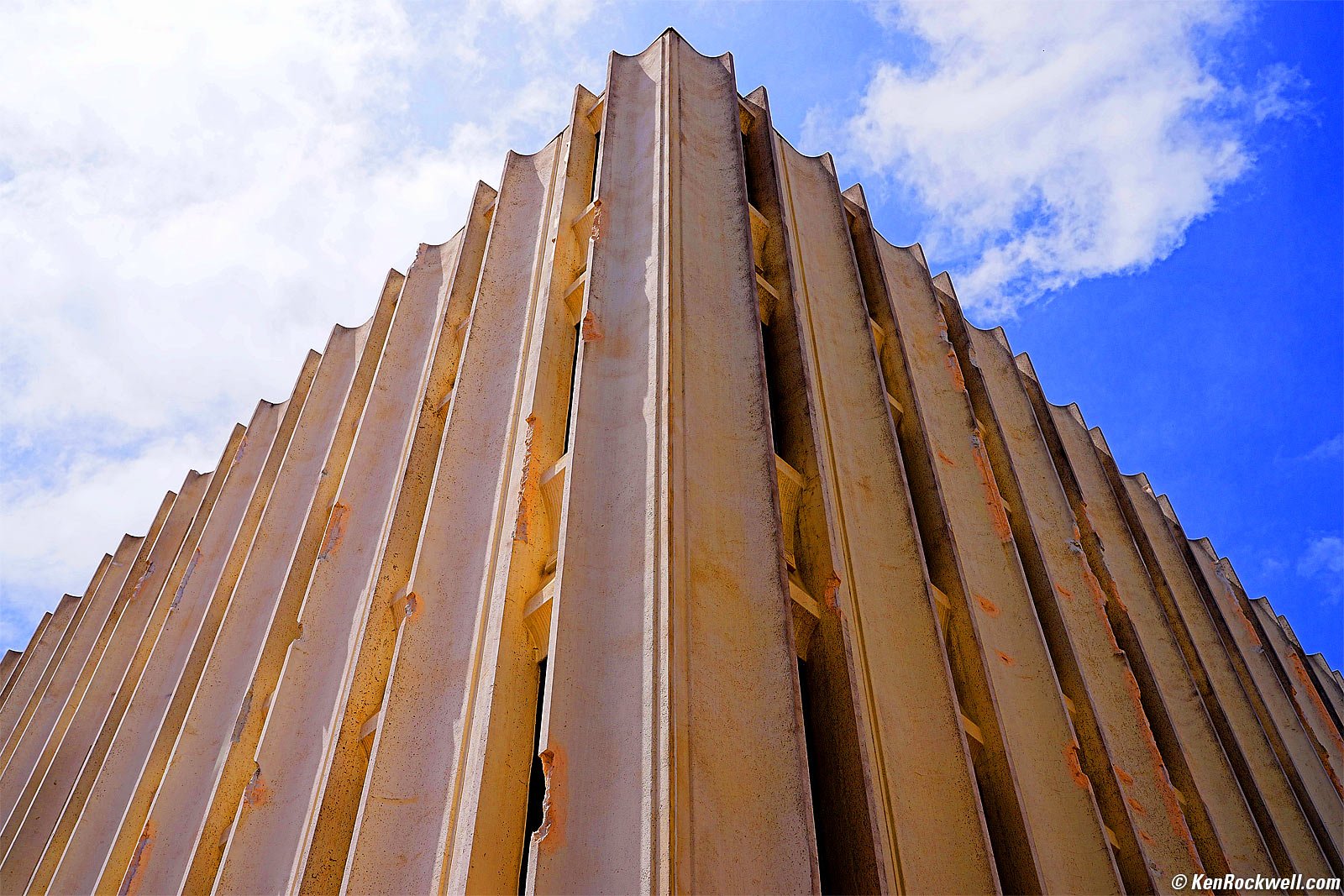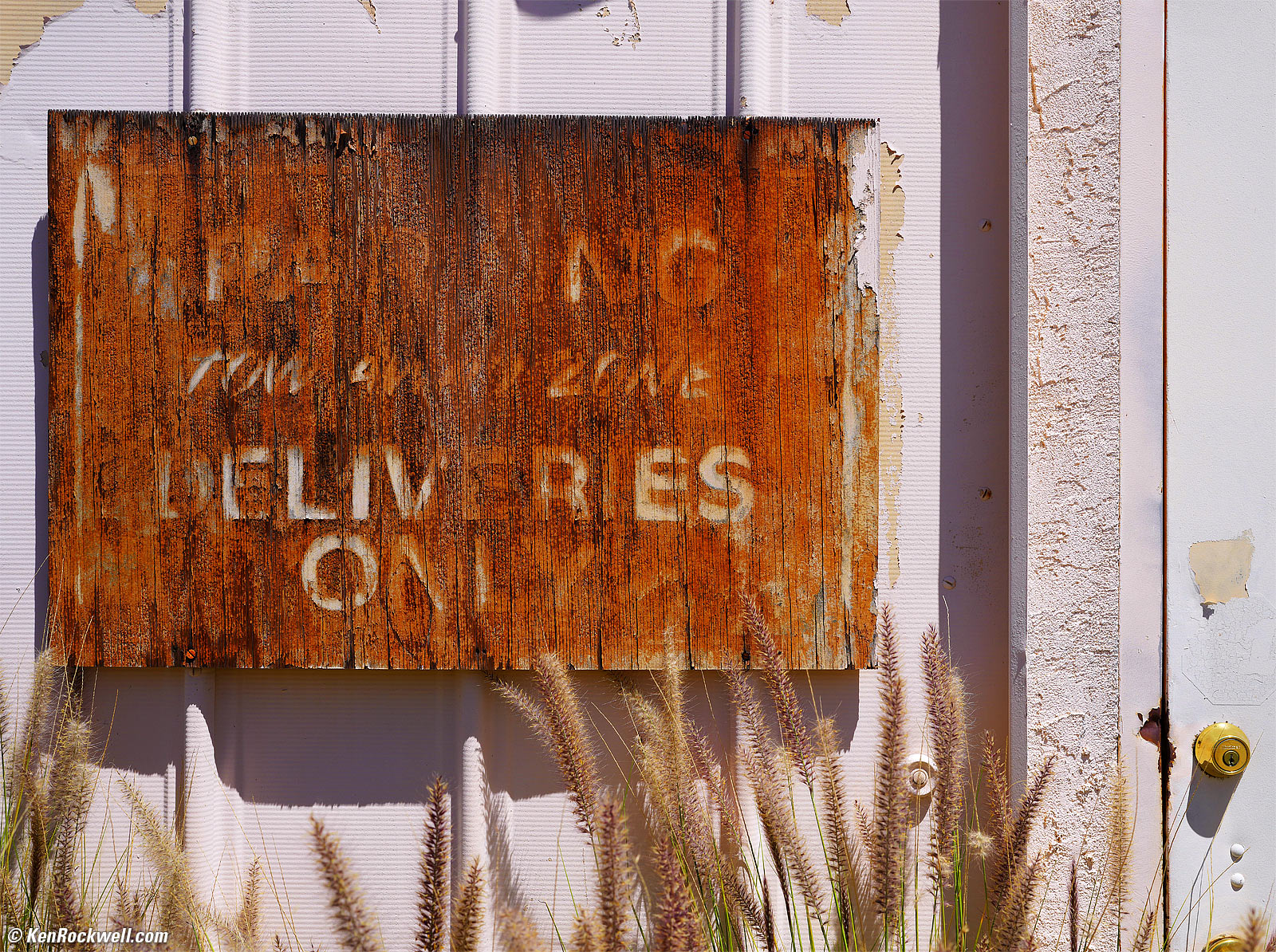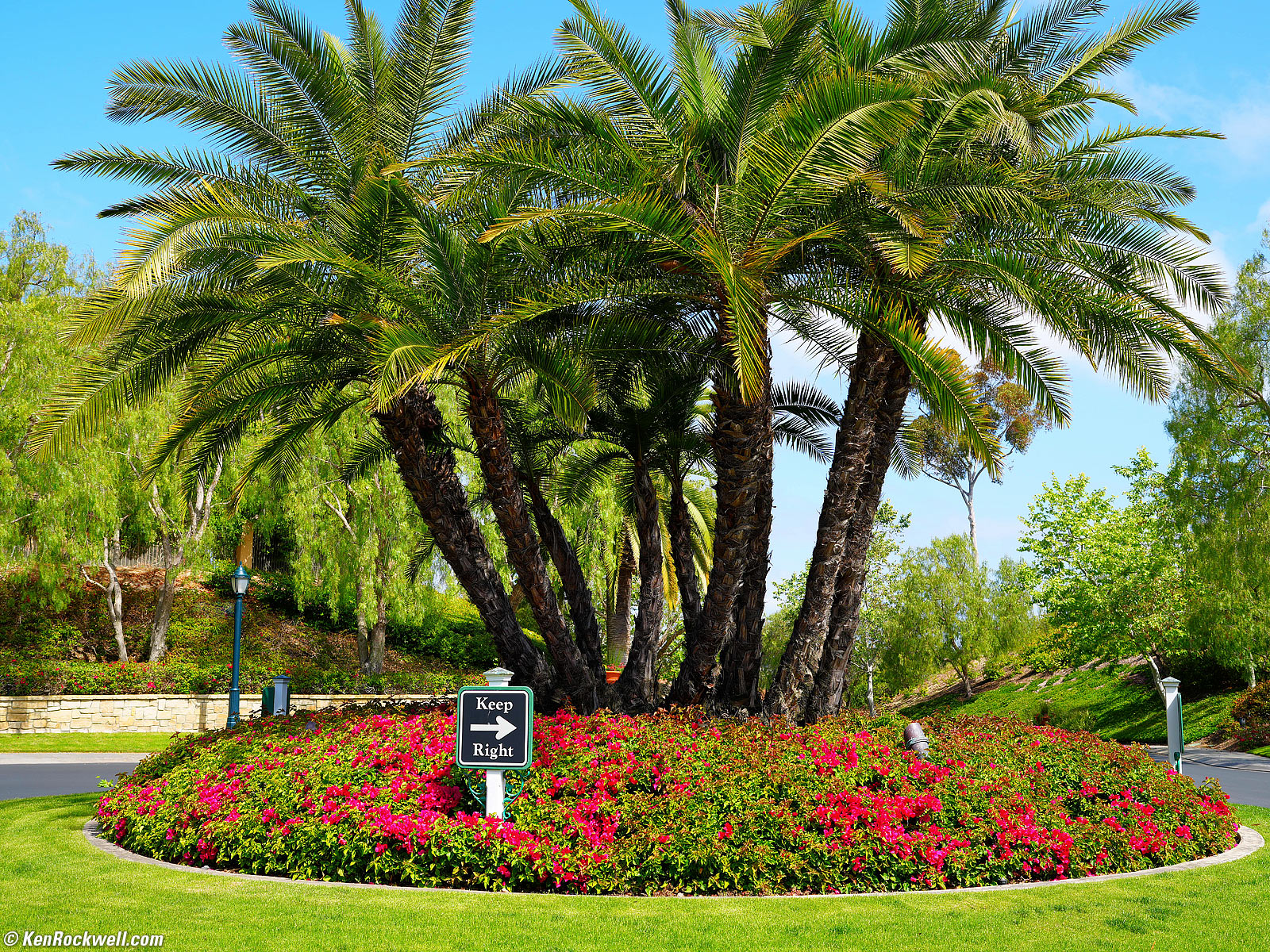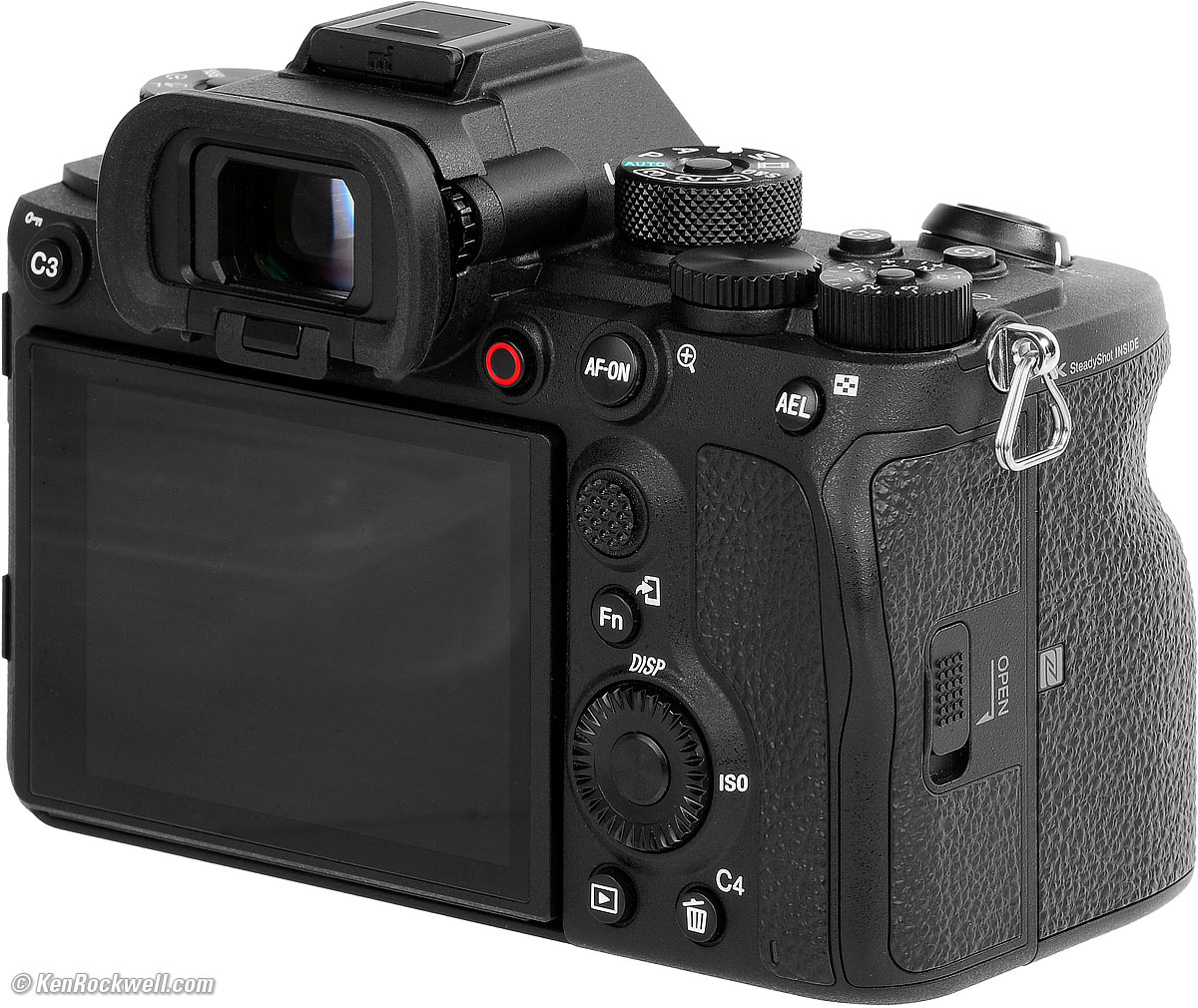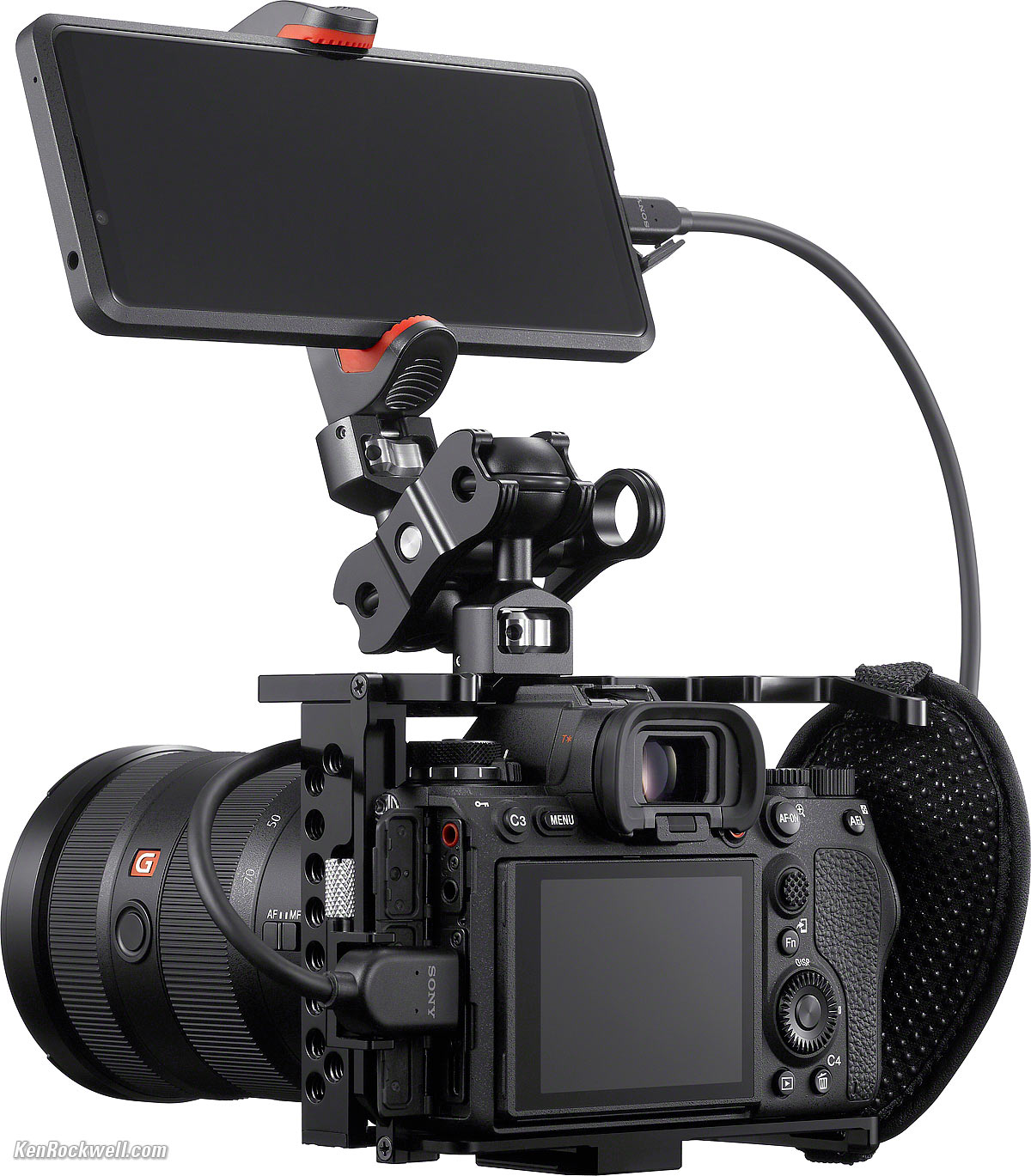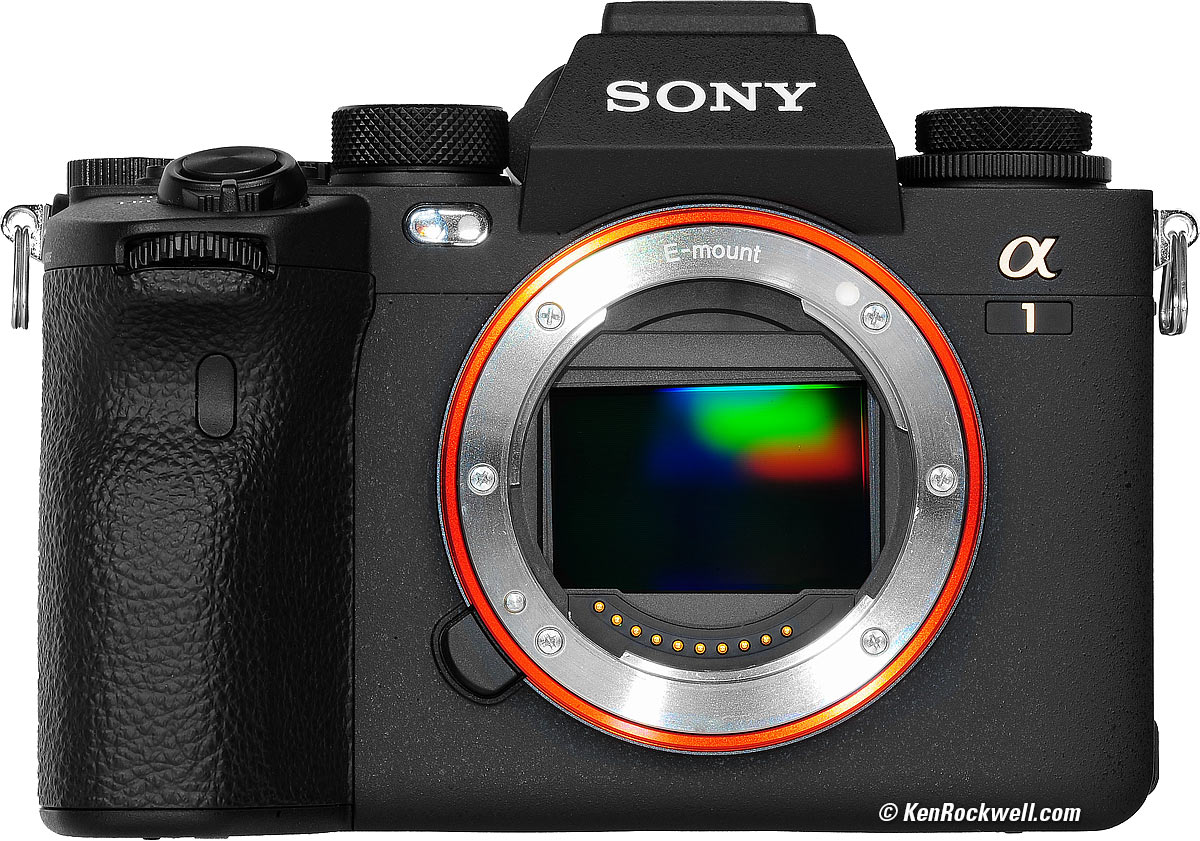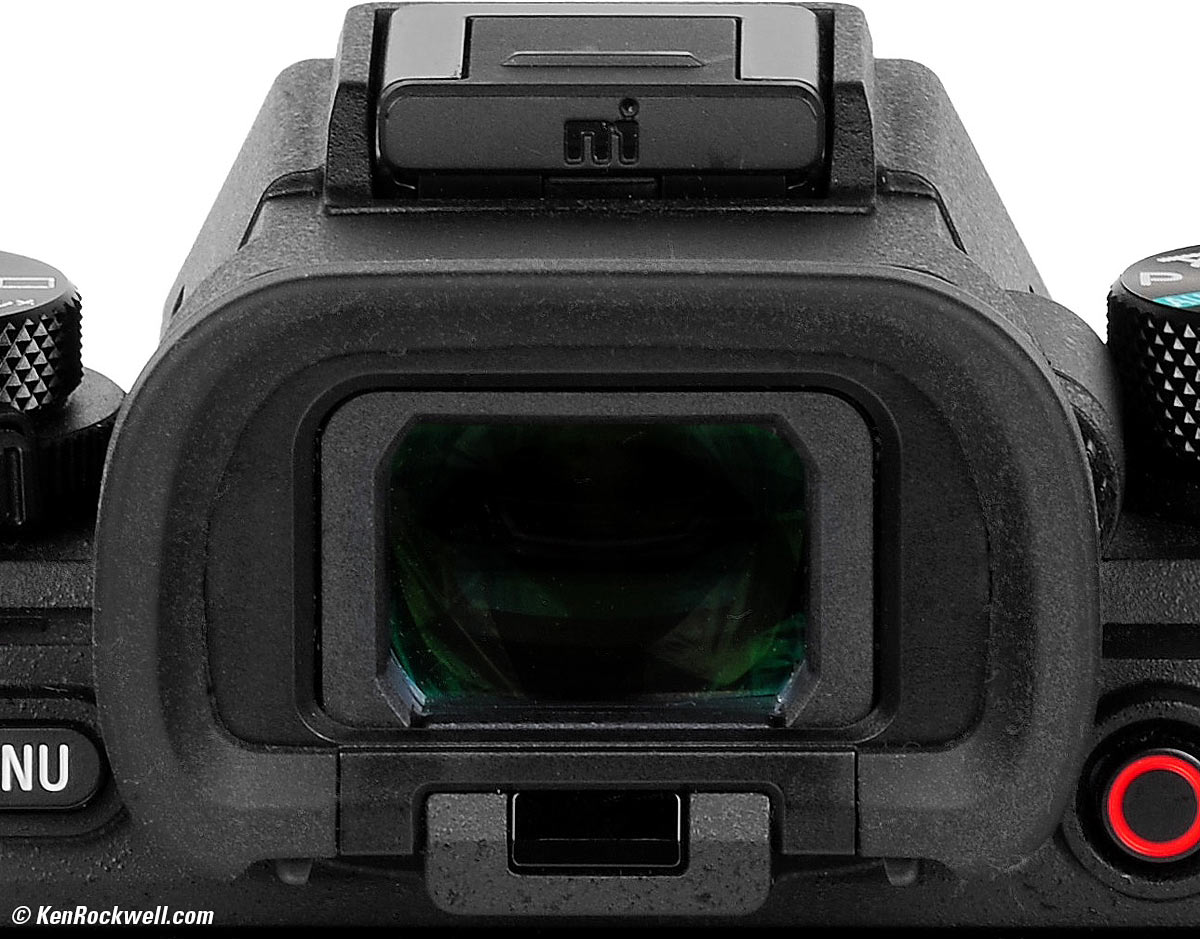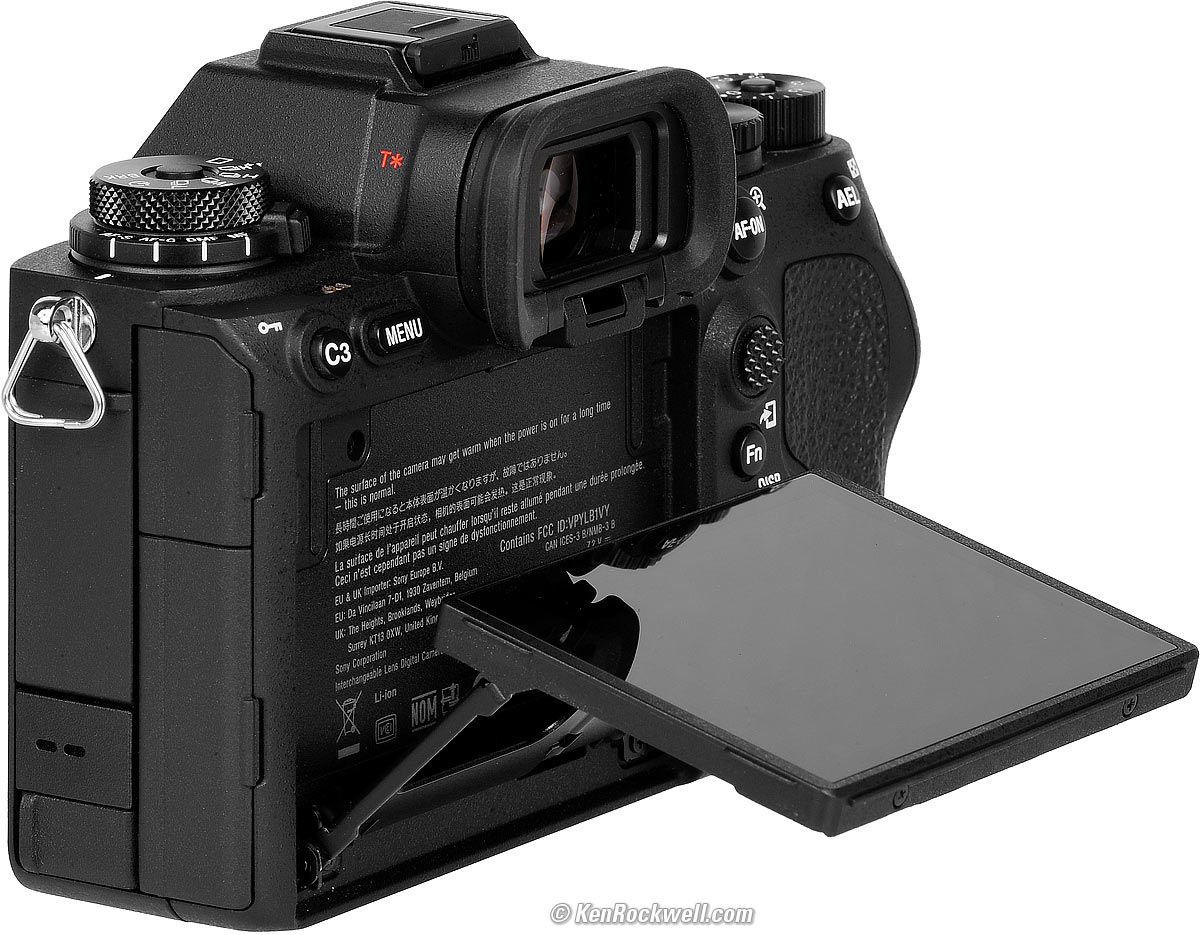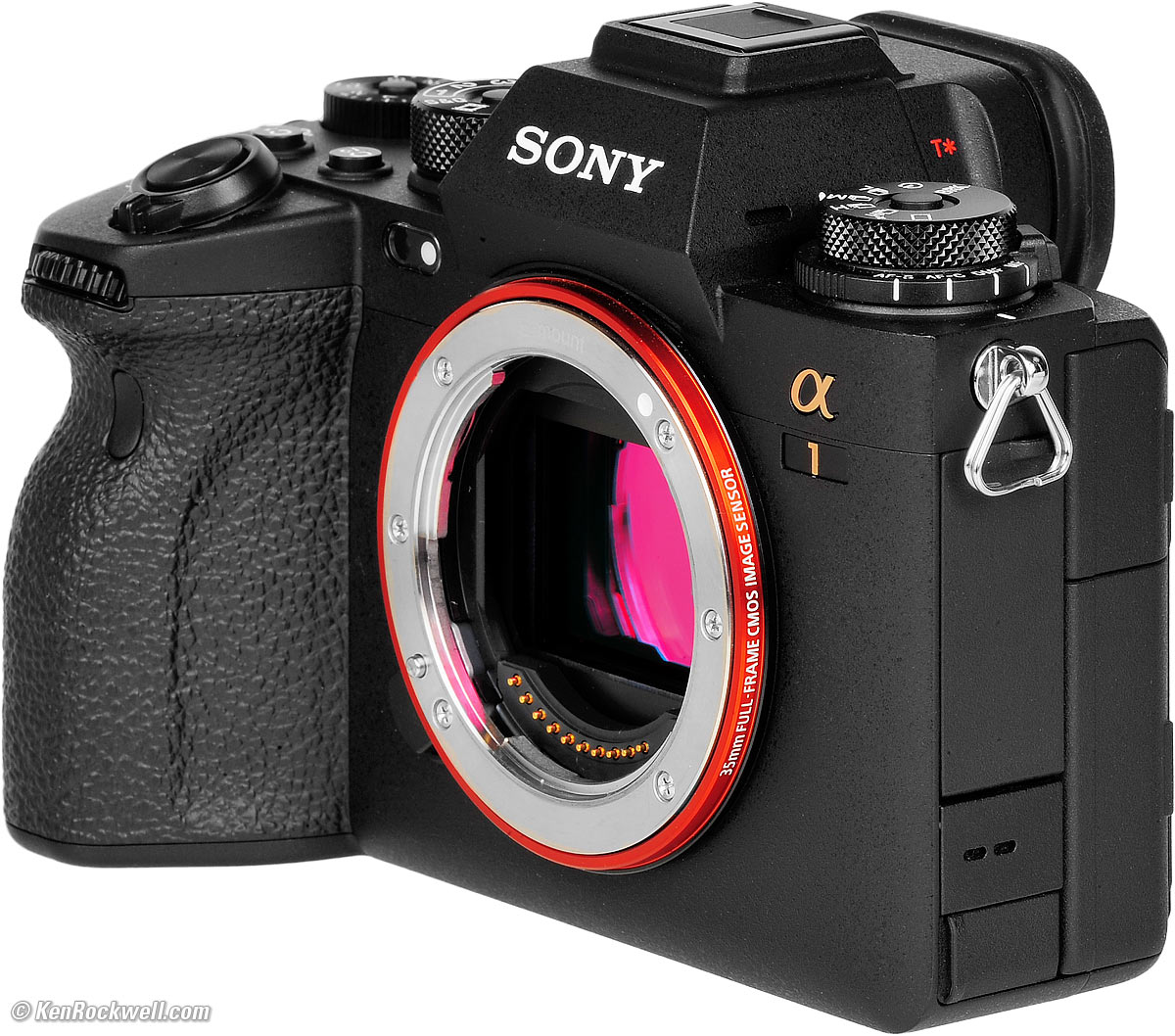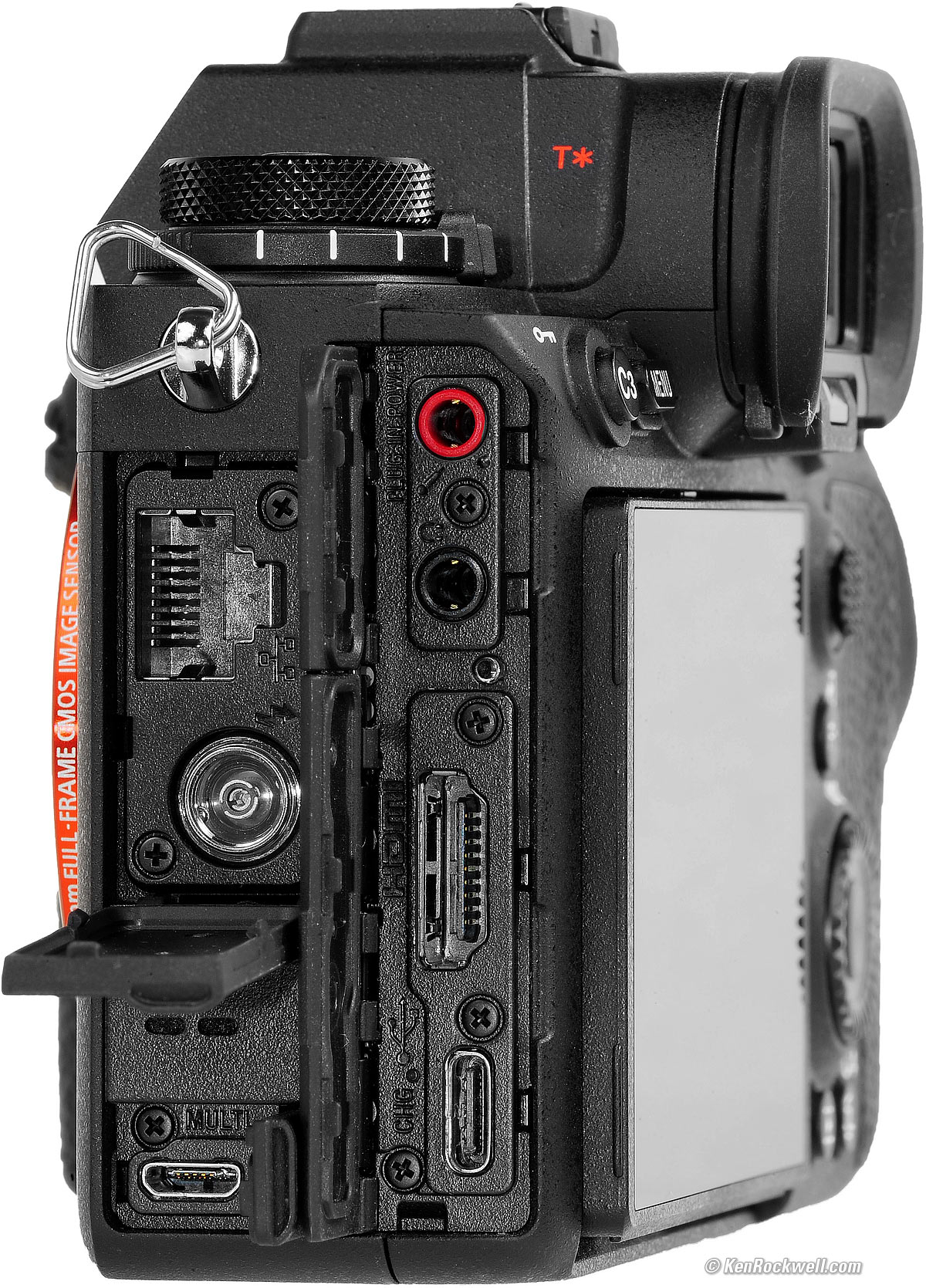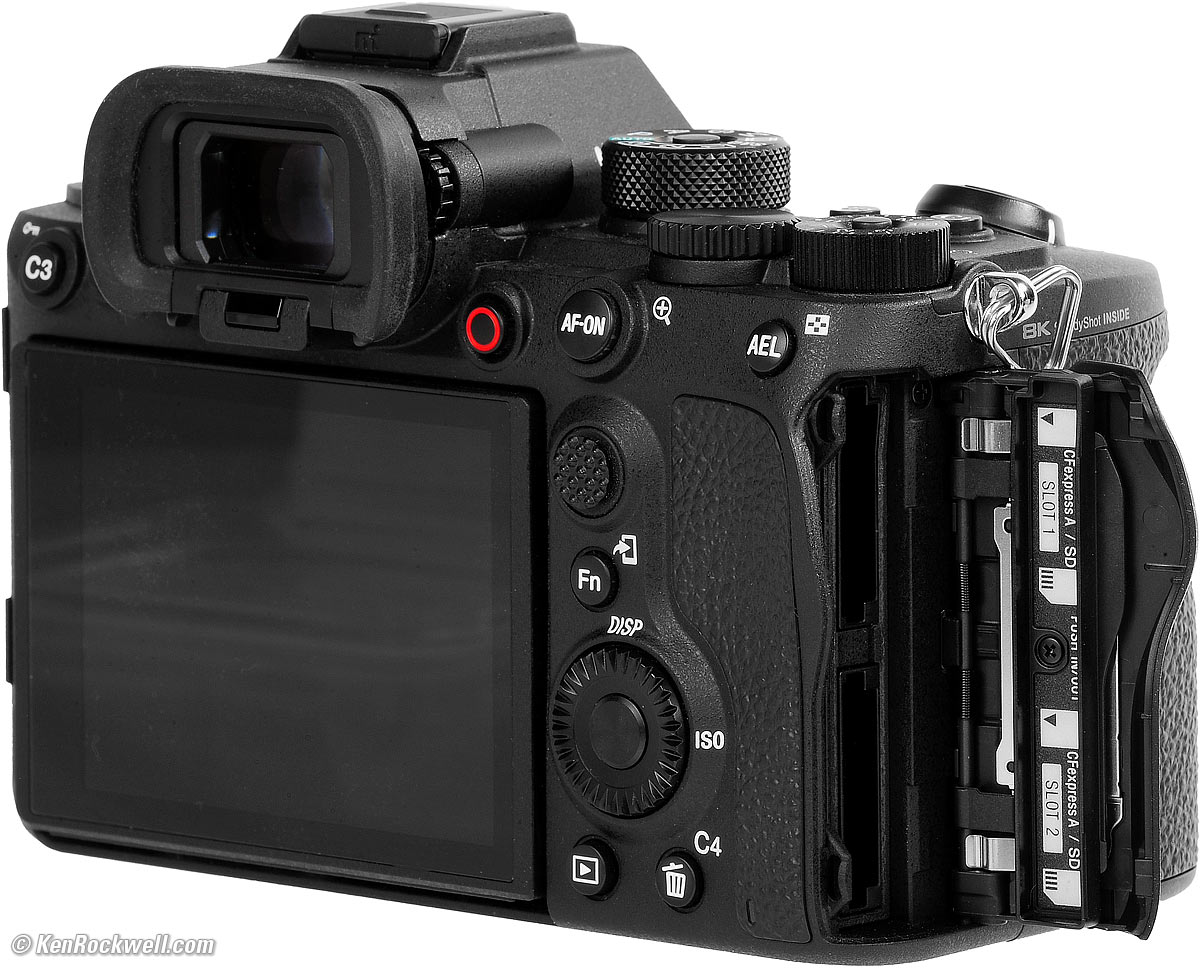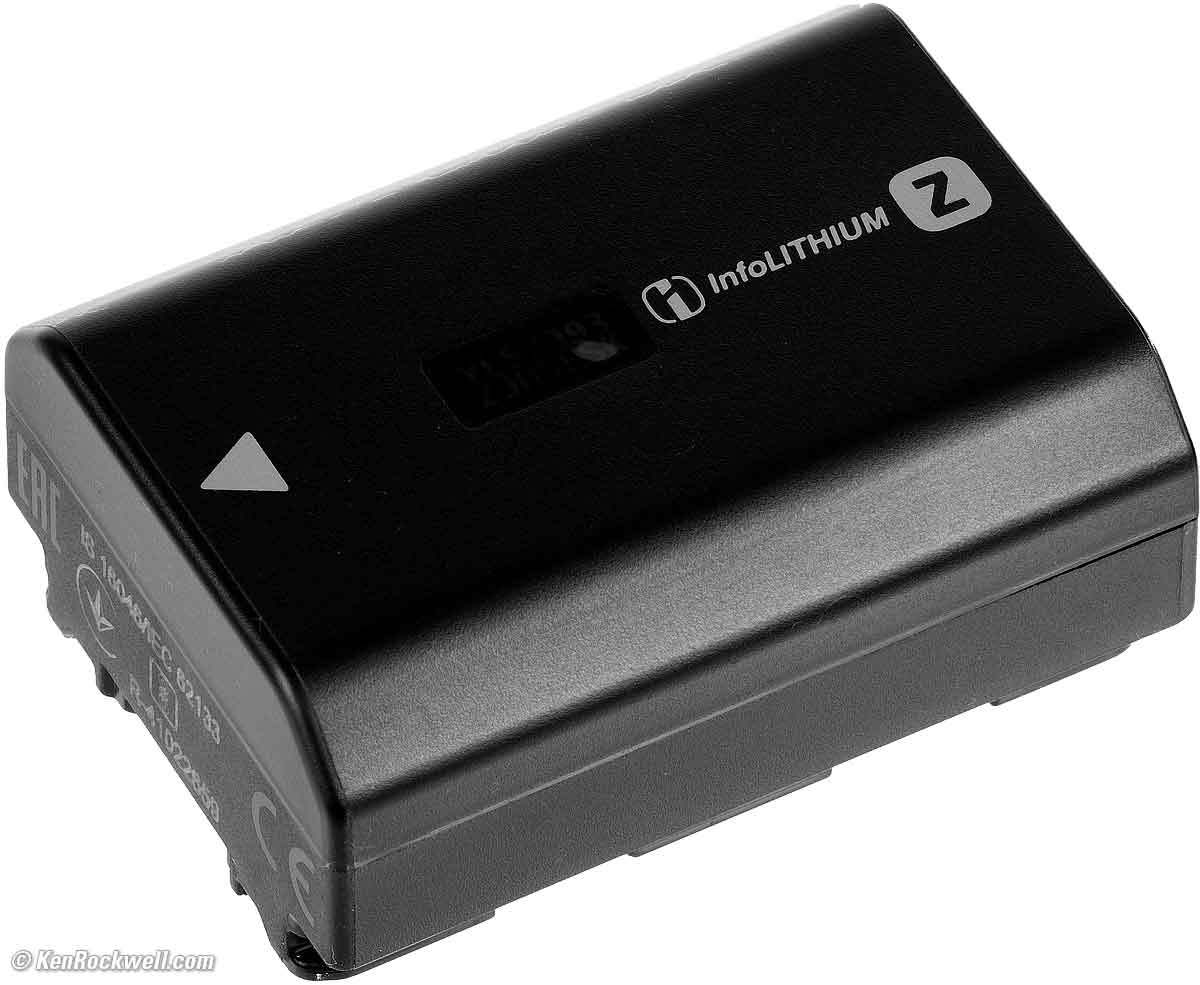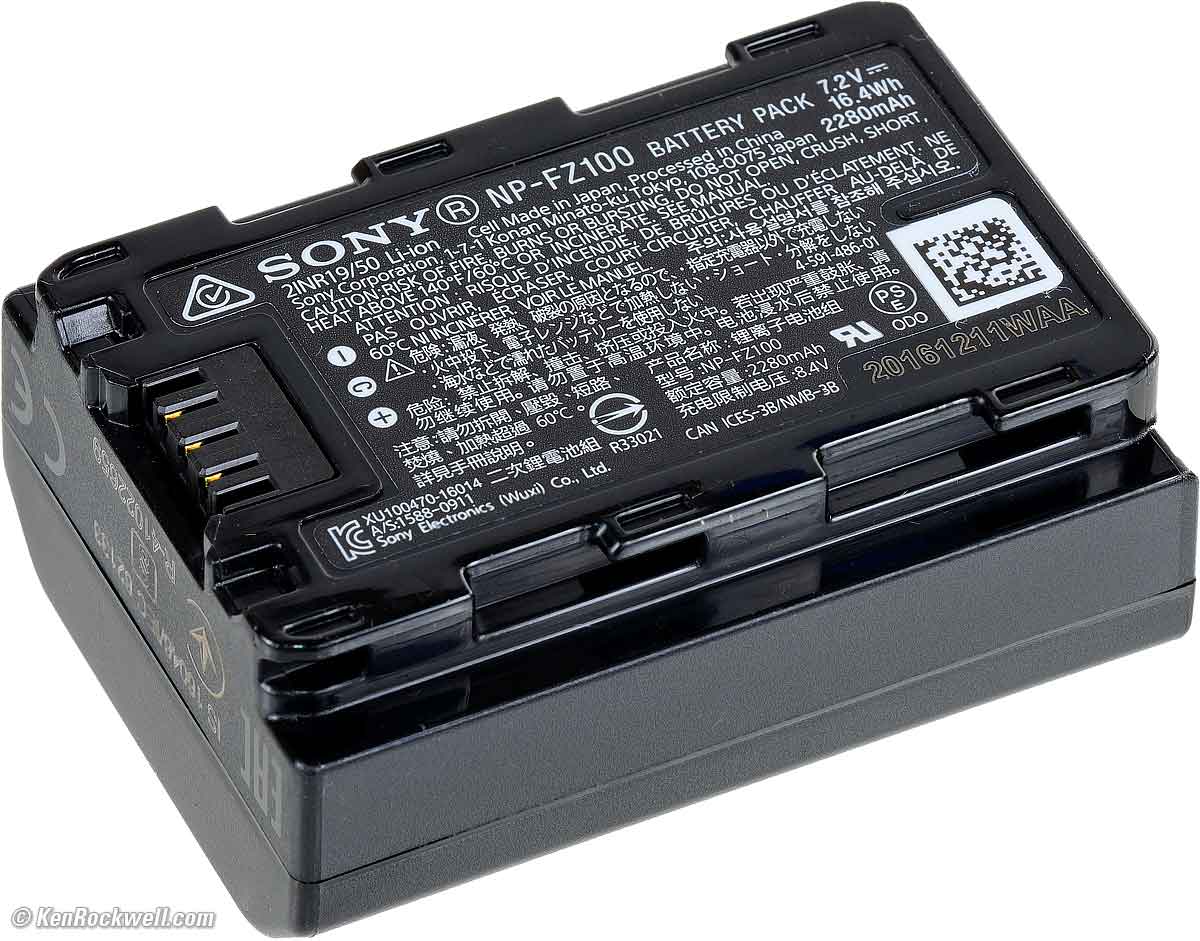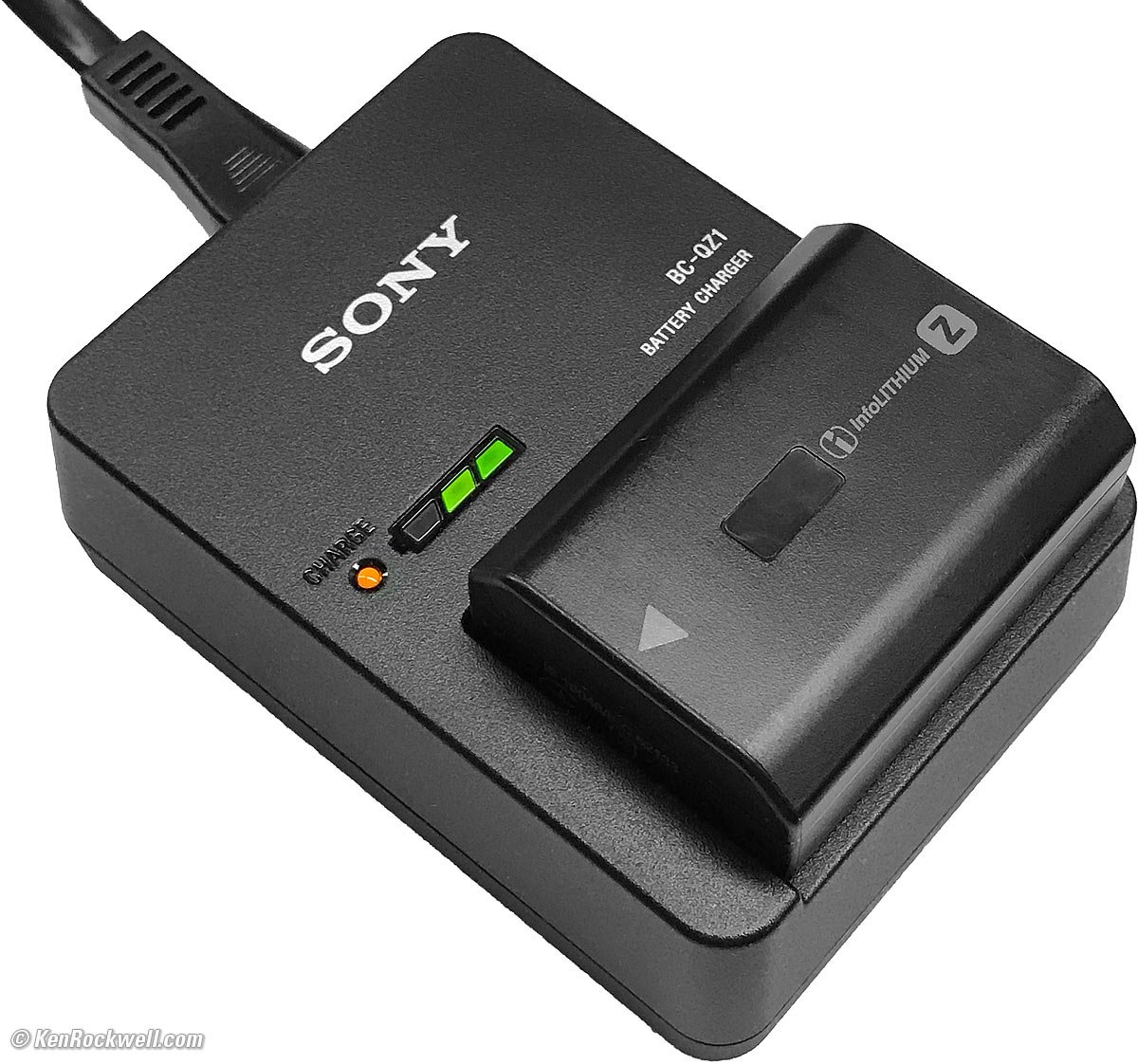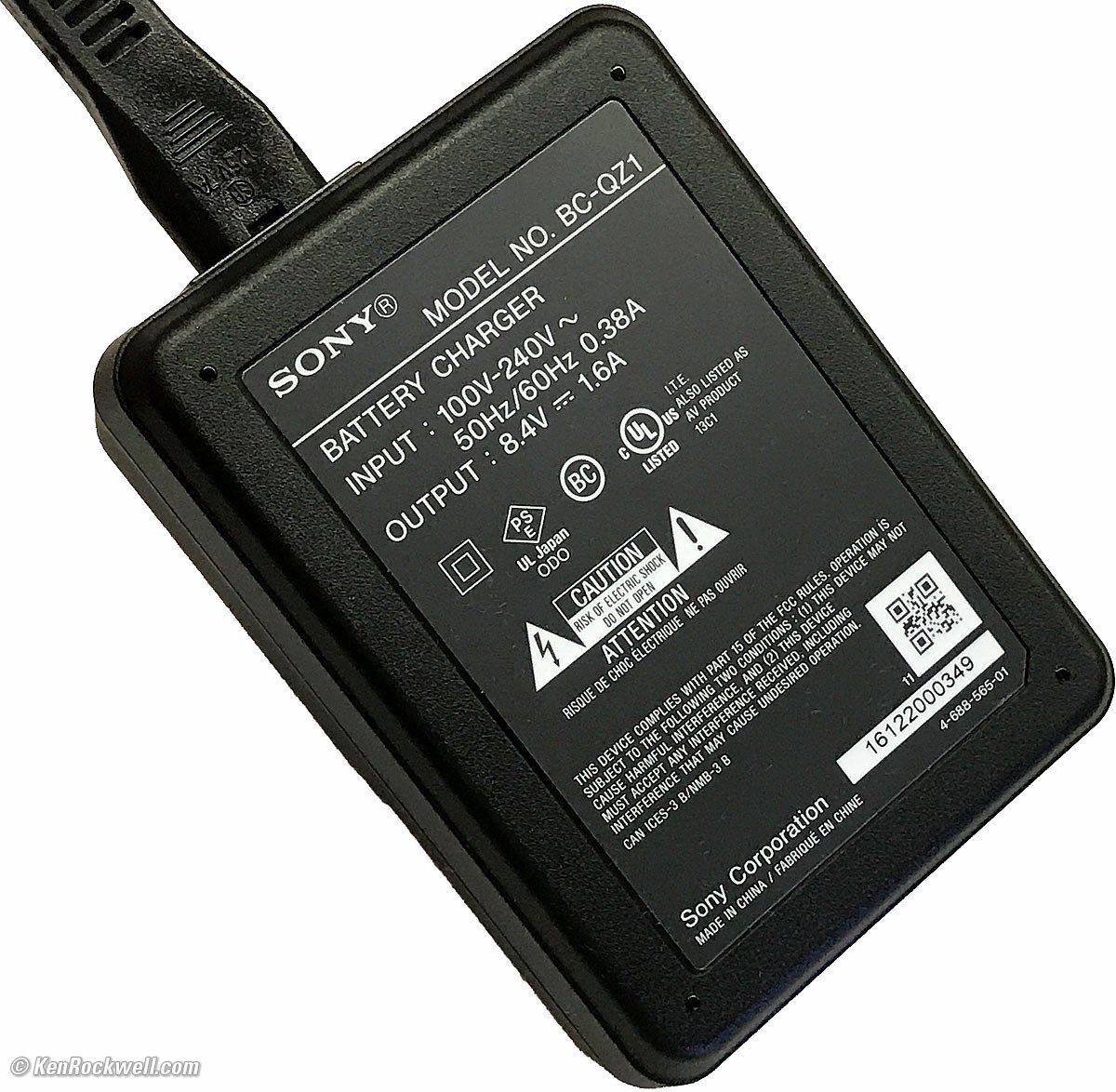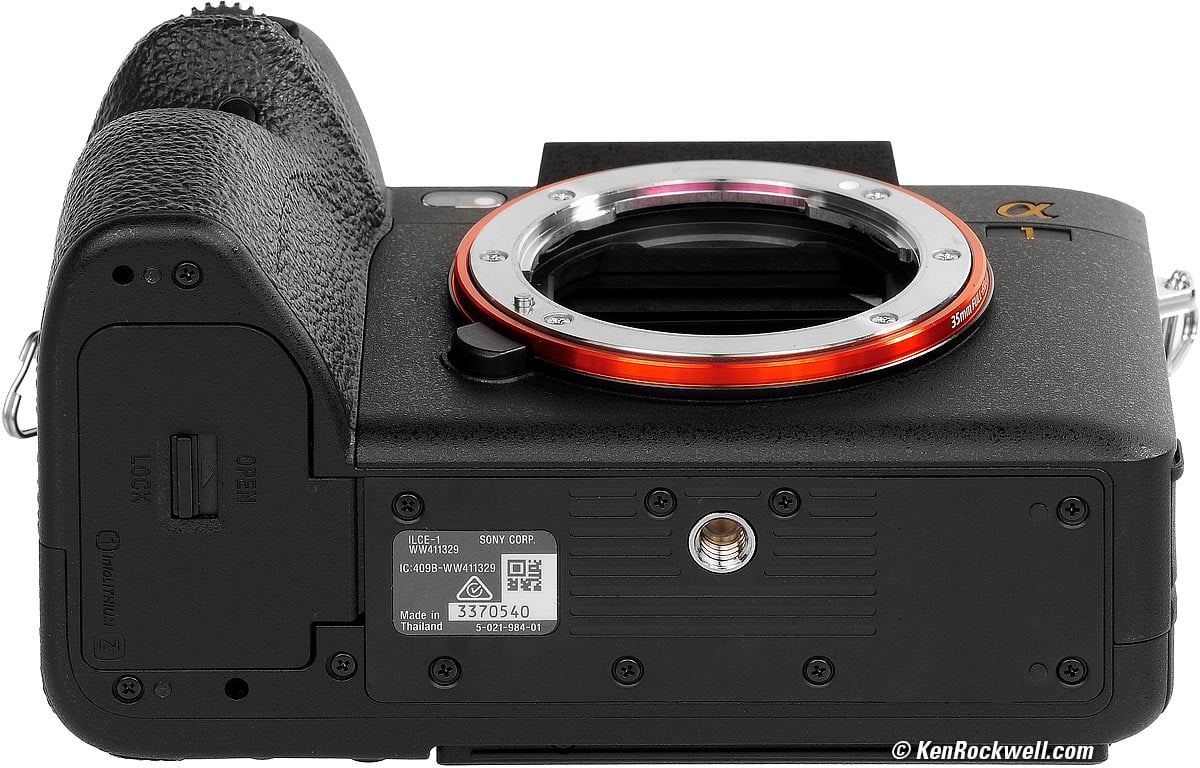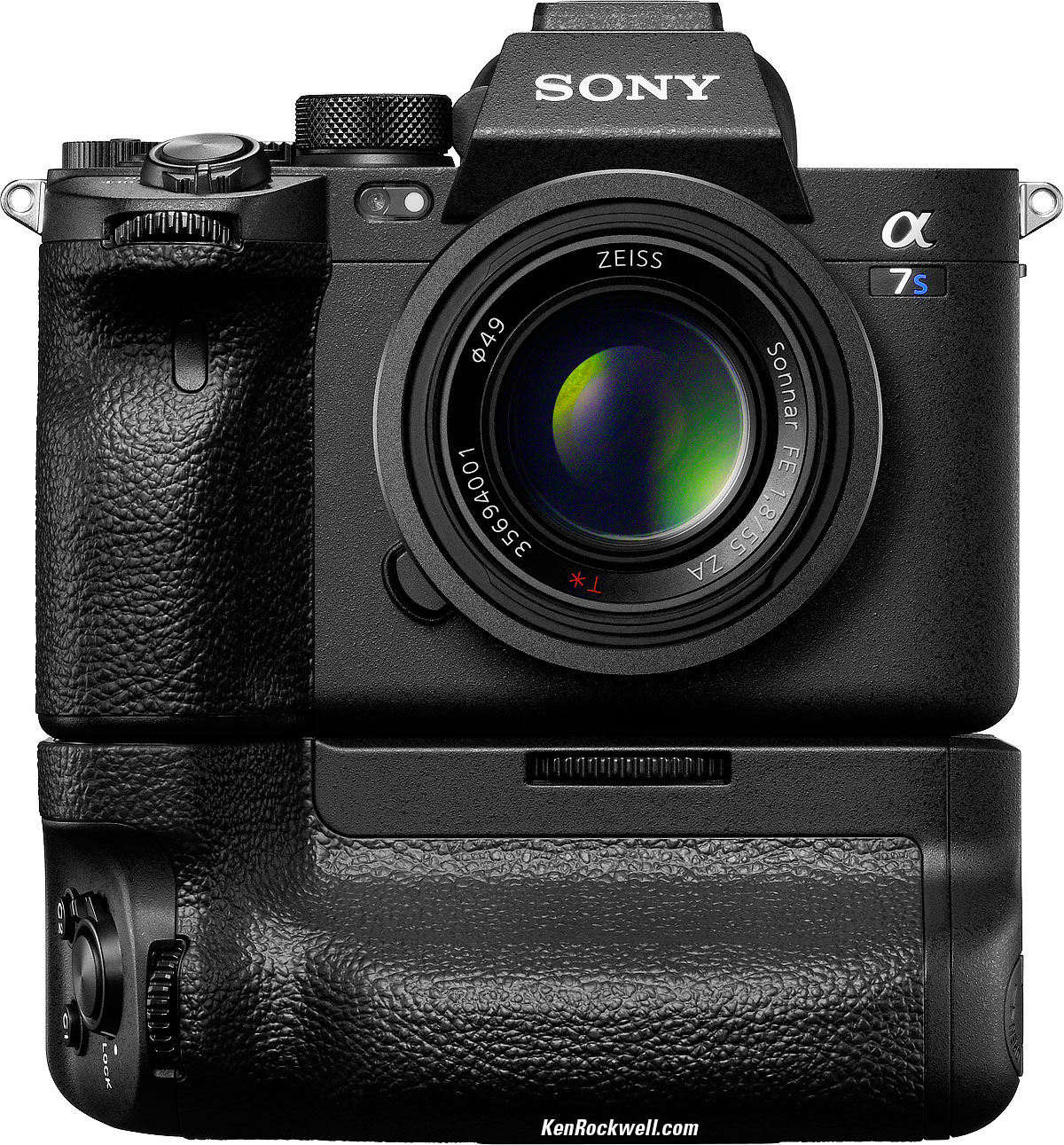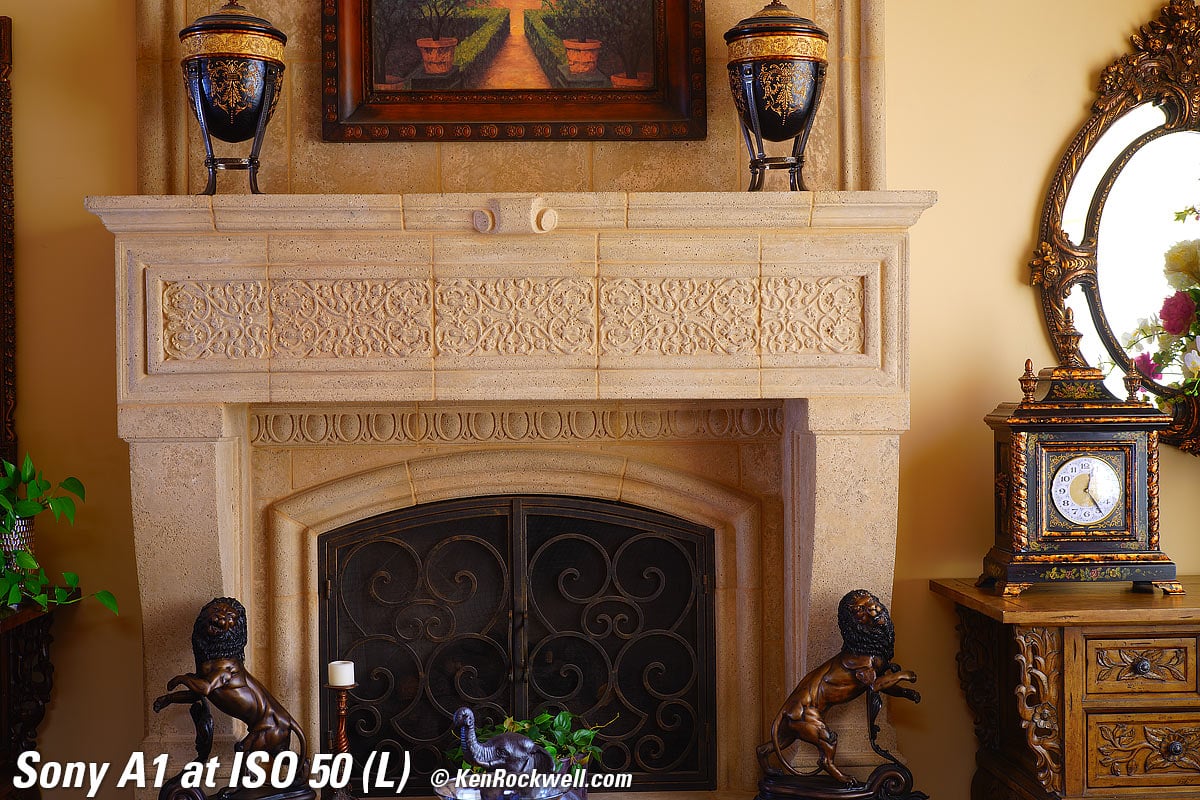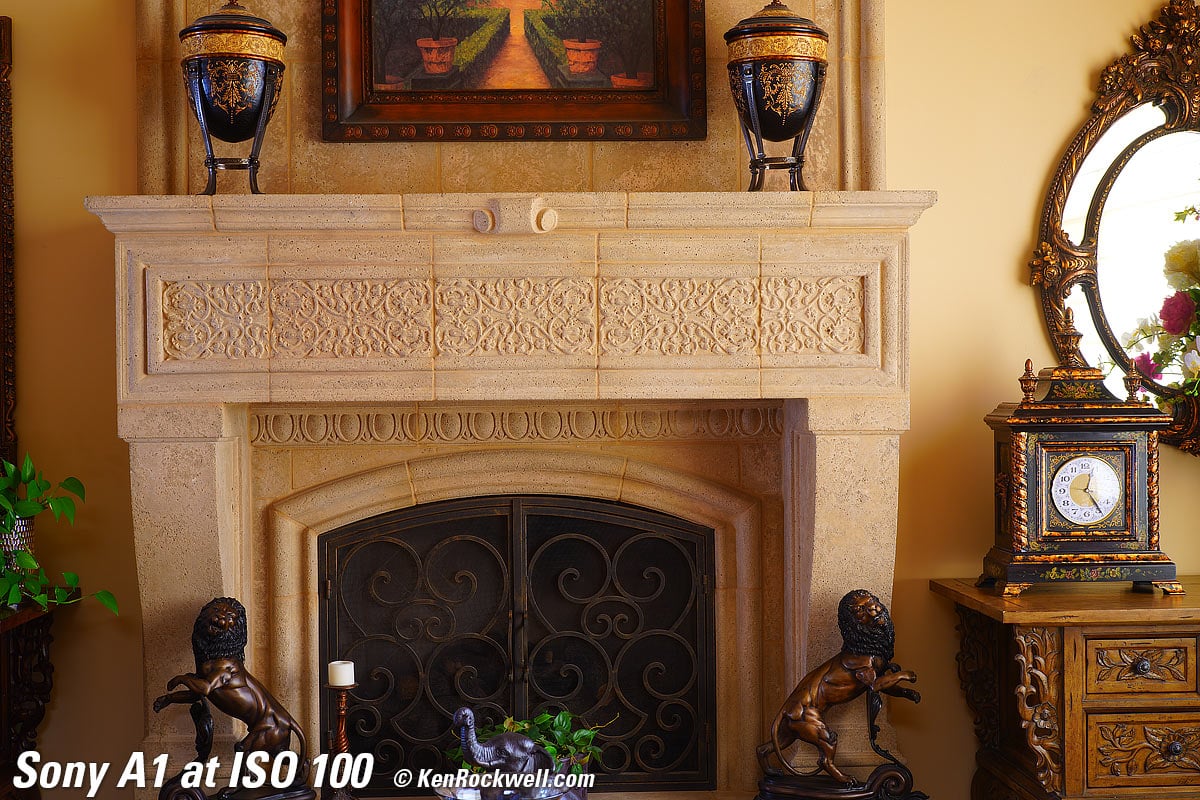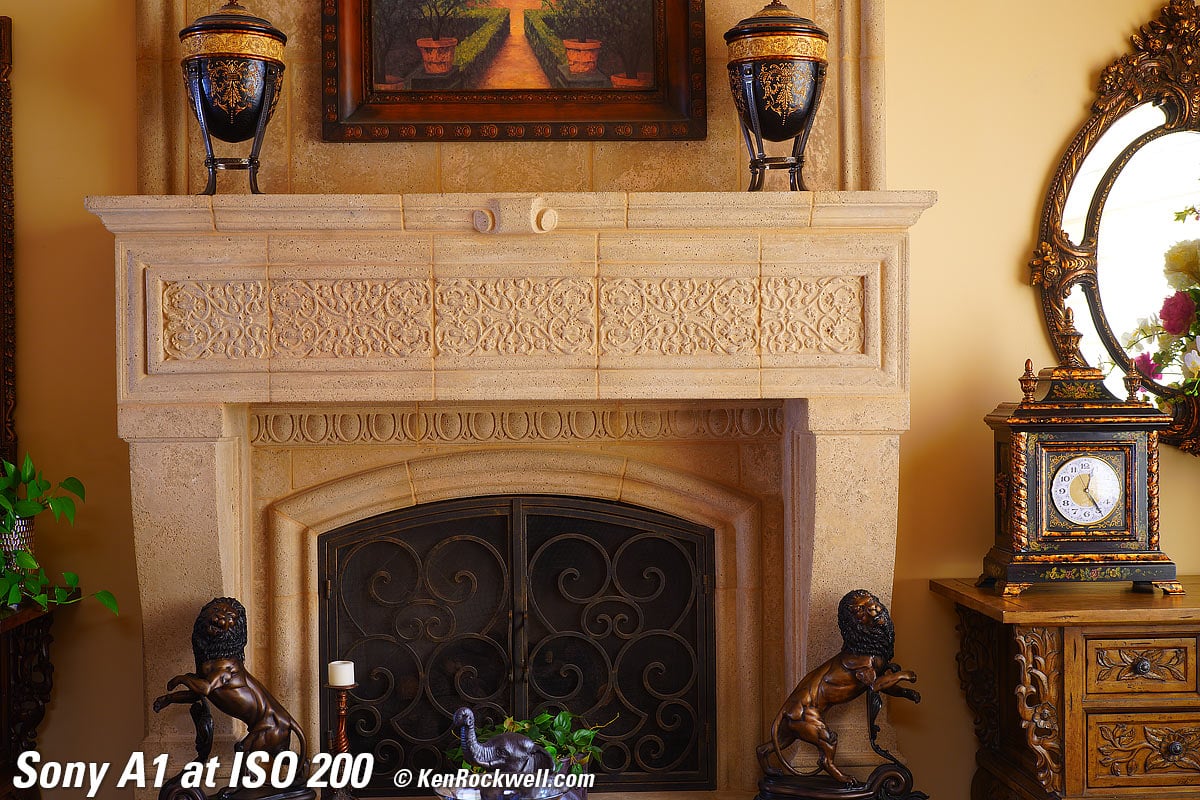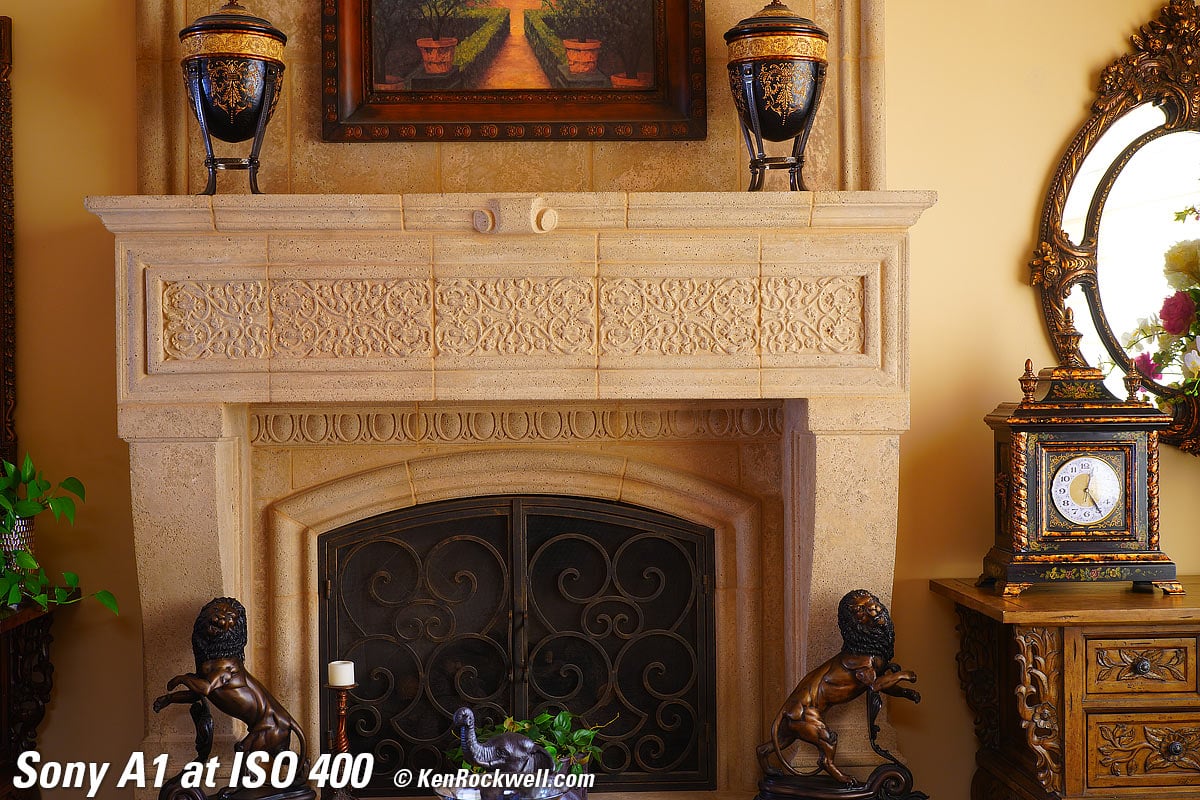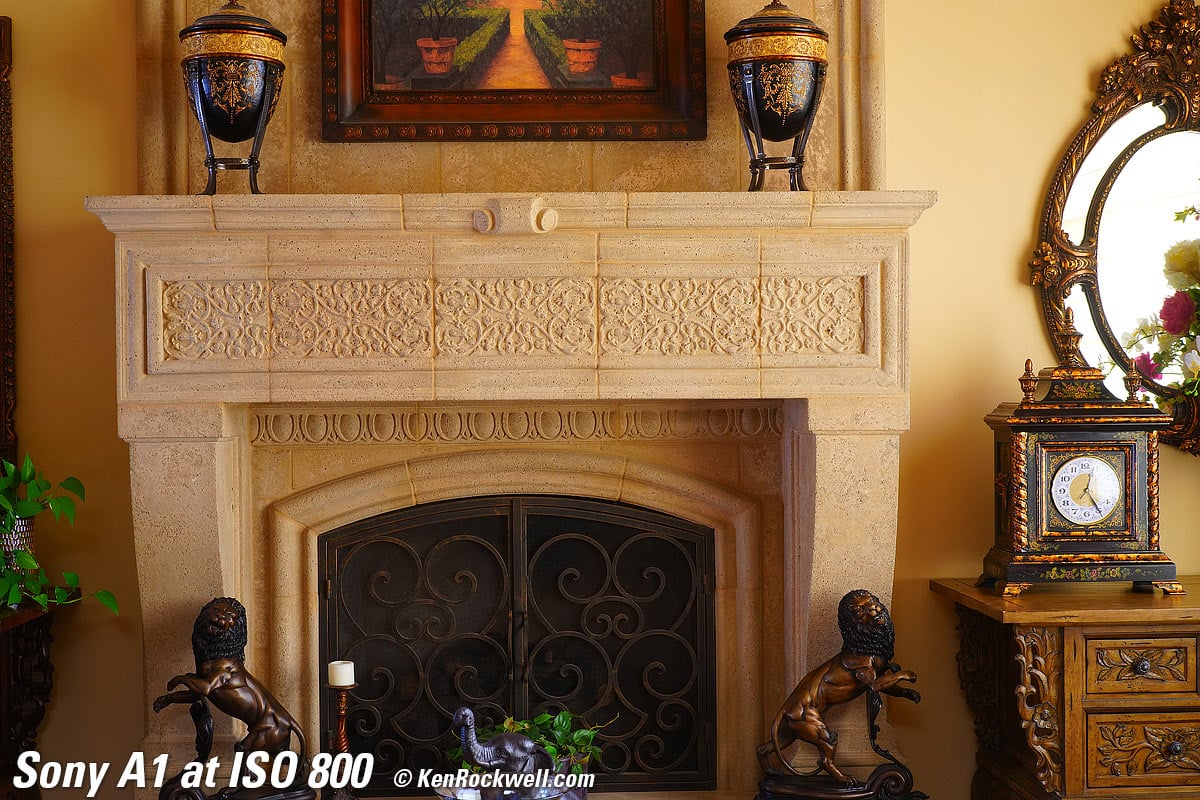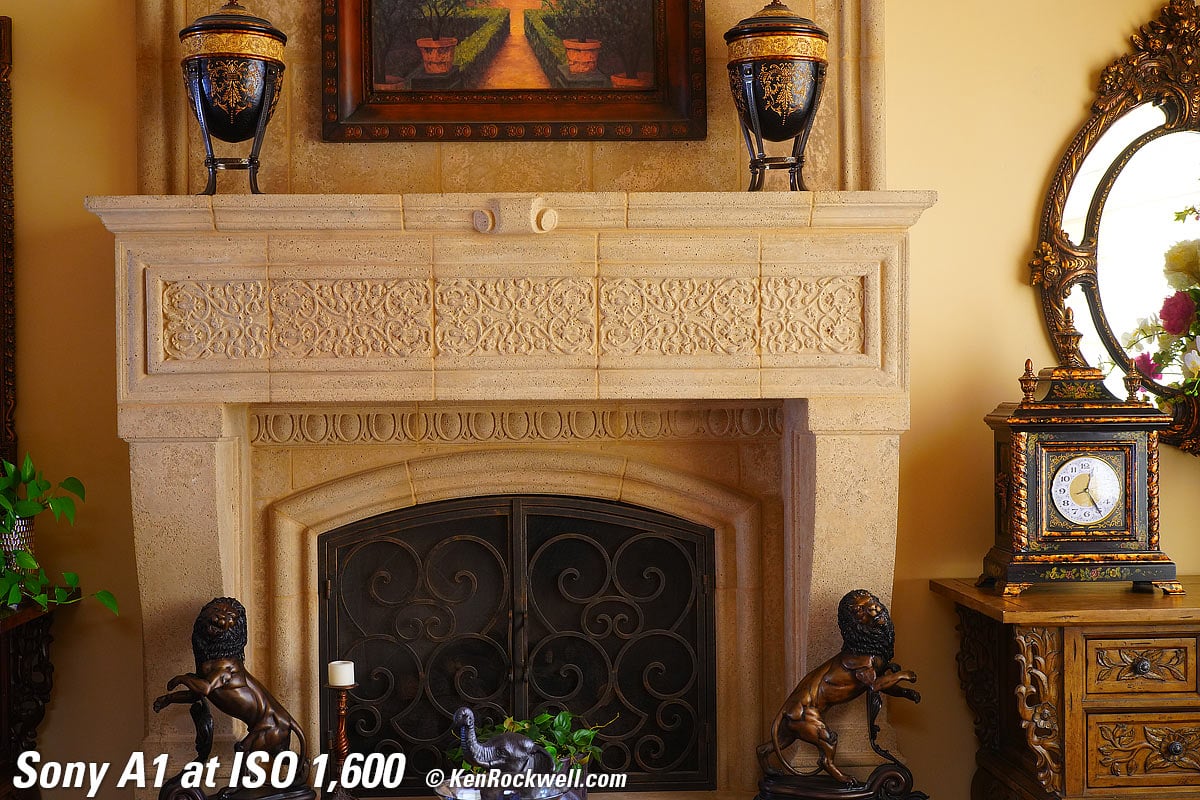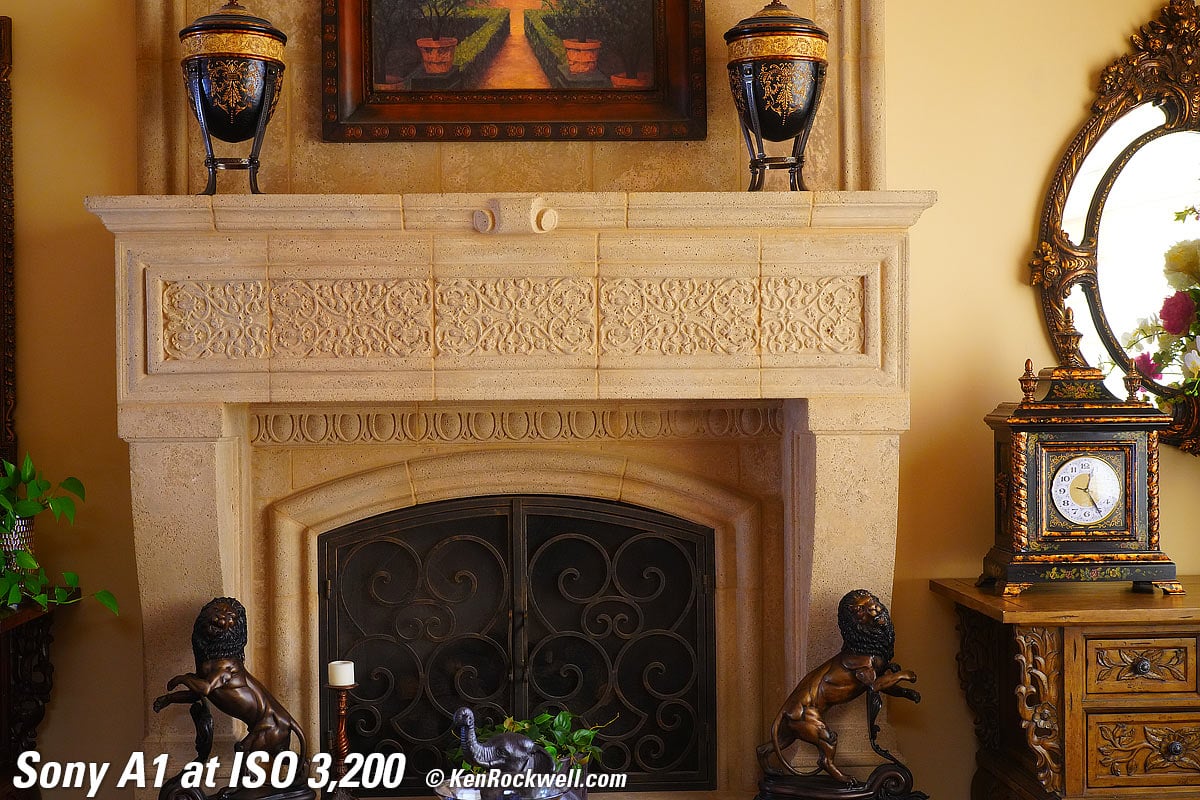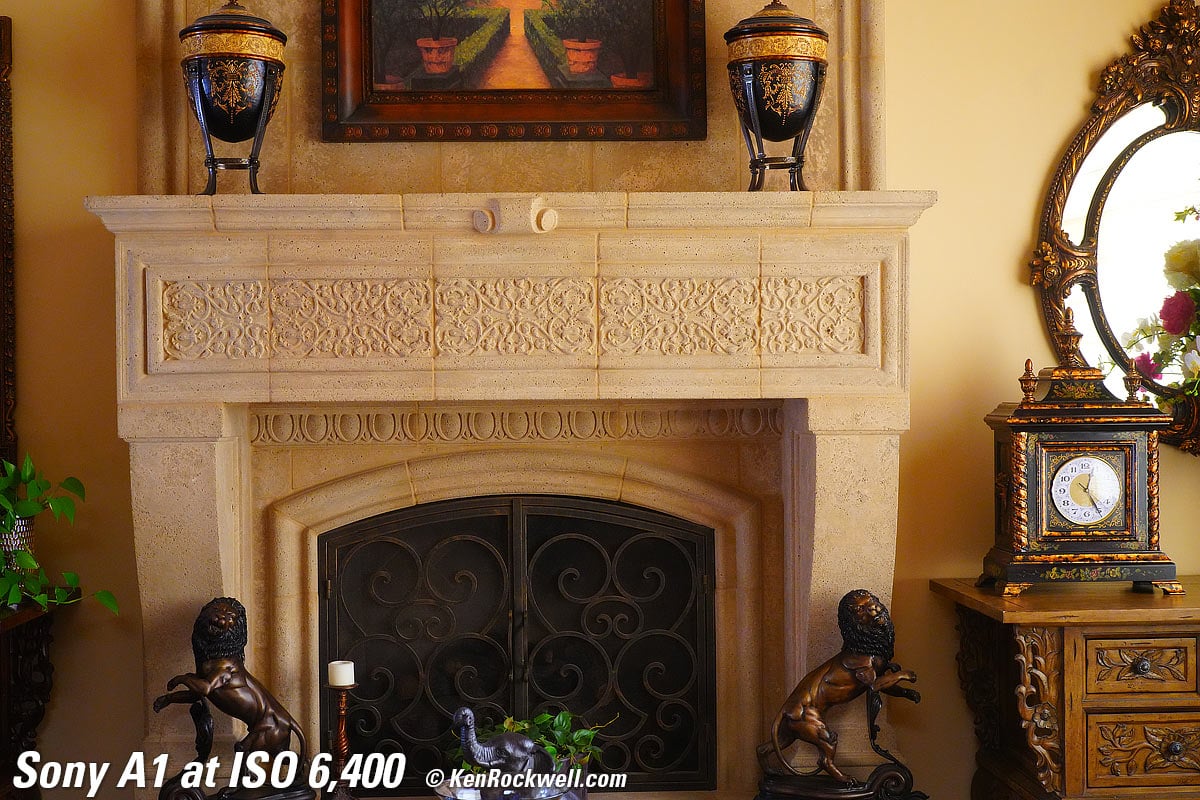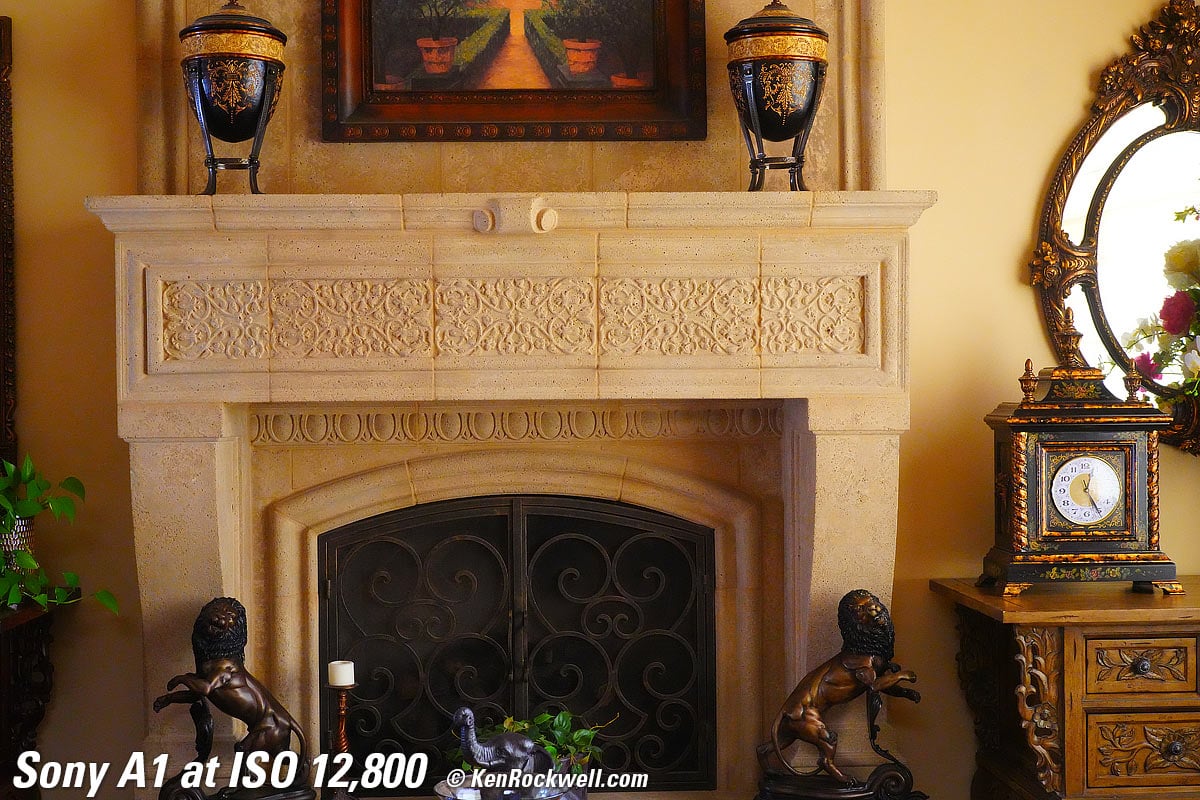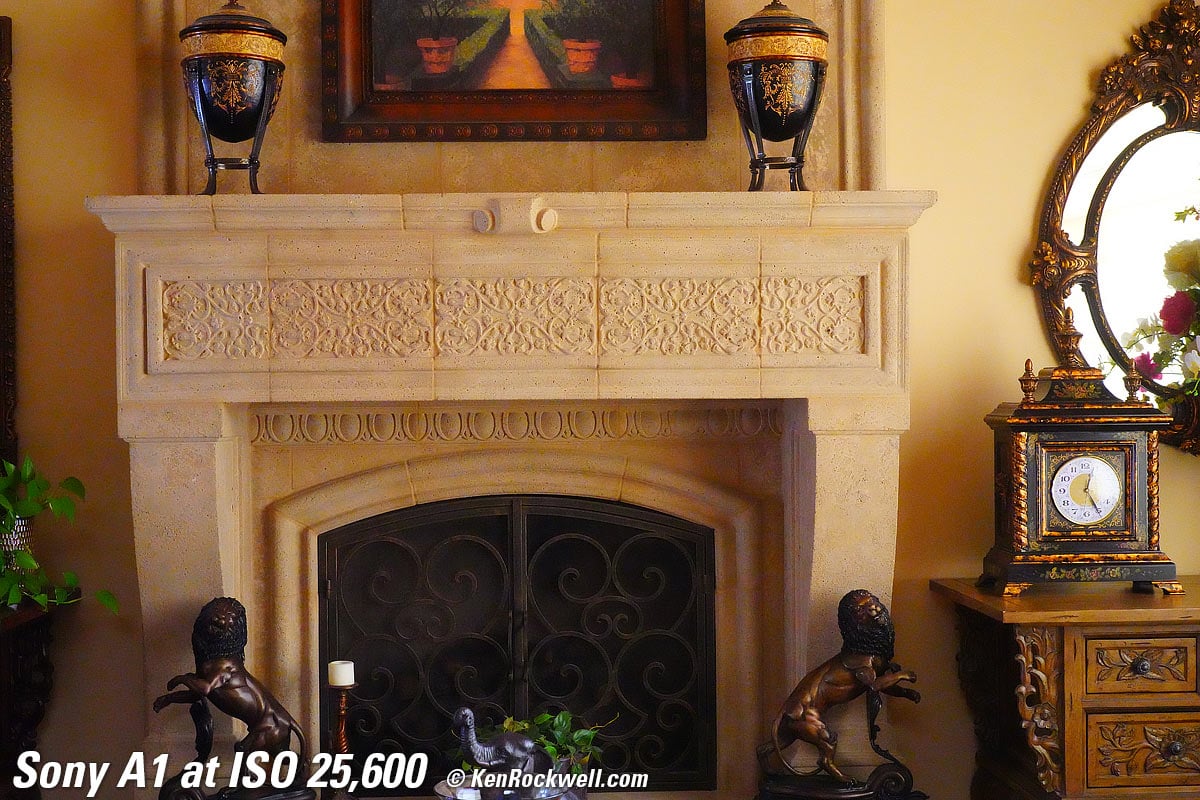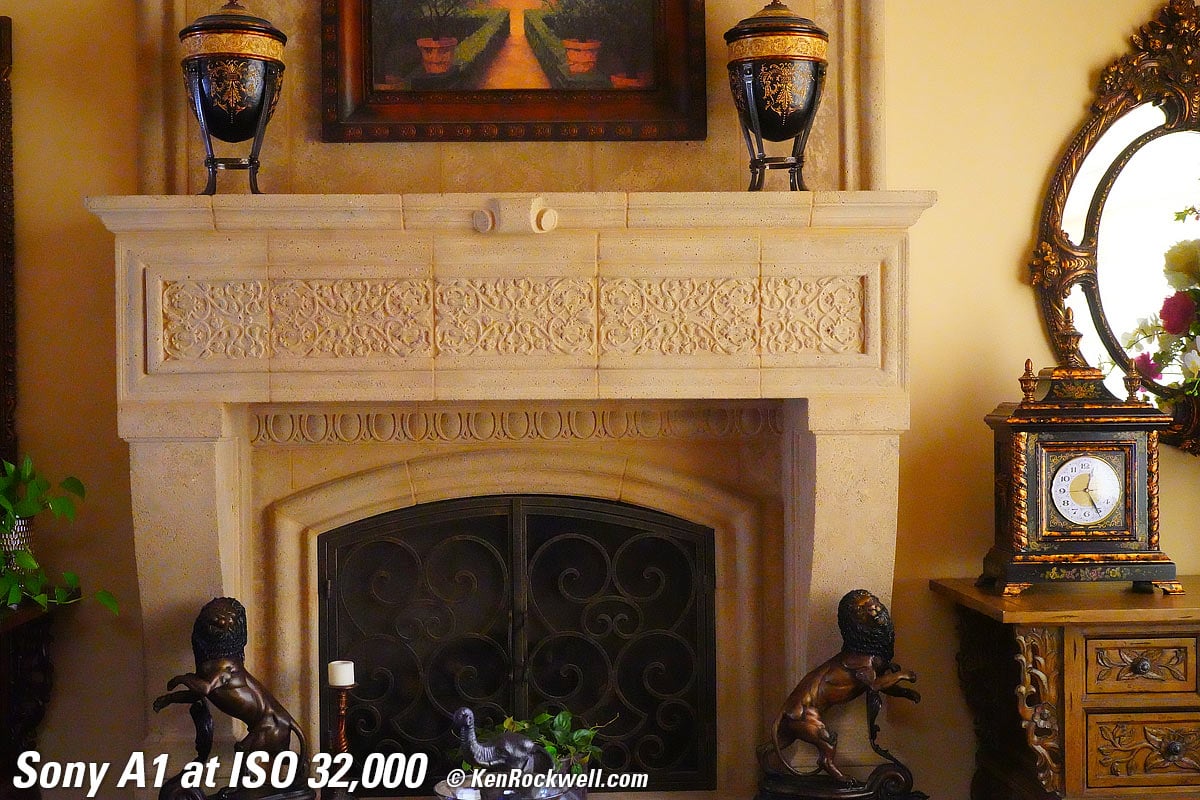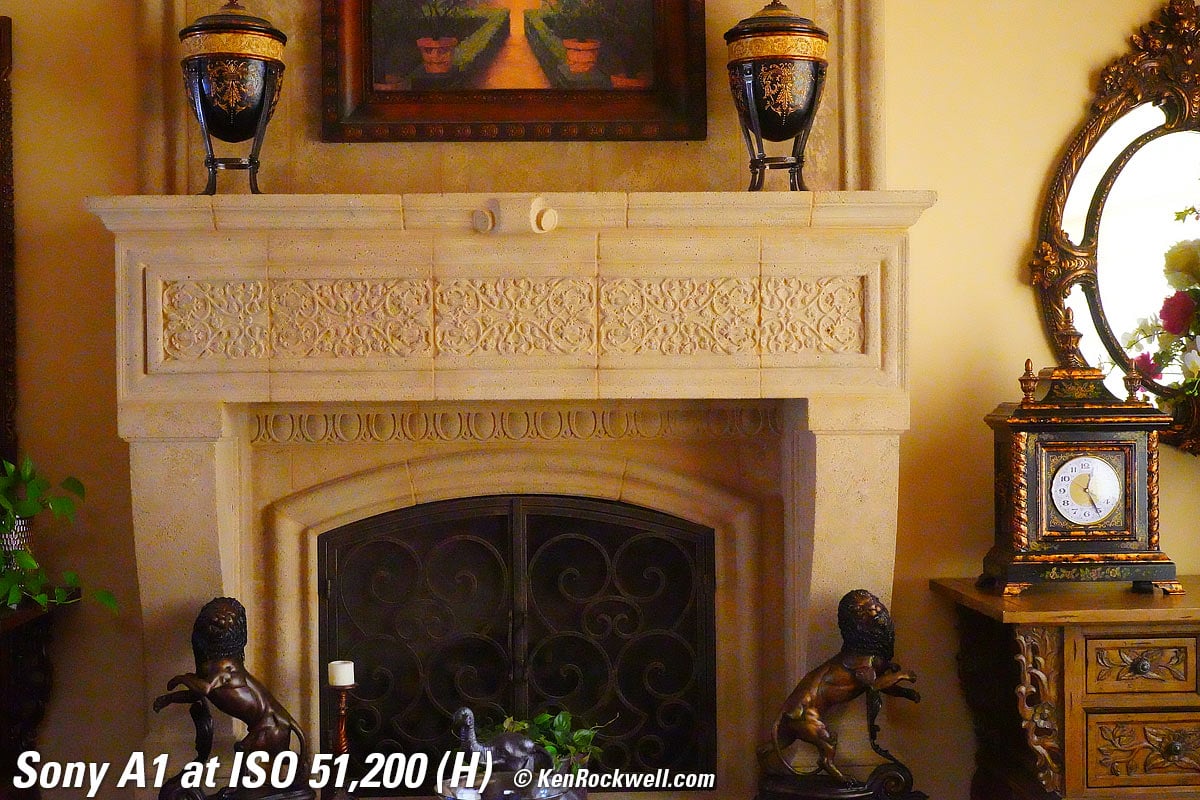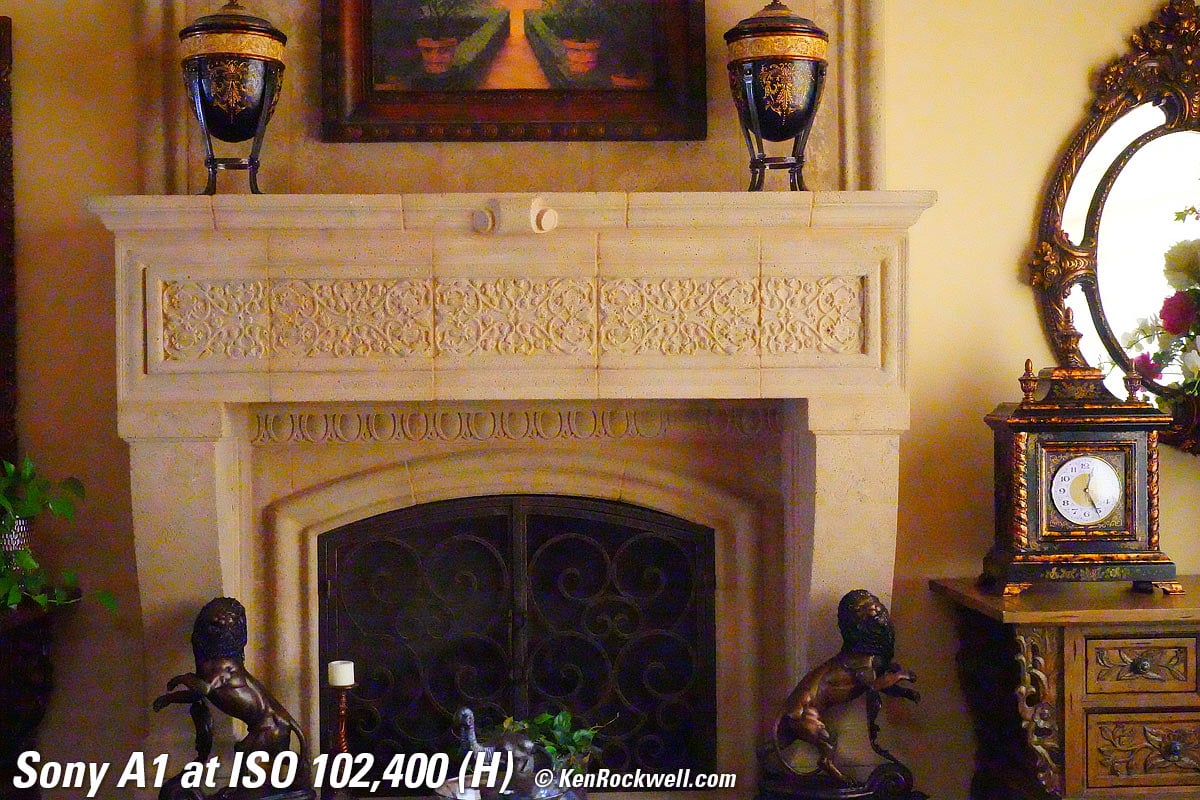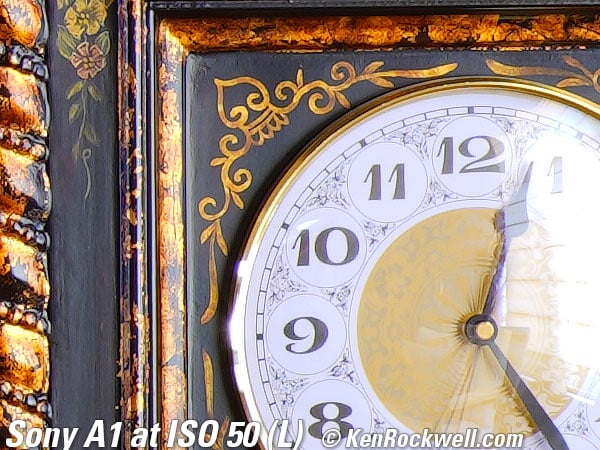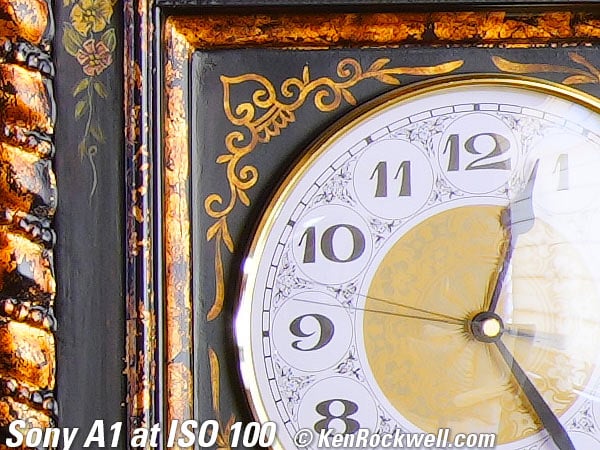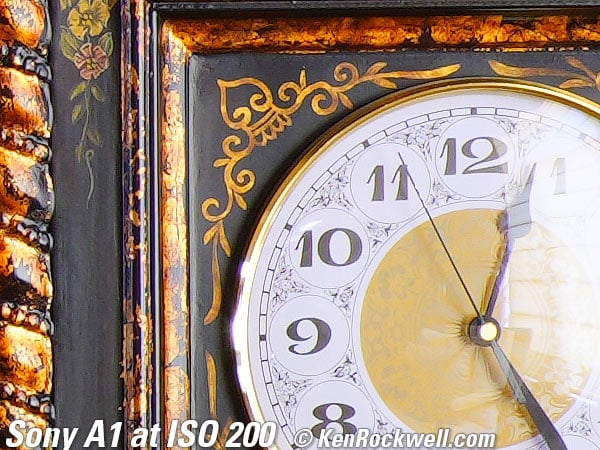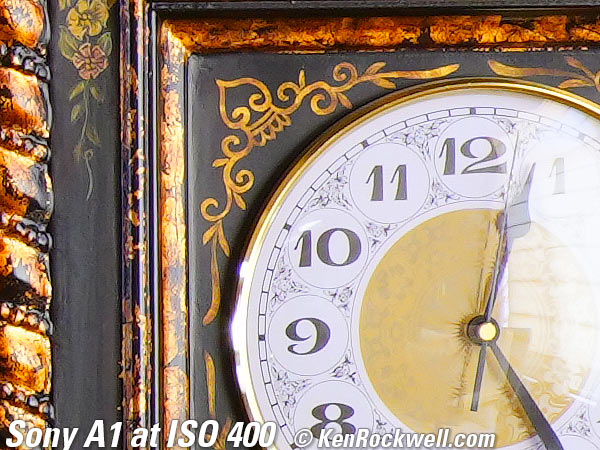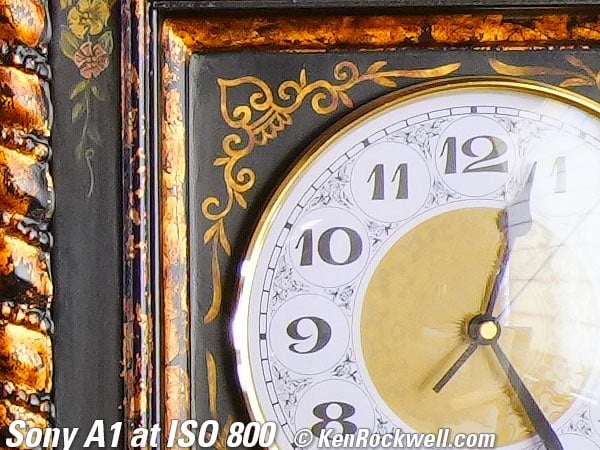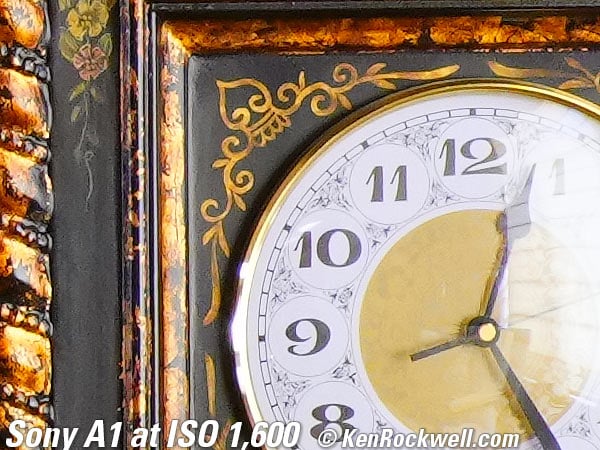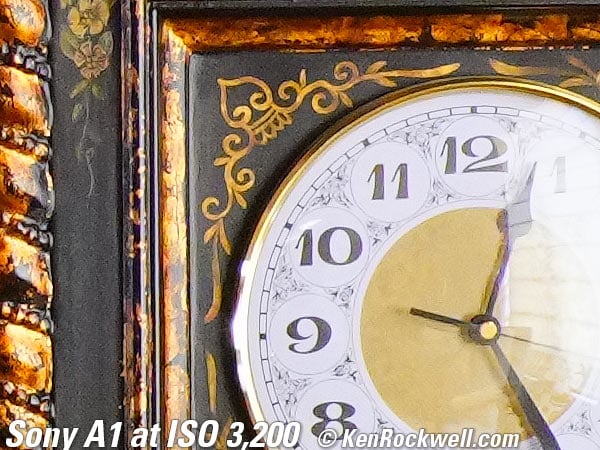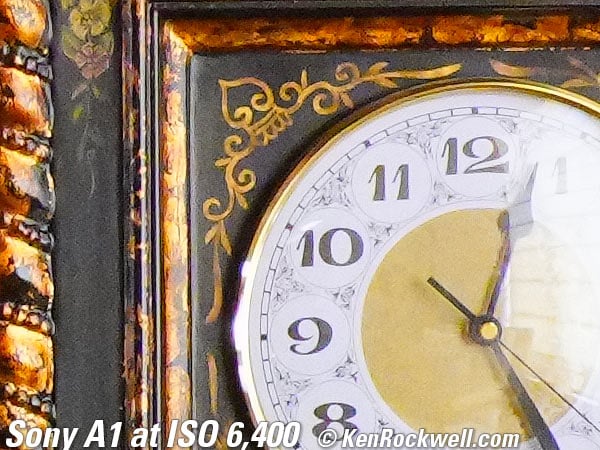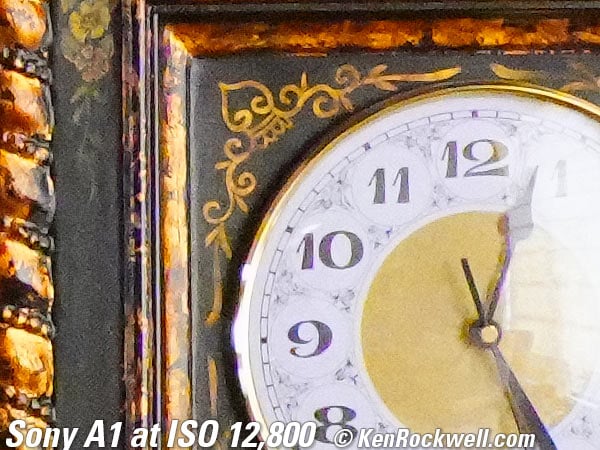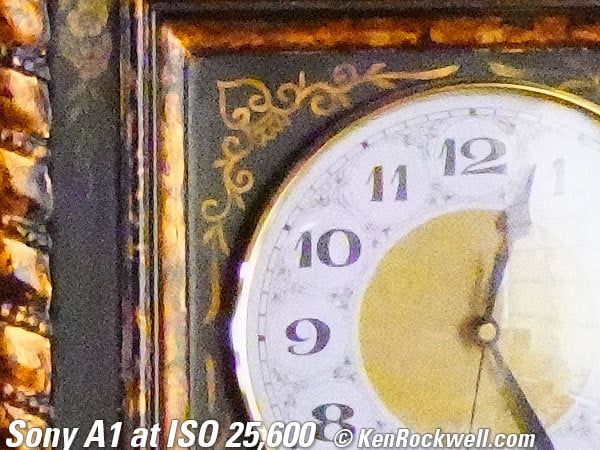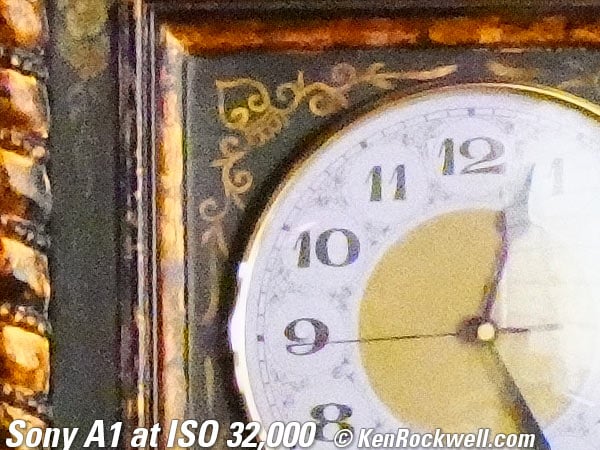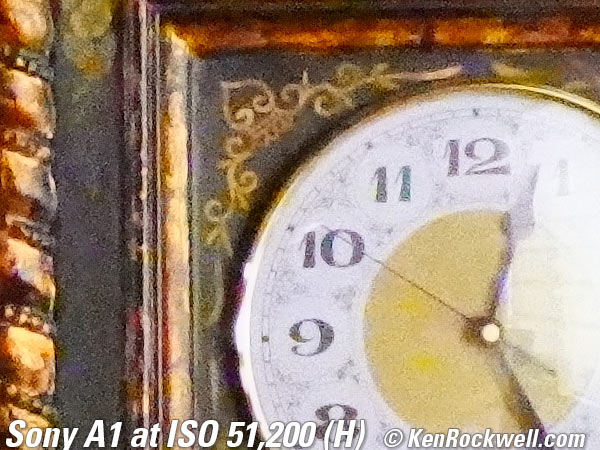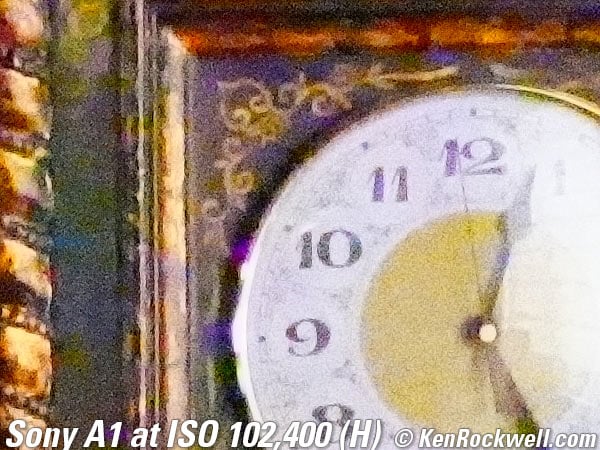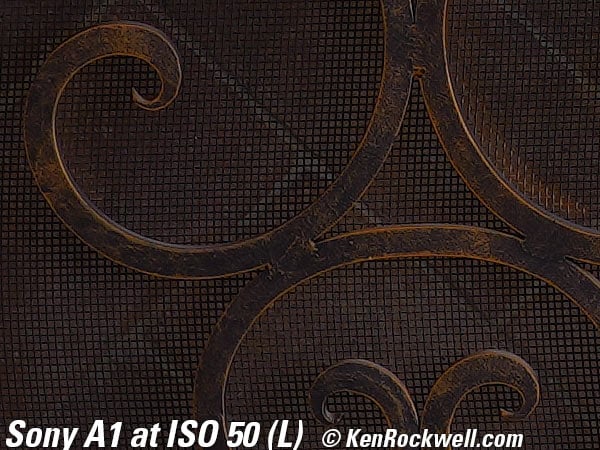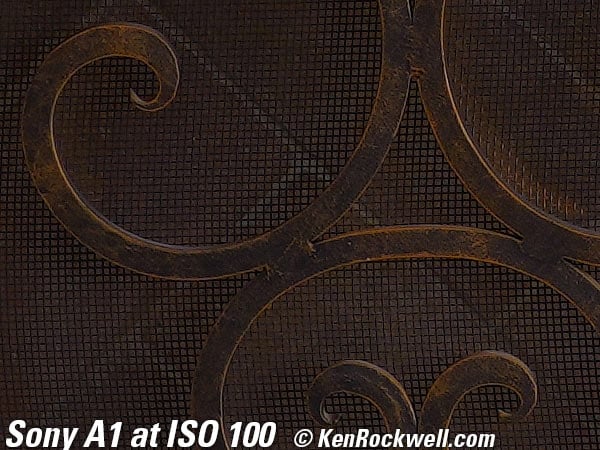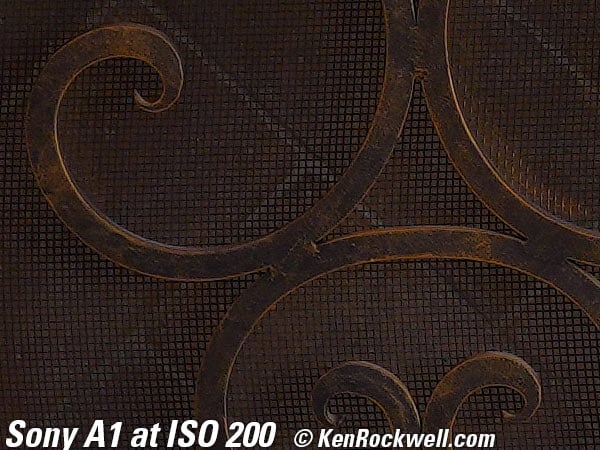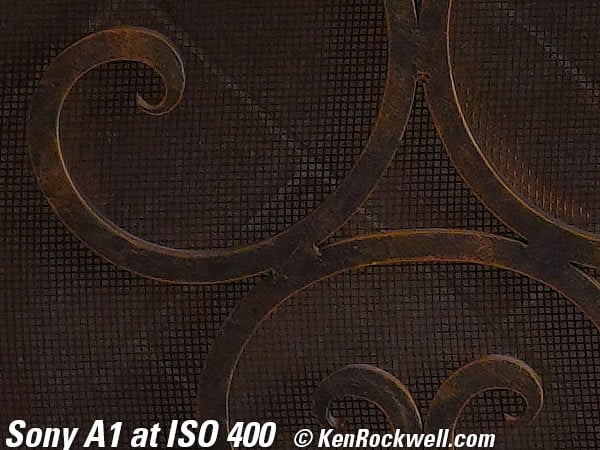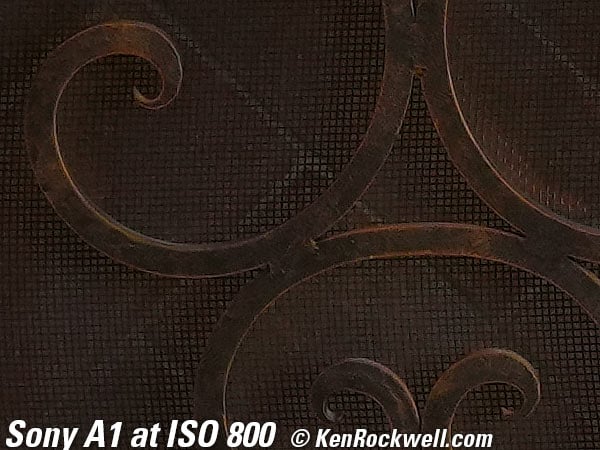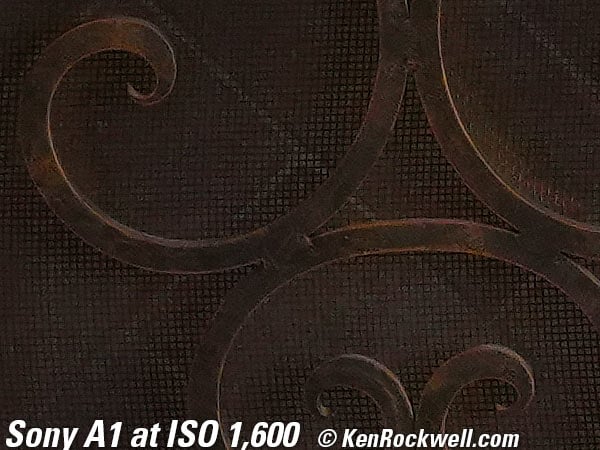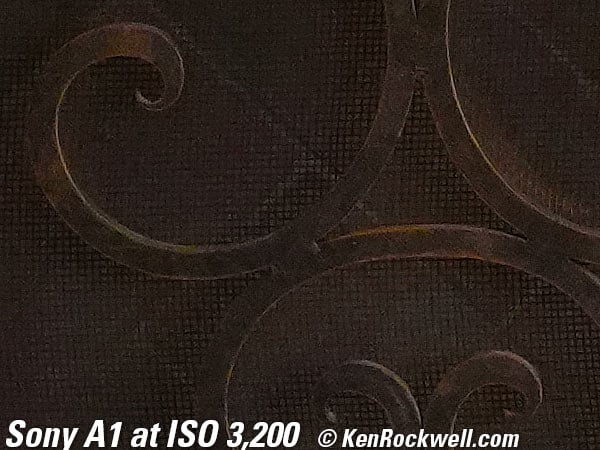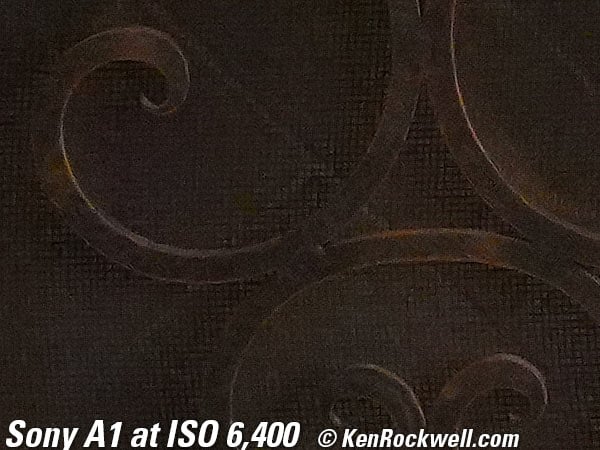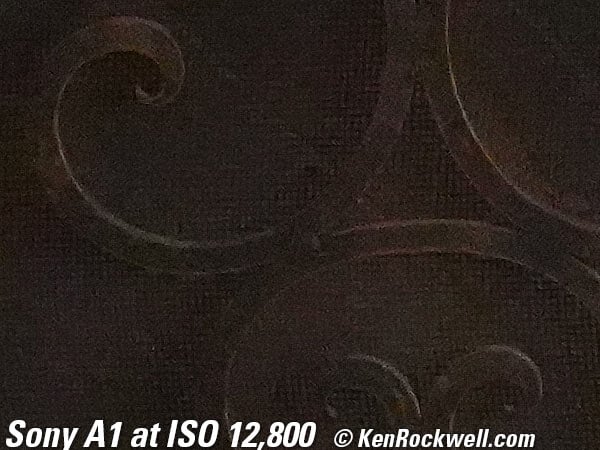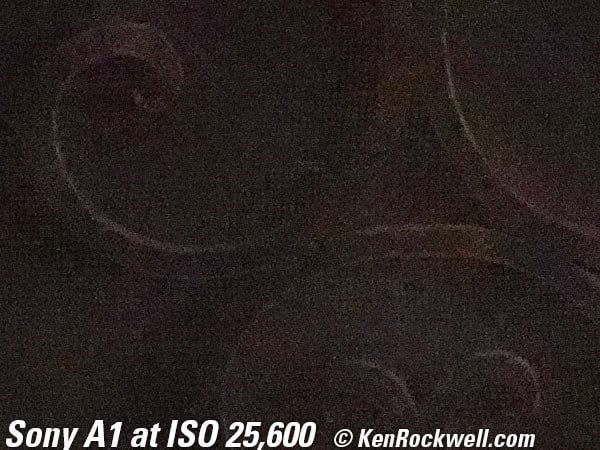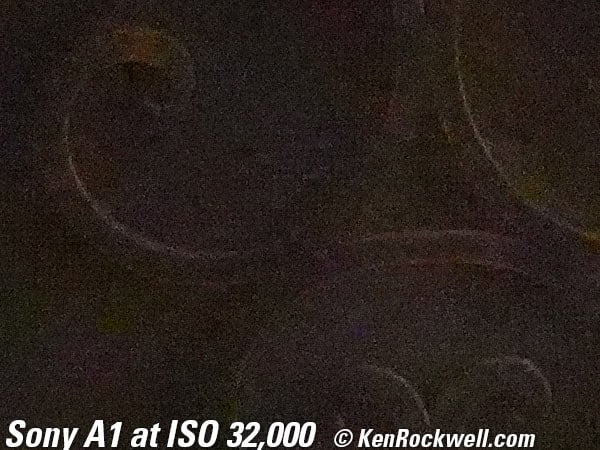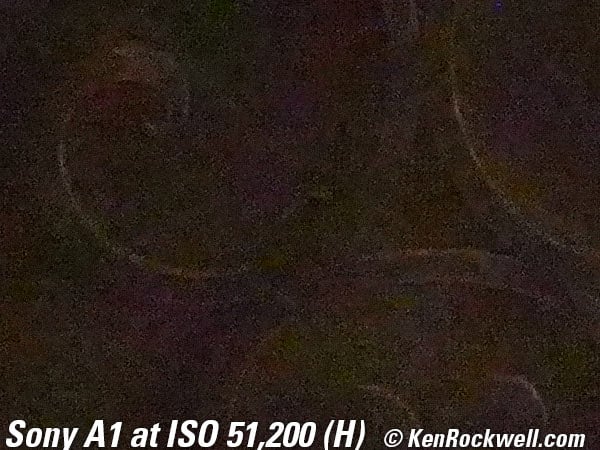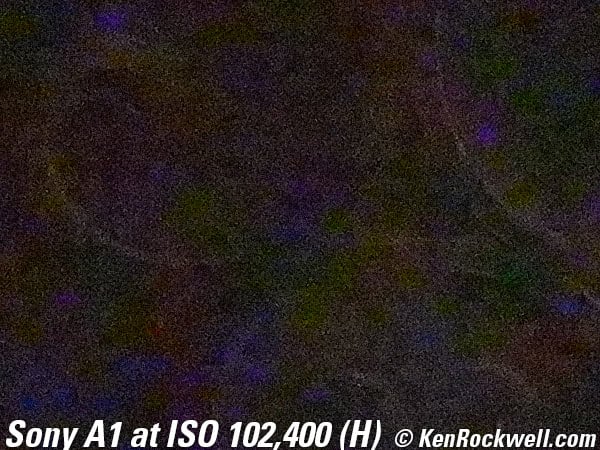Sony A1
30 FPS 50 MP Full Frame, ISO 32,000/102,400(H), 8K/30, 4K/119.88
Sony's Best Camera, ever (2021-)
Sample Images Intro New Good Bad Missing
Specifications Accessories Performance
Compared User's Guide Recommendations
Sony: A9 III A1 A9 II A9 A7R V A7R IV A7R III A7 IV A7 III A7R II A7S III A7c A7 II A6600 A6400 A6100 A6000 ZV-E10 RX10/4 RX100/7 RX100/6 Flash Lenses
Sony A1 (26.0 oz./736 g with battery and one SD card, two slots each taking normal SD or exotic CFexpress Type A cards; CFexpress Type B cards do not fit, $6,498) with Sony FE 35mm f/1.4 GM. bigger. I'd get mine at B&H, at Adorama, at Amazon or at Crutchfield, or eventually used at eBay if you know How to Win at eBay.
This 100% all-content, junk-free website's biggest source of support is when you use those or any of these links to my personally approved sources I've used myself for way over 100 combined years when you get anything, regardless of the country in which you live. Sony does not seal its boxes in any way, so never buy at retail or any other source not on my personally approved list since you'll have no way of knowing if you're missing accessories, getting a defective, damaged, returned, non-USA, store demo or used camera — and all of my personally approved sources allow for 100% cash-back returns for at least 30 days if you don't love your new camera. I've used many of these sources since the 1970s because I can try it in my own hands and return it if I don't love it, and because they ship from secure remote warehouses where no one gets to touch your new camera before you do. Buy only from the approved sources I've used myself for decades for the best prices, service, return policies and selection.
May 2021 Better Pictures Sony Sony Lenses Canon Nikon Fuji LEICA Zeiss All Reviews
Sony vs. Nikon vs. Canon Full-Frame
Sony A1. bigger.
Sony A1. bigger.
Sample Images top
Sample Images Intro New Good Bad Missing
Specifications Accessories Performance
Compared User's Guide Recommendations
(more at High ISOs)
These are just snapshots; my real work is in my Gallery.
These are all shot hand-held as LIGHT JPGs; no tripods, Standard or FINE JPGs or RAW files were used or needed.
A first in a Sony high-resolution camera, the Saturation settings at MENU > Exposure/Color > 6 Color/Tone > Creative Look now go to +9, which seem to be more vivid than ever. These are JPGs mostly right as they came out of the camera, no editing needed:
Orange Swirl McLaren, 9:55 AM, 01 May 2021. Sony A1, VV Creative Look with +9 Saturation, Sony FE 35mm f/1.4 GM at f/5.6 at 1/800 at Auto ISO 100 (LV 14.6), exactly as shot. bigger or camera-original © LIGHT JPG file.
Yes! Orange that looks orange.
Orange Thai, 1:01 PM, 28 April 2021. Sony A1, VV2 Creative Look with +9 Saturation, Sony FE 35mm f/1.4 GM at f/11 at 1/100 at Auto ISO 100 (LV 13.6), exactly as shot. bigger or camera-original © LIGHT JPG file.
Orange McLaren, 9:54 AM, 01 May 2021. Sony A1, VV Creative Look with +9 Saturation, Sony FE 35mm f/1.4 GM at f/11 at 1/200 at Auto ISO 100 (LV 14.6), Perfectly Clear. bigger or camera-original © LIGHT JPG file.
Scuderia Ferrari, 9:58 AM, 01 May 2021. Slight crop from Sony A1, VV Creative Look with +9 Saturation, Sony FE 35mm f/1.4 GM at f/8 at 1/400 at Auto ISO 100 (LV 14.6), exactly as shot. bigger or camera-original © LIGHT JPG file.
Beautiful vivid reds and yellows.
Giallo Ferrari, 10:06 AM, 01 May 2021. Slight crop from Sony A1, VV Creative Look with +9 Saturation, Sony FE 35mm f/1.4 GM at f/8 at 1/500 at Auto ISO 100, +0.7 stops exposure compensation (LV 15.0), exactly as shot. bigger or camera-original © LIGHT JPG file.
Saturated warm yellow (giallo) that looks like saturated warm yellow. Bravissimo!
There Is No Substitute, 10:04 AM, 29 April 2021. Sony A1, VV Creative Look with +9 Saturation, Sony FE 35mm f/1.4 GM at f/8 at 1/320 at Auto ISO 100 (LV 14.3), Perfectly Clear, perspective correction Photoshop CS6, in-camera distortion control OFF and not needed. bigger or full-resolution.
Blue Cadillac, 10:25 AM, 01 May 2021. Slight crop from Sony A1, VV Creative Look with +9 Saturation, Sony FE 35mm f/1.4 GM at f/8 at 1/320 at Auto ISO 100 (LV 14.3), exactly as shot. bigger or camera-original © LIGHT JPG file.
Metallic blues look like metallic blues.
H4 Headlight Lens, Guards Red Porsche 911, 10:32 AM, 01 May 2021. Slight crop from Sony A1 in square crop mode, VV Creative Look with +9 Saturation, Sony FE 35mm f/1.4 GM at f/4 at 1/320 at Auto ISO 100, +0.7 stops exposure compensation (LV 12.3), exactly as shot. bigger or camera-original © LIGHT JPG file.
Seared Ahi Salad with Freshly Shaved Parmesan, 2:25 PM, 01 May 2021. Slight crop from Sony A1, VV Creative Look with +9 Saturation, Sony FE 35mm f/1.4 GM at f/11 at 1/40 hand-held with stabilization at Auto ISO 4,000 (LV 6.9), Perfectly Clear. bigger or camera-original © LIGHT JPG file.
It's super sharp and vivid, even at ISO 4,000 here. Of course this close very little is in focus because of limited depth-of-field.
My lunch looks fresh and delicious. Mangia bene!
Todessturm (Death Storm), 6:17 PM, 27 April 2021. Sony A1 in square crop mode, VV Creative Look with +9 Saturation, Sony FE 35mm f/1.4 GM at f/9 at 1/640 at Auto ISO 100, -1.7 stops exposure compensation (LV 15⅔), Perfectly Clear. bigger or camera-original © LIGHT JPG file.
Evil looks like evil.
Dark Harvest, 7:22 PM, 27 April 2021. Cropped from Sony A1, VV2 Creative Look with +9 Saturation, Sony FE 35mm f/1.4 GM at f/5.6 at 1/80 at ISO 50, -1.3 stops exposure compensation (LV 12.3), Perfectly Clear. bigger or camera-original © LIGHT JPG file.
I deliberately underexposed to keep the bright orange from clipping to yellow or white.
The Power of Stone, Ciudad de México, Distrito Federal, México, 11:57 AM, 24 April 2021. Sony A1, VV2 Creative Look with +9 Saturation, Sony FE 35mm f/1.4 GM at f/8 at 1/640 at Auto ISO 100 (LV 15.3), Perfectly Clear. bigger or full-resolution.
Deliveries Only, 11:41 AM, 29 April 2021. Sony A1, VV Creative Look with +9 Saturation, Sony FE 35mm f/1.4 GM at f/8 at 1/500 at Auto ISO 100 (LV 15.0), Perfectly Clear. bigger or full-resolution.
While it's so sharp you can see every pore in the wood and each paint molecule in the wall, of course the brushy plant in front of the wall is closer and out of focus.
Hawaii, 10:18 AM, 03 May 2021. Sony A1 in 4:3 crop mode, VV Creative Look with +9 Saturation, Sony FE 35mm f/1.4 GM at f/5.6 at 1/320 at Auto ISO 100 (LV 13.3), Perfectly Clear. bigger or full-resolution.
Of course it's sharp — but only the palms are in focus; the background is not.
Introduction top
Sample Images Intro New Good Bad Missing
Specifications Accessories Performance
Compared User's Guide Recommendations
|
I buy only from these approved sources. I can't vouch for ads below. |
The A1 takes the best-looking pictures of any Sony camera because its "Creative Look" settings are now significantly expanded over the older A9 II, A7 III, A7R IV and other old cameras. I love ultra-saturated images which these older cameras could never deliver, so I now consider all earlier Sony cameras obsolete. The A1 finally makes images as vivid as I want them without apologies, so the A1 really does take better pictures than every Sony that came before if you know how to use these settings. Better than just gross saturation, it seems that colors don't shift hue as they wash out to white, which is superbly filmlike. WHOO HOO!
I've also noticed with my first shooting that images often look so perfect straight out of the A1 that my usual post-processing with Perfectly Clear often doesn't make any improvement. This is superb!
The many new Creative Look settings (set at MENU > Exposure/Color > 6 Color/Tone > Creative Look) give us more options to let us make our images look exactly as we want them, straight out of the camera. For instance, there are now two different vivid modes, Saturation now sets in a range of ±9 rather than the ±3 range of earlier cameras, and there's a space-saving and transfer-speed-improving JPG LIGHT setting, all of which I use. WHOO HOO! More details at Color Rendition.
The Sony A1 is the world's fastest mirrorless camera with 30 full-resolution still frames per second, and with 50MP images, also the world's highest pixel-rate still camera, capable of shooting and storing 1.5 gigapixels per second. It is a greatly improved replacement for the old A9 and A9 II.
The A1's huge, bright, sharp finder alone would make the A1 worthwhile. It has a big eyepiece that makes the 9,437,184-dot OLED look incredible.
The A1 shoots 8K video at up to 30 FPS, and 4K at up to 120 FPS. It can shoot these formats even to SD cards.
The A1 is Sony's most expensive, but it's still a Sony. It feels like a slightly larger A6000 and pretty much feels and handles the same, with similar controls and displays (like the Fn menu system) in similar places. The A1 will take better pictures if you use the expanded Creative Look settings as I do, it has a much better finder and shoots at higher frame rates and costs over ten times as much as an A6000, but still feels and handles the same.
Assuming you're here because you want the very best, as Sonys go the A1 is fantastic. Its finder is breathtaking and it cranks out brilliant 50 megapixel images faster than I can think.
I'd get my A1at B&H, at Adorama, at Amazon or at Crutchfield, or eventually used at eBay if you know How to Win at eBay.
New intro top
 Sony heard my complaints and improved the response to dial inputs. Now the aperture and f/stop and ISO settings respond instantly in the finder as you move the dials. I can move the camera's dial three clicks by feel and the aperture changes by one stop. On older cameras you had to stop what you were doing and pay attention to the finder indications because the camera didn't always respond to all your inputs. Hallelujah!
Sony heard my complaints and improved the response to dial inputs. Now the aperture and f/stop and ISO settings respond instantly in the finder as you move the dials. I can move the camera's dial three clicks by feel and the aperture changes by one stop. On older cameras you had to stop what you were doing and pay attention to the finder indications because the camera didn't always respond to all your inputs. Hallelujah!
 Sony heard my complaints and improved and added more and useful Creative Look picture controls and adjustments. There are now two different vivid modes and Saturation now sets in a range of ±9 rather than the ±3 range of earlier cameras, for instance. This is a new generation of Sonys, hallelujah! More details at Color Rendition.
Sony heard my complaints and improved and added more and useful Creative Look picture controls and adjustments. There are now two different vivid modes and Saturation now sets in a range of ±9 rather than the ±3 range of earlier cameras, for instance. This is a new generation of Sonys, hallelujah! More details at Color Rendition.
 New "Light" JPG compression option allows smaller file sizes and faster transfer speeds. The usual Standard, Fine and Extra Fine options now mean there are four JPG compression options.
New "Light" JPG compression option allows smaller file sizes and faster transfer speeds. The usual Standard, Fine and Extra Fine options now mean there are four JPG compression options.
 Cosmetically reorganized menu system rotated 90º and with some added colors, but still as complex and disorganized as before.
Cosmetically reorganized menu system rotated 90º and with some added colors, but still as complex and disorganized as before.
 Playback is greatly improved from earlier cameras. Sony finally fixed the flaw where vertical shots didn't rotate when magnified.
Playback is greatly improved from earlier cameras. Sony finally fixed the flaw where vertical shots didn't rotate when magnified.
 Card door now has a two-stage release, which takes longer to open than before.
Card door now has a two-stage release, which takes longer to open than before.
 Very quiet mechanical shutter now made of carbon fibre!
Very quiet mechanical shutter now made of carbon fibre!
 Same huge new 9.44 megadot OLED finder with 0.90× magnification as the A7S III, and now runs at 240 FPS. Has no blackout, just like the A9 II.
Same huge new 9.44 megadot OLED finder with 0.90× magnification as the A7S III, and now runs at 240 FPS. Has no blackout, just like the A9 II.
 30 FPS, up from 20 FPS in A9 II. (Only 20 FPS with uncompressed raw.)
30 FPS, up from 20 FPS in A9 II. (Only 20 FPS with uncompressed raw.)
 120 AF calculations per second - double that of the old A9 II.
120 AF calculations per second - double that of the old A9 II.
 World's first 1/400 flash sync (1/500 in APS-C crop) with regular mechanical focal-plane shutter! It uses both springs and electromagnetic control of carbon-fibre shutter blades to get them moving this fast.
World's first 1/400 flash sync (1/500 in APS-C crop) with regular mechanical focal-plane shutter! It uses both springs and electromagnetic control of carbon-fibre shutter blades to get them moving this fast.
 World's first flash shooting with silent shutter! 1/200 sync. speed (1/250 in APS-C crop), but sync is only via the hot shoe, NOT the PC sync connector, oddly.
World's first flash shooting with silent shutter! 1/200 sync. speed (1/250 in APS-C crop), but sync is only via the hot shoe, NOT the PC sync connector, oddly.
 Minimal rolling shutter effect, even better than the already very good A9 II.
Minimal rolling shutter effect, even better than the already very good A9 II.
 Electronic shutter can shoot under flickering light at fast shutter speeds without banding! This seems like it only works if you manually tweak the shutter to the venue's lighting.
Electronic shutter can shoot under flickering light at fast shutter speeds without banding! This seems like it only works if you manually tweak the shutter to the venue's lighting.
 BIRD eye AF! You birders are going to LOVE this! (Canon EOS R5 does this, too.)
BIRD eye AF! You birders are going to LOVE this! (Canon EOS R5 does this, too.)
 Foolish sensor-shift 199 MP multi-exposure tripod-only scanner mode. This feature is nearly useless in actual shooting unless you're shooting something in a laboratory locked-down with zero motion. Use it for copy work or architecture, but be forewarned that it's very difficult to get meaningful images with this mode in any real-world or outdoor application because if anything, even air currents, move anything a fraction of a pixel between one exposure and the other, you lose all the potential resolution advantage.
Foolish sensor-shift 199 MP multi-exposure tripod-only scanner mode. This feature is nearly useless in actual shooting unless you're shooting something in a laboratory locked-down with zero motion. Use it for copy work or architecture, but be forewarned that it's very difficult to get meaningful images with this mode in any real-world or outdoor application because if anything, even air currents, move anything a fraction of a pixel between one exposure and the other, you lose all the potential resolution advantage.
Good intro top
 The mechanical shutter is wonderfully quiet.
The mechanical shutter is wonderfully quiet.
 The industry's best electronic finder gets even better. It's always bright, sharp and and perfect brightness as conditions change.
The industry's best electronic finder gets even better. It's always bright, sharp and and perfect brightness as conditions change.
 Internal Image Stabilization claims 5.5 stops improvement, but like all in-camera systems it doesn't work anywhere near that well in the real world.
Internal Image Stabilization claims 5.5 stops improvement, but like all in-camera systems it doesn't work anywhere near that well in the real world.
 Uses the same great NP-FZ100 battery as other top Sony cameras.
Uses the same great NP-FZ100 battery as other top Sony cameras.
 Two magic card slots that each take either of normal SD/HC/XC UHS-I/II or Sony's expensive and proprietary CFexpress Type A cards (Type B cards do not fit!).
Two magic card slots that each take either of normal SD/HC/XC UHS-I/II or Sony's expensive and proprietary CFexpress Type A cards (Type B cards do not fit!).
 Smart playback rotation in finder and on LCD: some (but not all) playback modes properly rotate (just as iPhones did 13 years ago) when you turn the camera.
Smart playback rotation in finder and on LCD: some (but not all) playback modes properly rotate (just as iPhones did 13 years ago) when you turn the camera.
 Ideal format (4:3), Square 1:1 and 16:9 as-shot crops. Because the finder and rear LCD are both 4:3 displays, images shot in 4:3 will display bigger than images shot uncropped as 3:2!
Ideal format (4:3), Square 1:1 and 16:9 as-shot crops. Because the finder and rear LCD are both 4:3 displays, images shot in 4:3 will display bigger than images shot uncropped as 3:2!
 Fast 30 FPS still shooting.
Fast 30 FPS still shooting.
 Lots of programmable buttons.
Lots of programmable buttons.
 Camera-state save to/from card at MENU > Setup > 2 Reset/Save Settings > Save/Load Settings.
Camera-state save to/from card at MENU > Setup > 2 Reset/Save Settings > Save/Load Settings.
 Innumerable video format options up to 8K.
Innumerable video format options up to 8K.
 Can make a new folder each day if you set MENU > Shooting > 3 File > File/Folder Settings > Folder Name > Date Form.
Can make a new folder each day if you set MENU > Shooting > 3 File > File/Folder Settings > Folder Name > Date Form.
 NFC.
NFC.
 Wi-Fi.
Wi-Fi.
Bad intro top
 Same crummy ergonomics as other Sony cameras. Blocky body feels horrible in-hand after shooting any length of time.
Same crummy ergonomics as other Sony cameras. Blocky body feels horrible in-hand after shooting any length of time.
 Auto eye control for finder/LCD switching can get fooled with some kinds strong cross sunlight and leave the LCD ON and the FINDER OFF even when you put your eye to the finder. Man, it's annoying when the finder doesn't turn on!
Auto eye control for finder/LCD switching can get fooled with some kinds strong cross sunlight and leave the LCD ON and the FINDER OFF even when you put your eye to the finder. Man, it's annoying when the finder doesn't turn on!
 Shutter stays open when off, which allows dirt to enter.
Shutter stays open when off, which allows dirt to enter.
 Reorganized menu system still disorganized.
Reorganized menu system still disorganized.
 While the two magic card slots each take normal SD cards (yes!!!), they also take CFexpress Type A cards, which are a very expensive Sony-specific card format not related to the more common and much less expensive CFexpress Type B cards. If you want to use hot-rod cards (I don't), be sure you don't get scammed assuming it takes Type B, which are larger and don't fit its little Type A slots! My CFexpress Type B cards are useless in my A1's type A slots!
While the two magic card slots each take normal SD cards (yes!!!), they also take CFexpress Type A cards, which are a very expensive Sony-specific card format not related to the more common and much less expensive CFexpress Type B cards. If you want to use hot-rod cards (I don't), be sure you don't get scammed assuming it takes Type B, which are larger and don't fit its little Type A slots! My CFexpress Type B cards are useless in my A1's type A slots!
 Cards are still incorrectly titled as "NO NAME," which foolishly makes it difficult figuring out which card came from which camera when I connect them to my card readers and look at them all in my Mac's Finder.
Cards are still incorrectly titled as "NO NAME," which foolishly makes it difficult figuring out which card came from which camera when I connect them to my card readers and look at them all in my Mac's Finder.
 Tiny 2.95" uncoated LCD. Screen area is lost to the space needed to fit the screen-tilting hardware.
Tiny 2.95" uncoated LCD. Screen area is lost to the space needed to fit the screen-tilting hardware.
 Touchscreen works for menus and text, but text entry is still via 1970s era telephone keypad-inspired three- or four- letters per button requiring multiple taps on each button to select each letter!
Touchscreen works for menus and text, but text entry is still via 1970s era telephone keypad-inspired three- or four- letters per button requiring multiple taps on each button to select each letter!
 The card door requires two separate motions (down and then out) to open, which some might prefer, but the strap ring often interferes with flipping it open. You have to pay attention and lift up the strap to clear the card door:
The card door requires two separate motions (down and then out) to open, which some might prefer, but the strap ring often interferes with flipping it open. You have to pay attention and lift up the strap to clear the card door:
Sony A1. bigger.
 The battery door latch isn't spring-loaded so you can't just push it closed to lock. Instead it requires sliding the lock home manually, or the door flops open.
The battery door latch isn't spring-loaded so you can't just push it closed to lock. Instead it requires sliding the lock home manually, or the door flops open.
 The exposure bar graph or numerical variance indication at the bottom of the finder and/or LCD doesn't indicate the amount of over- or under-exposure in manual mode with Auto ISO; it simply blinks a < or > arrow if you're more than about three stops out of whack, but doesn't tell you by how much your exposure varies from the meter reading. It works properly with manual exposure and manual ISO, but when Auto ISO runs out of values it's clueless.
The exposure bar graph or numerical variance indication at the bottom of the finder and/or LCD doesn't indicate the amount of over- or under-exposure in manual mode with Auto ISO; it simply blinks a < or > arrow if you're more than about three stops out of whack, but doesn't tell you by how much your exposure varies from the meter reading. It works properly with manual exposure and manual ISO, but when Auto ISO runs out of values it's clueless.
 Battery goes in backwards: curved side of battery has to point in towards camera, not towards the curved part of the grip.
Battery goes in backwards: curved side of battery has to point in towards camera, not towards the curved part of the grip.
 Offshored to Thailand; not made domestically in Japan.
Offshored to Thailand; not made domestically in Japan.
Missing intro top
 No function buttons on the front of the body next to the lens mount where our fingers naturally wrap. Better-designed cameras put aperture preview and similar buttons there.
No function buttons on the front of the body next to the lens mount where our fingers naturally wrap. Better-designed cameras put aperture preview and similar buttons there.
 No built-in flash.
No built-in flash.
 No shutter speed dial.
No shutter speed dial.
 No ISO dial.
No ISO dial.
 Menus and finder shooting data don't rotate when held vertically.
Menus and finder shooting data don't rotate when held vertically.
 No timed manual exposures longer than 30 seconds. You have to use Bulb, a remote release and an external timer instead. Even the first Nikon F5 of 1996 gave manual exposures out to 30 minutes.
No timed manual exposures longer than 30 seconds. You have to use Bulb, a remote release and an external timer instead. Even the first Nikon F5 of 1996 gave manual exposures out to 30 minutes.
 Slowest continuous frame rate is 5 FPS with silent shutter; you have to use the mechanical shutter to get down to 3 FPS.
Slowest continuous frame rate is 5 FPS with silent shutter; you have to use the mechanical shutter to get down to 3 FPS.
 No automatic brightness control for the tiny rear LCD.
No automatic brightness control for the tiny rear LCD.
 No illuminated buttons.
No illuminated buttons.
 Not threaded to use a standard threaded cable release.
Not threaded to use a standard threaded cable release.
 Works with flash with electronic shutter, but only only with the hot shoe, not the PC sync terminal.
Works with flash with electronic shutter, but only only with the hot shoe, not the PC sync terminal.
 No .MOV or .M4V video formats, just XAVC S or XAVC HS.
No .MOV or .M4V video formats, just XAVC S or XAVC HS.
 There are basic corrections for lens falloff, distortion and lateral color, but no more advanced Digital Lens Optimizers as in Canon and Fuji.
There are basic corrections for lens falloff, distortion and lateral color, but no more advanced Digital Lens Optimizers as in Canon and Fuji.
 No GPS; use your phone and an app.
No GPS; use your phone and an app.
 No swept panoramas (an iPhone does this better anyway).
No swept panoramas (an iPhone does this better anyway).
Sony makes - and innovates - almost everything seen here. The A1 is in there somewhere. bigger.
With an iPhone (or copy thereof) on top, why do you need an A1?
Specifications top
Sample Images Intro New Good Bad Missing
Specifications Accessories Performance
Compared User's Guide Recommendations
I'd get my A1at B&H, at Adorama, at Amazon or at Crutchfield, or eventually used at eBay if you know How to Win at eBay.
Sensor specifications top
Sony A1. bigger.
50 MP.
24.0 × 35.9 mm CMOS.
4.2 µm pixel pitch.
3:2 aspect ratio.
1.0 × crop factor.
Ultrasonic cleaner.
ISO specifications top
ISO 100 ~ 32,000 for stills and movies.
Auto ISO covers ISO 100 ~ 12,800 for stills and movies.
Also as low as ISO 50 (L) and ISO 102,400 (H) in push and pull modes for stills only.
Image Sizes specifications top
8,640 × 5,760 pixels (50MP or 49,766,400 pixels), almost as much as my beloved Canon 5DS/R (8,688 × 5,792) which is selling for next-to-nothing on closeout.
5,616 × 3,744 (Medium, 21 MP).
4,230 × 2,880 (Small, 12 MP).
Cropped Aspect Ratios
Square 1:1, Ideal-Format 4:3, 16:9 and APS-C crops from the above.
Frame Rates specifications top
To 30 FPS with tracking autofocus & exposure, electronic shutter.
Hi+ is 30 FPS, while H, M and L settings are settable to different values.
Mechanical shutter only goes to 10 FPS.
Electronic Shutter |
Mechanical Shutter |
|
Hi+ |
30 FPS (only 20 FPS with uncompressed raw) |
10 FPS |
Hi |
20 FPS |
8 FPS |
Mid |
15 FPS |
6 FPS |
Lo |
5 FPS |
3 FPS |
Buffer (Burst) Sizes specifications top
JPEG LARGE
400 frames Fine or Standard.
182 frames Extra-Fine.
Raw
238 frames compressed.
96 frames losslessly compressed.
82 frames uncompressed.
Raw & JPG
192 frames compressed raw + JPG.
83 frames lossless raw + JPG.
78 frames uncompressed raw + JPG.
Finder specifications top
Big, Fat Eyepiece, Sony A1. bigger.
16mm (0.64") 9,437,184 dot OLED.
4:3 aspect ratio, so 3:2 images will have black borders along top and bottom while 4:3 images can fill the screen.
0.90× magnification.
41° diagonal apparent angle.
21mm eyepoint (25mm from lens itself).
Auto brightness control.
-4 ~ +3 diopters.
Shutter specifications top
Silent Electronic Shutter
1/32,768 ~ 30 seconds. Only as slow as ½ second in continuous shooting.
1/200 flash sync speed (1/250 in APS-C crop.)
Mechanical Focal Plane Shutter
1/8,000 ~ 30 seconds, Bulb.
1/400 flash sync speed (1/500 in APC-S crop) with "flash sync priority" ON. Otherwise 1/320, or 1/400 in APC-S crop.
It uses both springs and electromagnetic control of carbon-fibre shutter blades to get them moving fast enough for these sync speeds.
Flash specifications top
1/200 to 1/500 sync speed as explained immediately above.
Built-in Flash
NONE.
External Flash
Dedicated hot shoe.
Prontor-Compur (PC) terminal.
Still Formats specifications top
JPG
Standard, Fine or Extra Fine.
sRGB and Adobe RGB.
HEIF
MPEG-A MIAF
Standard, Fine or Extra Fine, which use Sony's choice of 4:2:0 or 4:2:2 YCrCb subsampling.
sRGB and Adobe RGB.
Raw
14-bit ARW 4.0.
Video specifications top
File Formats
XAVC S (MPEG-4 AVC/H.264) or XAVC HS (MPEG-H HEVC/H.265).
Frame Sizes and Rates
XAVC HS 8K (7,680 × 4,230)
(4:2:0, 10bit, NTSC) (Approx.): 30p (400 Mbps / 200 Mbps), 24p (400 Mbps / 200 Mbps), 7680 x 4320 (4:2:0, 10bit, PAL) (Approx.): 25p (400 Mbps / 200 Mbps).
XAVC HS 4K (3,840 × 2,160)
(4:2:0, 10 bit, NTSC) (Approx.): 119.88p (200 Mbps), 59.94p (150 Mbps / 75 Mbps / 45 Mbps), 23.976p (100 Mbps / 50 Mbps / 30 Mbps); 3840 × 2160 (4:2:0, 10 bit, PAL) (Approx.): 100p (200 Mbps), 50p (150 Mbps / 75 Mbps / 45 Mbps); 3840 × 2160 (4:2:2, 10 bit, NTSC) (Approx.): 119.88p (280 Mbps), 59.94p (200 Mbps / 100 Mbps), 23.976p (100 Mbps / 50 Mbps); 3840 × 2160 (4:2:2, 10 bit, PAL) (Approx.): 100p (280 Mbps), 50p (200 Mbps / 100 Mbps).
XAVC S 4K (3,840 × 2,160)
3840 × 2160 (4:2:0, 8 bit, NTSC) (Approx.): 119.88p (200 Mbps), 59.94p (150 Mbps), 29.97p (100 Mbps / 60 Mbps), 23.976p (100 Mbps / 60 Mbps); 3840 × 2160 (4:2:0, 8 bit, PAL) (Approx.): 100p (200 Mbps), 50p (150 Mbps), 25p (100 Mbps / 60 Mbps); 3840 × 2160 (4:2:2, 10 bit, NTSC) (Approx.): 119.88p (280 Mbps), 59.94p (200 Mbps), 29.97p (140 Mbps), 23.976p (100 Mbps); 3840 × 2160 (4:2:2, 10 bit, PAL) (Approx.): 100p (280 Mbps), 50p (200 Mbps), 25p (140 Mbps).
XAVC S-I 4K (3,840 × 2,160)
3840 × 2160 (4:2:2, 10 bit, NTSC) (Approx.): 59.94p (600 Mbps), 29.97p (300 Mbps), 23.976p (240 Mbps); 3840 × 2160 (4:2:2, 10 bit, PAL) (Approx.): 50p (500 Mbps), 25p (250 Mbps).
XAVC S (1,920 × 1,080)
(4:2:0, 8 bit, NTSC) (Approx.): 119.88p (100 Mbps / 60 Mbps), 59.94p (50 Mbps / 25 Mbps), 29.97p (50 Mbps / 16 Mbps), 23.976p (50 Mbps); 1,920 × 1,080 (4:2:0, 8 bit, PAL) (Approx.): 100p (100 Mbps / 60 Mbps), 50p (50 Mbps / 25 Mbps), 25p (50 Mbps / 16 Mbps); 1,920 × 1,080 (4:2:2, 10 bit, NTSC) (Approx.): 59.94p (50 Mbps), 29.97p (50 Mbps), 23.976p (50 Mbps); 1,920 × 1,080 (4:2:2, 10 bit, PAL) (Approx.): 50p (50 Mbps), 25p (50 Mbps).
XAVC S-I (1,920 × 1,080)
(4:2:2, 10 bit, NTSC) (Approx.): 59.94p (222 Mbps), 29.97p (111 Mbps), 23.976p (89 Mbps); 1,920 × 1,080 (4:2:2, 10 bit, PAL) (Approx.): 50p (185 Mbps), 25p (93 Mbps).
Over & Undercrank ("Slow & Quick" Modes)
NTSC mode: 0.999 fps, 1.998 fps, 3.996 fps, 7.992 fps, 14.985 fps, 29.97 fps, 59.94 fps, 119.88 fps, 239.76 fps.
PAL mode: 1 fps, 2 fps, 3 fps, 6 fps, 12 fps, 25 fps, 50 fps, 100 fps, 200 fps.
Audio specifications top
Recorded only along with video.
XAVC S: LPCM 2ch, LPCM 2ch (48 kHz 16bit), LPCM 2ch (48 kHz 24bit), LPCM 4ch (48 kHz 24 bit), MPEG-4 AAC-LC 2ch.
S - t - e - r - e - O microphone built in.
Mic-in jack with plug-in power overrides built-in mic.
Headphone jack.
Autofocus specifications top
759 phase-detection AF points covering 92% of the image sensor.
425 contrast-detection points.
Range rated LV -4 ~ +20 with an f/2 lens.
Light Meter specifications top
1,200 zones.
Range rated LV -3 ~ +20 with an f/2 lens.
Multisegment, center-weighted, spot (variable size), full-frame average, highlight-weighted.
LCD Monitor specifications top
Sony A1. bigger.
2.95" diagonal flipping touch screen.
4:3 aspect ratio, so 3:2 images will have black borders along top and bottom while 4:3 images can fill the screen.
1,440,000 dots.
Flips up 107º and down 41º, but can't flip left or right.
Manual brightness control with Sony's usual "Direct Sunlight" mode.
Connectors specifications top
Sony A1. bigger.
Sony A1. bigger.
From Top Left:
Ethernet 1000/100/10 Base-T.
Prontor/Compur (PC) flash sync terminal
"Multi," which is both a Micro Super-Speed 10 Gbps USB 3.2 as well as Sony's analog A/V interface.
From Top Right:
3.5mm powered stereo Mic-in.
3.5mm stereo headphone out.
Full-size HDMI-A.
USB-C 3.2, 5 Gbps.
Wi-Fi specifications top
Yes, also for FTP.
NFC specifications top
Yes.
Bluetooth specifications top
Bluetooth version 5.0.
2.4 GHz.
Transfer specifications top
10 GB/s USB-C and double-fast Wi-Fi.
GPS specifications top
None, use the app to tag files.
Storage specifications top
Sony A1. bigger.
Dual slots.
Each slot is clever enough to accept either an SD or CFexpress type A card!
SD (up to 2GB), SDHC (up to 32GB) and SDXC (up to 512GB) cards, UHS-I and UHS-II.
Power & Battery specifications top
Battery
NP-FZ100 battery rated 430 shots (530 with LCD), or 90 minutes of video (95 minutes with LCD):
Sony NP-FZ100 battery. enlarge.
Sony NP-FZ100 battery. enlarge.
It's 7.2V, 2,280 mAh, 16.4 Wh.
Power Consumption & A/C Adapter
It can run powered by USB-C PD.
With LCD: Rated 3.7W for stills or 6.6W for movies.
With finder: Rated 4.6W for stills or 6.8W for movies.
Charging
It charges from USB PD (Power Delivery) sources in-camera, or also charges in the included BC-QZ1 Corded Battery Charger.
You can charge two batteries at once; one in the camera via USB and the other in this charger.
Although I prefer a folding plug charger, the included universal corded charger works anywhere with the right cord.
A nice feature is the three-segment battery status indicator. It shows about 2/3 charged here:
Sony BC-QZ1 Battery Charger with NP-FZ100 battery. bigger.
Sony BC-QZ1 Battery Charger. bigger.
The BC-QZ1 is rated 100~240V, 50/60 Hz, 0.38A in, and 8.4VDC @ 1.6A out.
Size specifications top
3.88 × 5.13 × 3.25 inches HWD (2.75" deep excluding finder eyepiece).
98.6 × 130.3 × 82.6 millimeters HWD (69.8mm deep excluding finder eyepiece).
Weight specifications top
25.960 oz (735.9g) actual measured weight with battery and one SD card.
Rated 26.0 oz. (737 g) with battery and one SD card.
Operating Environment specifications top
0º ~ 40º C (32º ~ 104º F).
Sony's Model Number specifications top
ILCE-1, as seen in EXIF data and on the sticker on the bottom.
Included specifications top
A1 with attached Eyepiece Cup and ALC-B1EM Body Cap.
NP-FZ100 battery.
USB-A to USB-C Cable.
Cable Protector.
Strap.
Hot Shoe Cover.
Limited 1-Year Warranty
Announced specifications top
11 AM, Tuesday, 26 January 2021, NYC time.
Promised for specifications top
Early March 2021.
Quality specifications top
Sony A1. bigger.
Made in Thailand.
Price, U. S. A. specifications top
January ~ May 2021
$6,498 at B&H, at Adorama or at Crutchfield.
Accessories top
Sample Images Intro New Good Bad Missing
Specifications Accessories Performance
Compared User's Guide Recommendations
I'd get my A1at B&H, at Adorama, at Amazon or at Crutchfield, or eventually used at eBay if you know How to Win at eBay.
Included
NP-FZ100 battery.
BC-QZ1 Battery Charger.
ALC-B1EM Body Cap.
Optional
VG-C4EM Vertical Grip.
Sony A7S III and VG-C4EM Grip. bigger.
The VG-C4EM Vertical Grip takes-over the existing battery bay and holds two batteries for double the shooting life, rated to 1,000 single shots with the finder.
Magnesium alloy exterior.
Dust and moisture resistant.
You can charge the batteries in the grip via the camera's USB connector.
NPA-MQZ1K Multi Battery Adaptor
This is a crazy adapter that holds up to four batteries!
Not only does it hold them all so you can just keep on shooting, it also can charge up to four batteries in 8 hours.
It may seem expensive, but it comes included with two NP-FZ100 batteries to get you started. Along with the one that comes with your A1, you're already up to three.
PCK-LG1 Glass Screen Protector
ECM-XYST1M Stereo Mic
An inexpensive stereo mic which attaches to the A1's hot shoe for much better audio than the built-in mics.
ECM-B1M digital shotgun mic
This is a tiny little shotgun mic that uses multiple analog omnidirectional microphone elements and then uses digital signal processing (DSP) to synthesize the directional pattern of a much larger traditional shotgun microphone.
Sadly with all its directional DSP it has no stereo option.
XLR-K3M XLR adapter & mic kit.
Each of these includes a professional stereo XLR preamplifier that slides into the A1's hot shoe and allows using professional microphones or mixing consoles. It's pretty nifty, with auto and manual gain controls, selectable lo-cut filters, line and mic level inputs and +48V phantom power.
It also includes an ECM-XM1 mono shotgun microphone.
Performance top
Sample Images Intro New Good Bad Missing
Specifications Accessories Performance
Compared User's Guide Recommendations
Overall Autofocus Auto ISO Color Rendition Crop Modes
Ergonomics Exposure Flash High ISOs Mechanics
Stabilization Rear LCD Playback Data Clock Accuracy
I'd get my A1at B&H, at Adorama, at Amazon or at Crutchfield, or eventually used at eBay if you know How to Win at eBay.
Overall performance top
The A1 is Sony's newest and most expensive, finally addressing many (but by no means all) of my complaints I've had with Sony's older cameras.
Autofocus performance top
Autofocus is fantastic, as we expect from Sony. It's fast and smart. Bravo!
Auto ISO performance top
Auto ISO is fully programmable.
ISO range can be set from ISO 100 to ISO 102,400 (H).
Slowest shutter speed can be set manually from 30 seconds to 1/16,000.
Focal-length based Automatic Minimum shutter speeds can be offset ±2 steps from default (Slower, Slow, STD, Fast or Faster).
Color & Tonal Rendition performance top
Color rendition is how pictures look in the real world. Real-world color rendition has nothing to do with color accuracy measured in a lab. Color rendition is dependant on how a maker programs all the color matrices, curves, and look-up tables to generate color from the data read from the sensor, and varies widely between makers once you set a camera away from its defaults. I never shoot at defaults.
The A1 has many new — and useful — Creative Style picture controls. There are now two different vivid modes (VV and VV2) and Saturation now sets in a range of ±9 rather than the ±3 range of earlier cameras, for instance.
This is a new generation of Sonys, hallelujah!
Set these at set at MENU > Exposure/Color > 6 Color/Tone > Creative Look.
This was a dull scene taken in mid-day sun; the colors were dull. Click any for the camera-original © 50 MP Light JPG images (about 11 MB each):
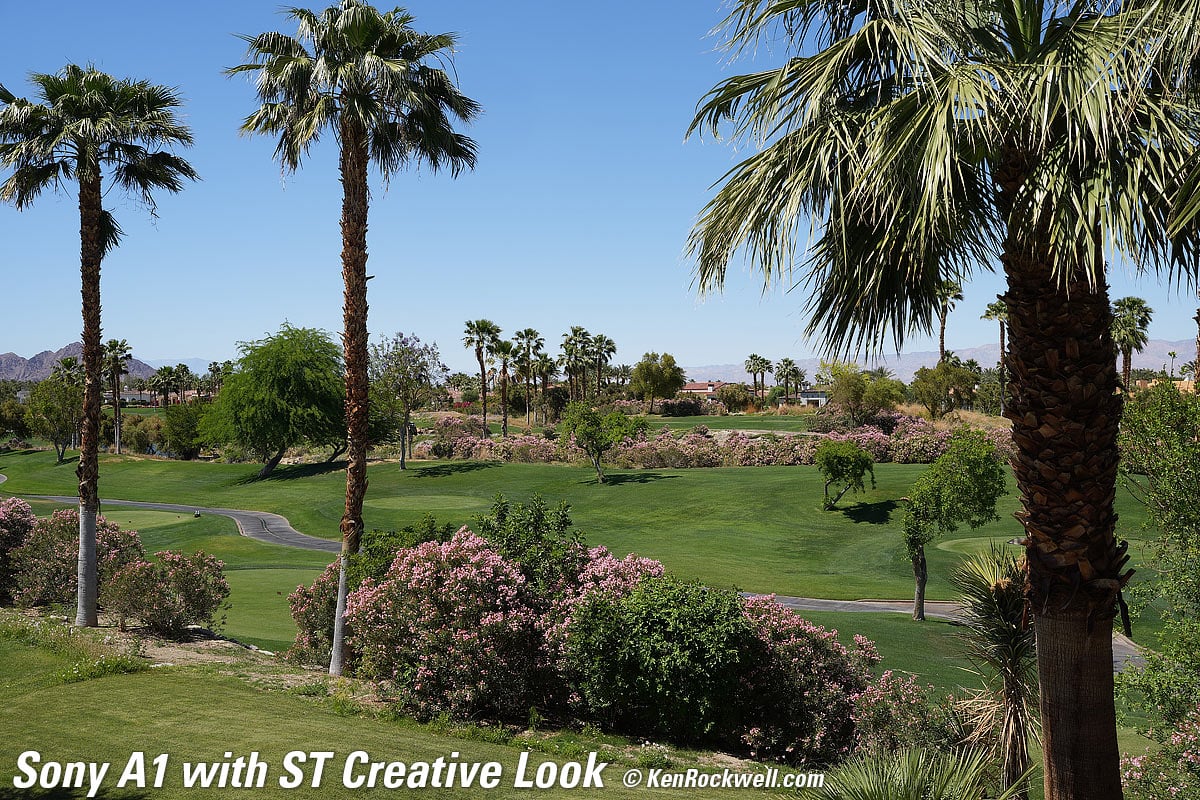
|
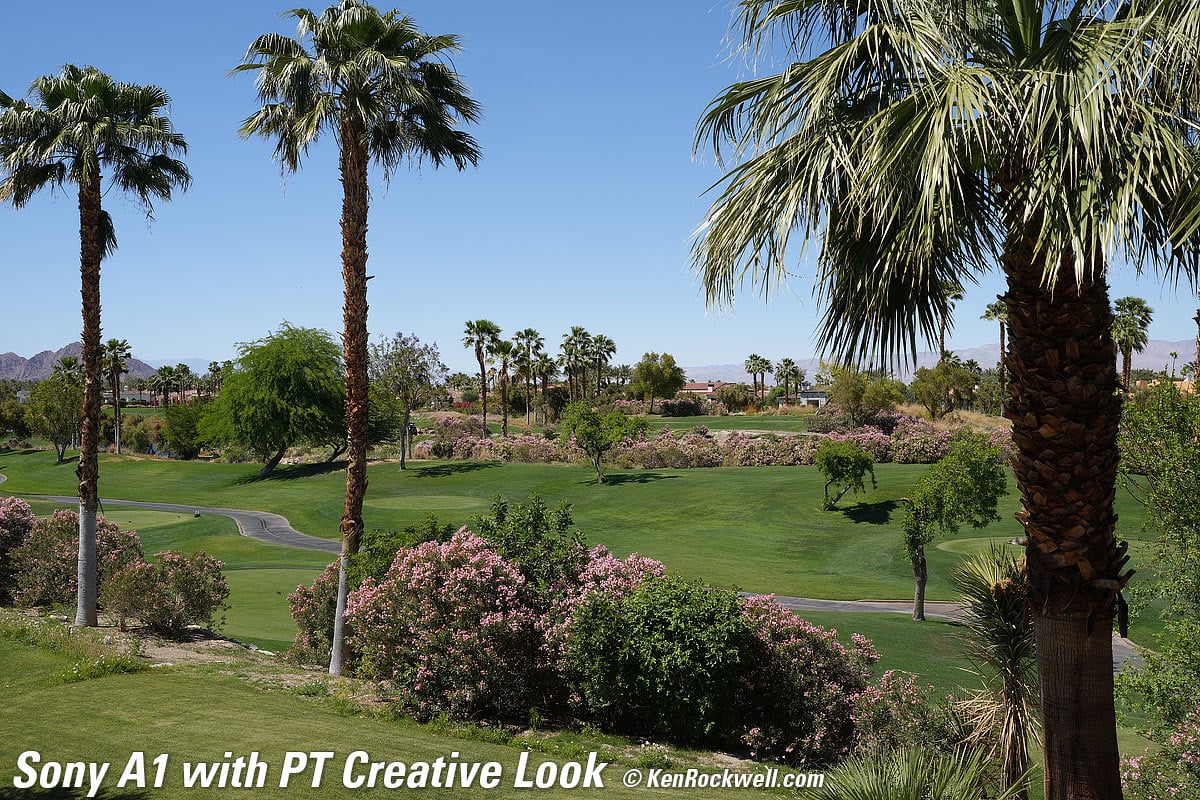
|
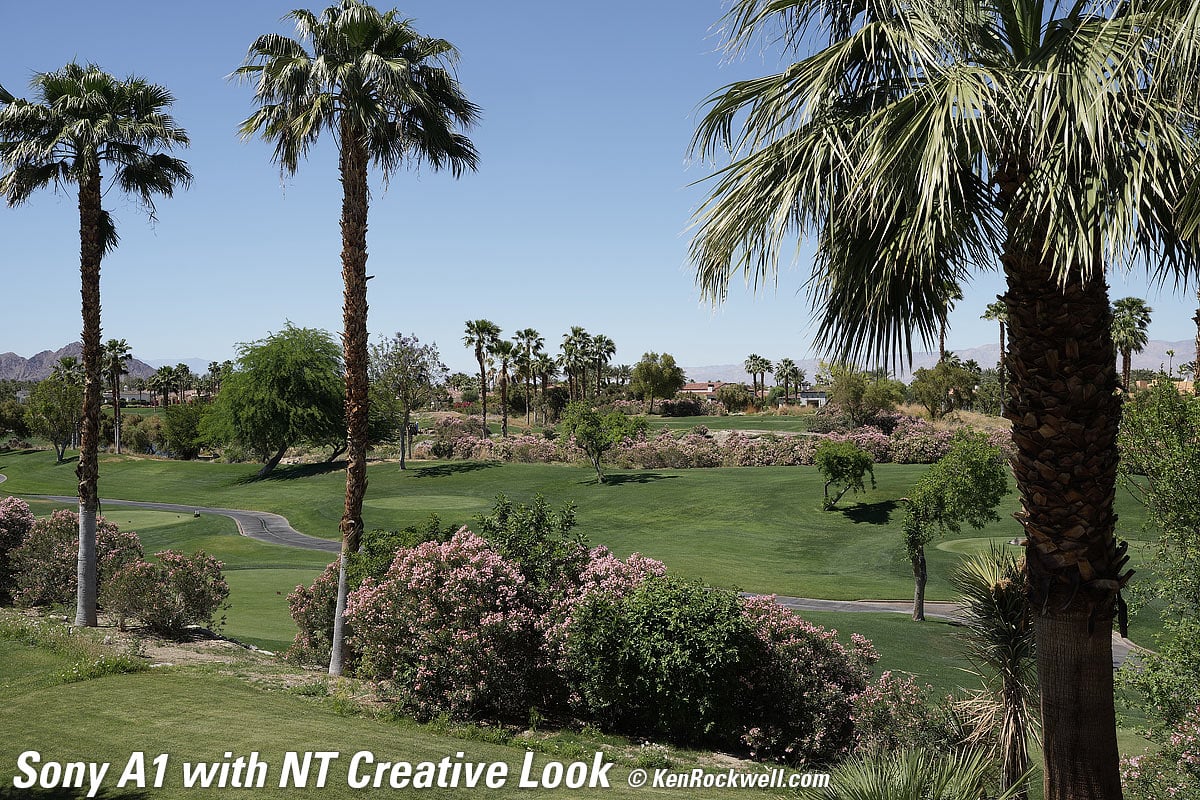
|
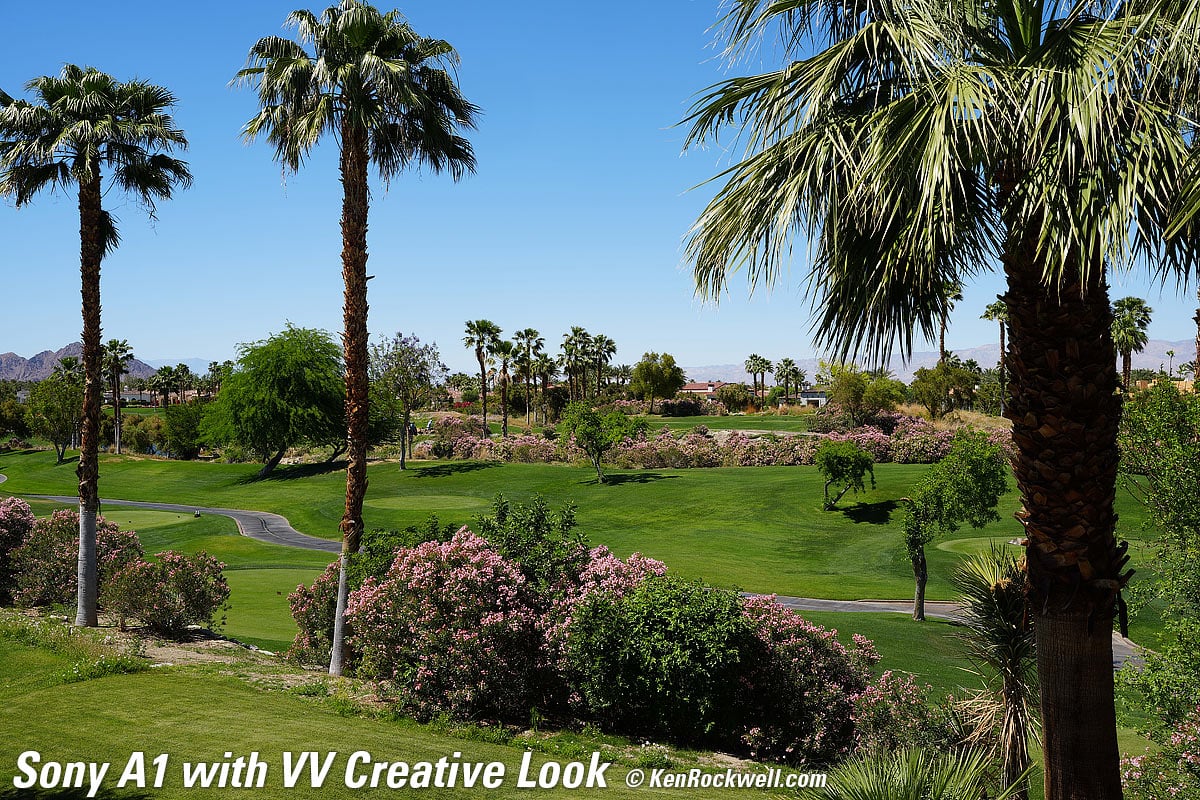 |
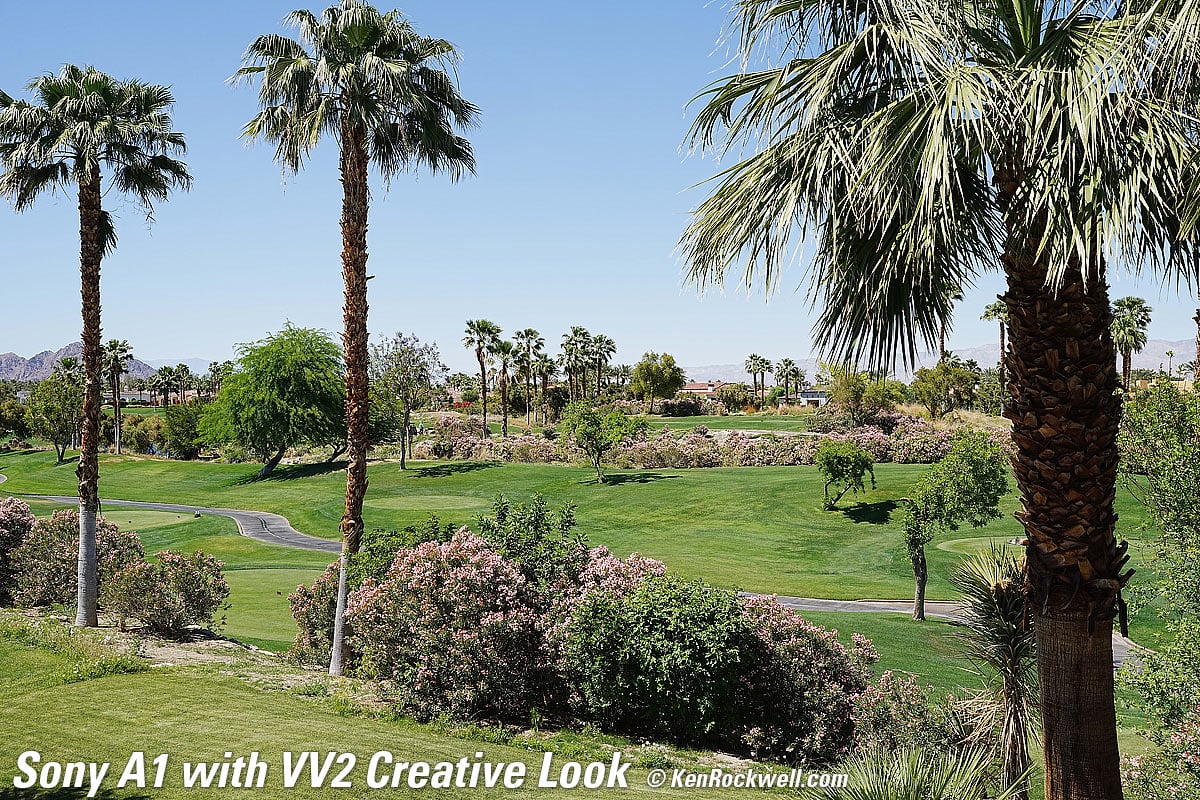 |
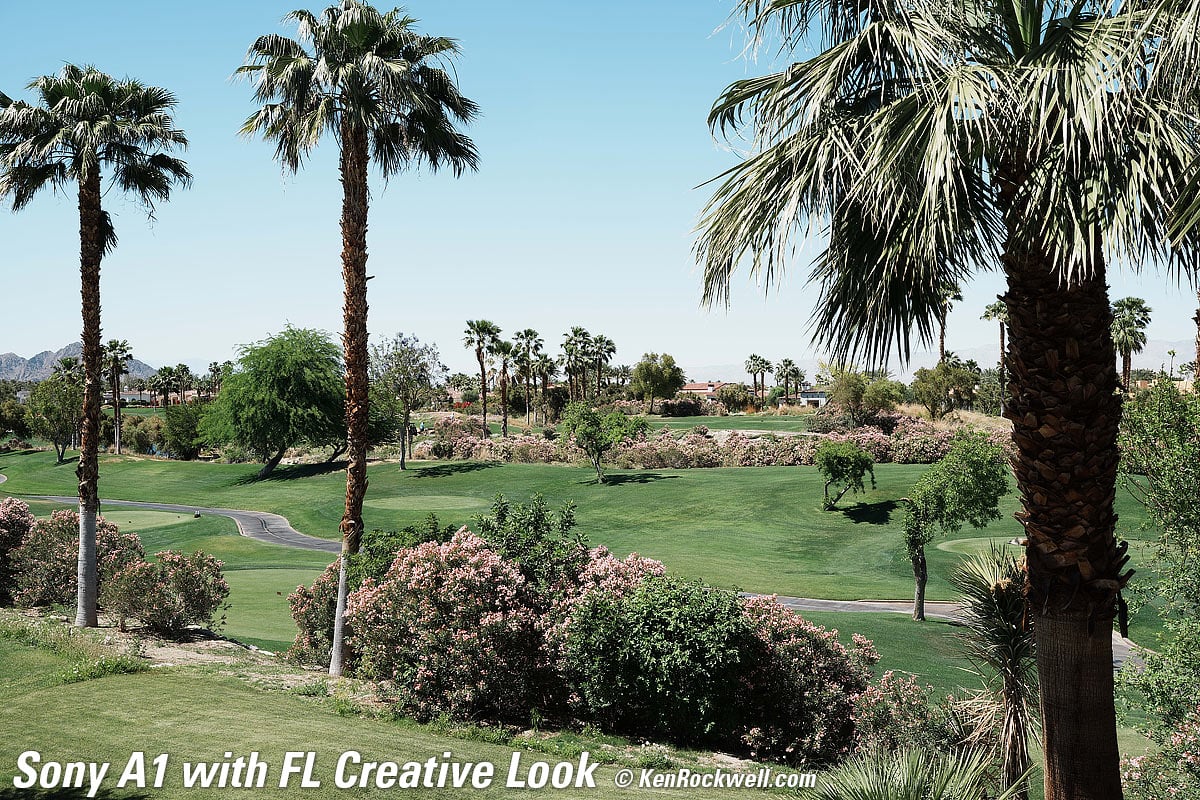 |
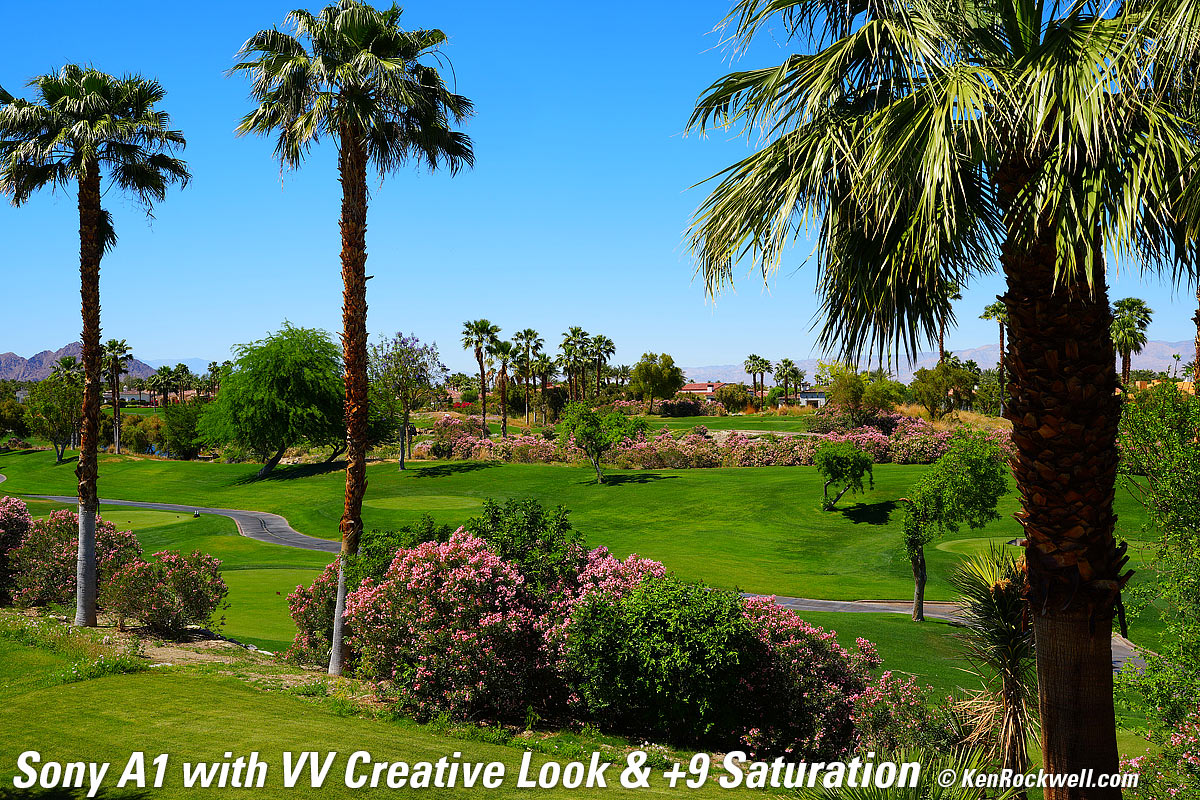 |
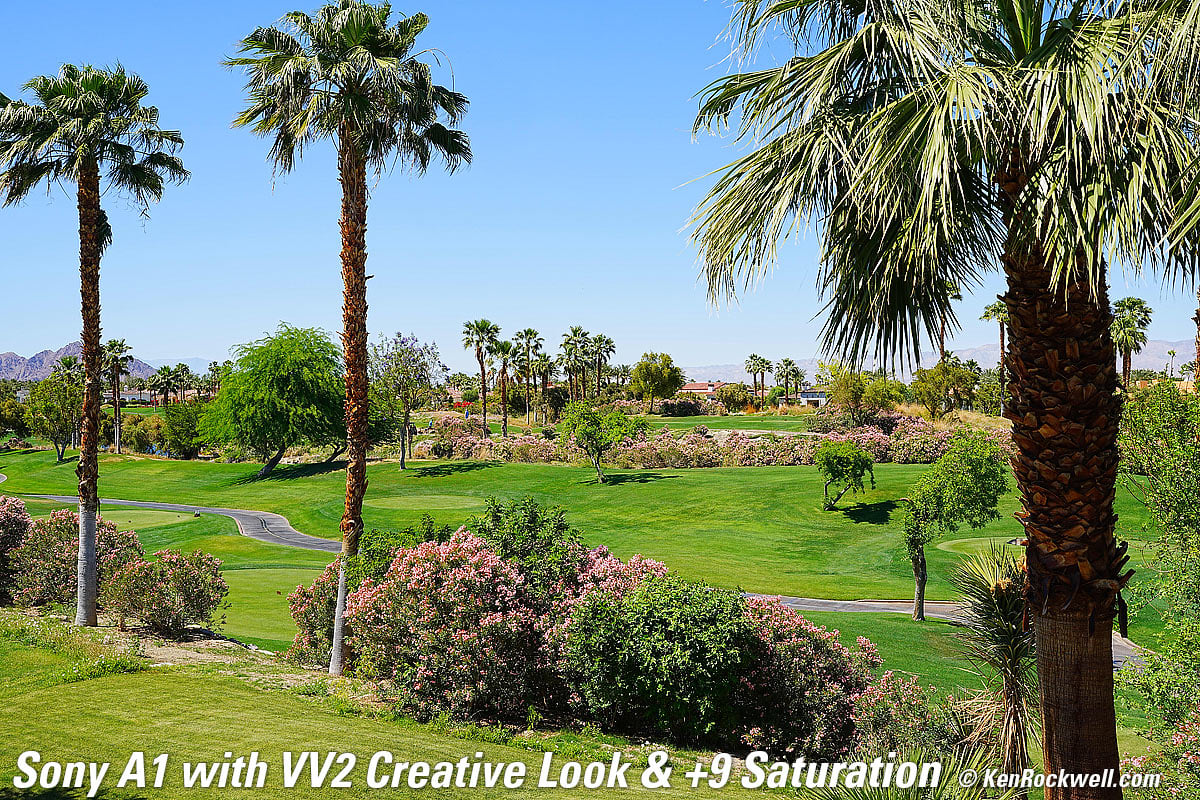 |
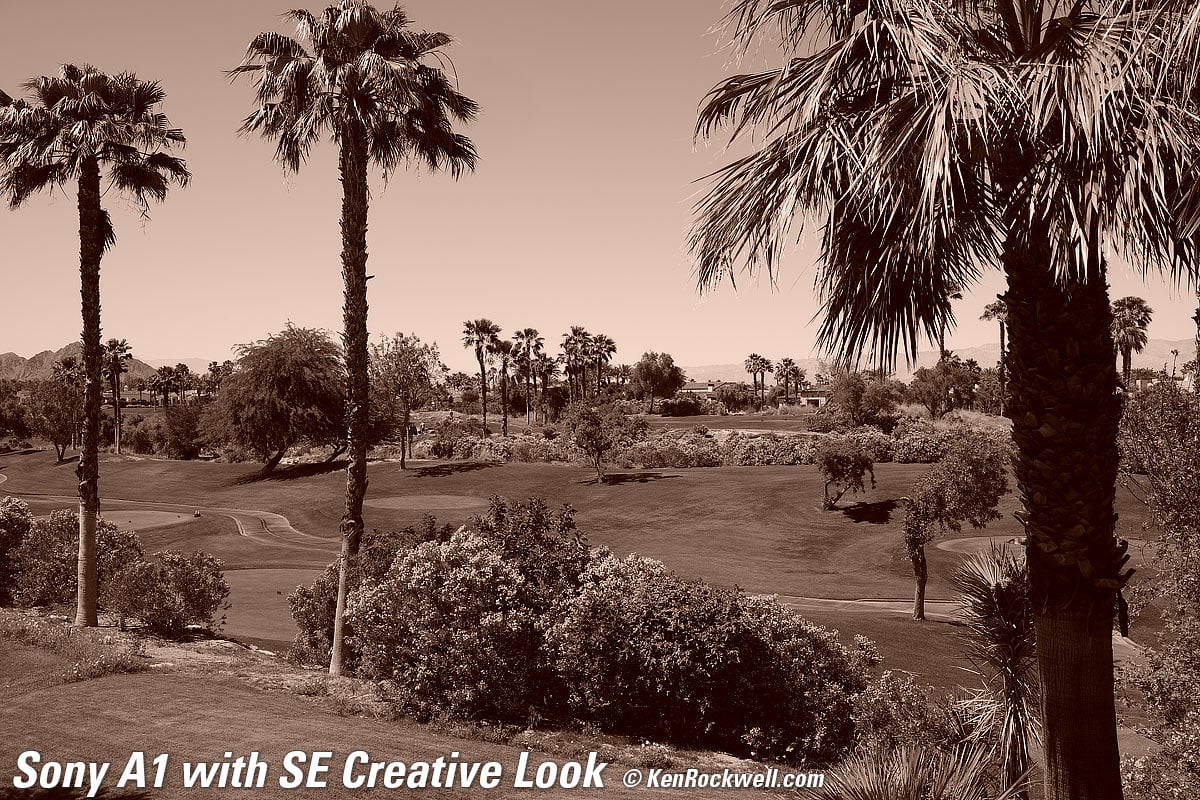 |
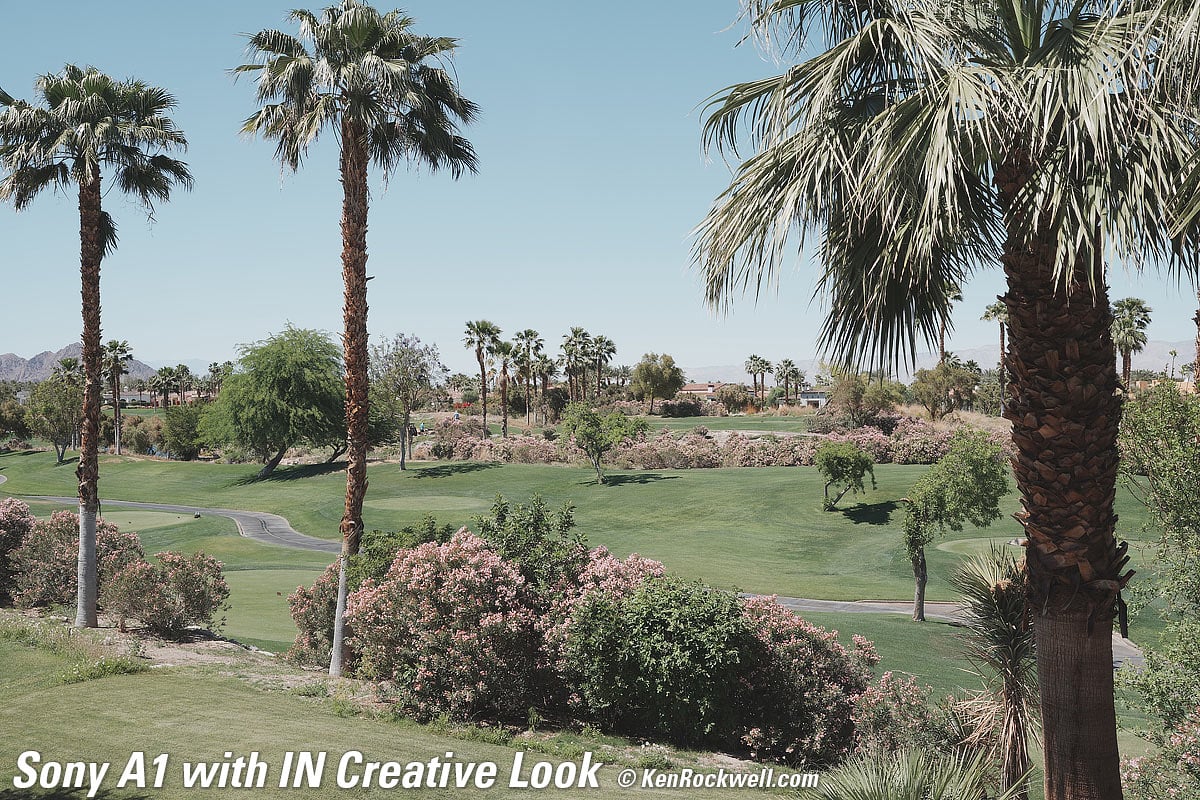 |
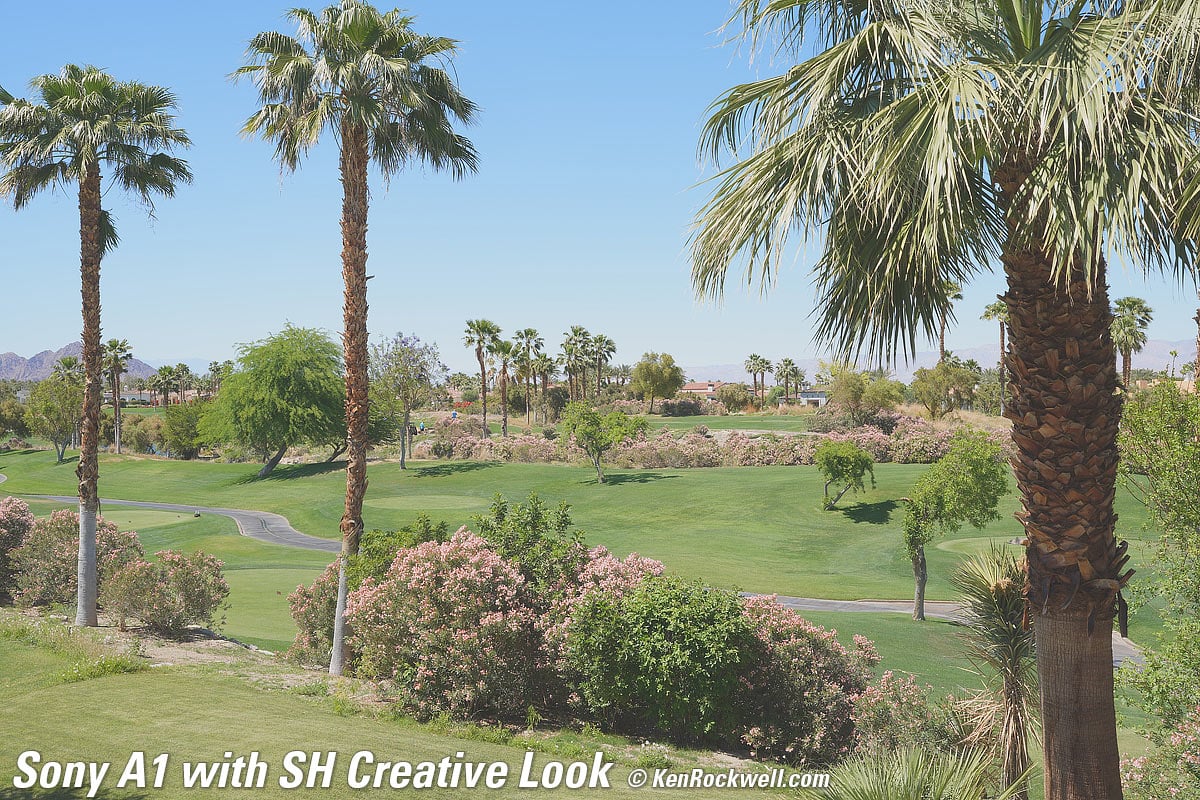 |
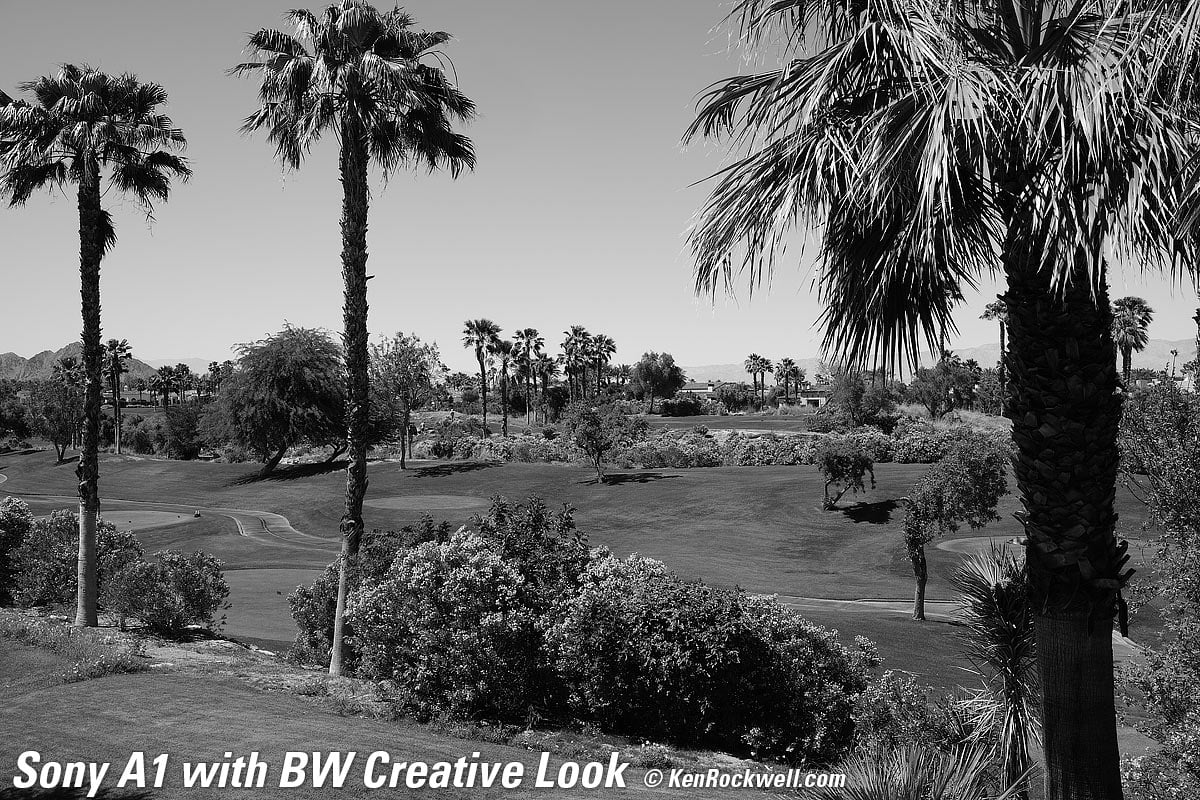 |
Click any for the camera-original © 50 MP Light JPG images (about 11 MB each).
It also adds new tweaks to each of these basic settings for Highlights, Shadows, Fade, Sharpness Range and Clarity to the existing Contrast, Sharpness and Saturation settings of older Sony cameras.
While Saturation now sets to ±9 rather than the ±3 of older cameras, it seems that it offers more precision rather than just a larger range. +9 in the A1 seems like more saturation than +3 in old cameras, but certainly not three times the saturation.
The new VIVID2 mode seems to add much more (too much) sharpening at its default settings, and also seems to add more lightness.
If you shoot raw then your colors and tones aren't created until you process the raw data later in software, and your choice of software will have as much effect on your images as the camera itself. These new modes don't apply to raw data.
Crop Modes performance top
I love that there are as-shot crops to 4:3 ideal format and 1:1 square, as well as a silly 16:9 option.
I program a button to let me get to these quickly (or put it in your Fn menu); otherwise you can find them at MENU > Shooting > 1 Image Quality > Aspect Ratio.
Ergonomics performance top
Ergonomics are the usual for Sony: poor. The body is blocky, hard and uncomfortable; like holding a VCR. It's not smooth or ergonomically designed to to fit our hands like Nikon or Canon bodies. The Sony A1 may look handsome on the page here, but it's painful to hold and shoot for any length of time because the angles of everything are mostly simple right angles and not at all optimized to the way our hands move. Worse, edges are hard 90º angles, not smooth curves, making this Sony more painful to hold than it should be. I so don't enjoy shooting with Sony.
Auto eye control for finder/LCD switching can get fooled with some kinds strong cross sunlight and leave the LCD ON and the FINDER off even when you put your eye to the finder. Man, it's annoying when the finder doesn't turn on!
Good news is that the A1 body has three control dials: one on the front under the shutter, one flush to the back panel which is also a four-way controller, and a third unmarked freebie on the top panel between the Exposure Mode and Exposure Compensation dials.
More good news is that there are lots of programmable function buttons all over, so you probably can add more of your often-used functions to their own buttons.
Thank goodness Sony heard my complaints and improved the response to dial inputs. Now the aperture and f/stop and ISO settings respond instantly in the finder as you move the dials. I can move the camera's dial three clicks by feel and the aperture changes by one stop. On older cameras you had to stop what you were doing and pay attention to the finder indications because the camera didn't always respond to all your inputs. This is now as good as it always should have been, and now works as well as every other camera has worked for the past 100 years.
Other settings and Fn menu items don't respond as instantly. I wish they did.
Sony has recombobulated the menu system, but it doesn't work any better then the system in older cameras. Basics are still well hidden to prevent consumers from mastering them and encroaching on the livelihoods of pro shooters: picture controls are three levels deep at MENU > Exposure/Color > 6 Color/Tone > Creative Look, and something as basic as card format is also three levels deep at MENU > Shooting > 2 Media > Format.
The Advance, AF mode and Exposure mode dials have locks. You have to hold a button to unlock them as you turn them.
The Exposure Compensation dial has a push-push button lock button which leaves the dial either in a locked or unlocked state.
Cards face the wrong way. SD card labels have to point away from you.
The Exposure Compensation dial lacks stronger detents at full stops and certainly doesn't have even deeper detent at the zero setting, so it can't be set by feel as I can on my CONTAX G2.
The card door requires using a two-step lock to open; you can't just pull the door back as I prefer.
The strap lug gets in the way of opening the card door; be sure to pull-up the strap lug before you try to open it.
The mechanical shutter is wonderfully quiet.
Exposure performance top
Like most mirrorless cameras, exposures are almost always perfect with little need for exposure compensation.
Finder performance top
The finder is fantastic.
Like all Sonys, its automatic brightness control works great so the finder naturally is always at the correct brightness as conditions change.
While it doesn't contribute to picture quality, it sure is nice, It's much sharper and better aligned than the smaller, lower-resolution finder of the A6100.
Flash performance top
Its super-fast flash sync speed saves flash battery power and increases flash range for fill flash.
It has a 1/400 flash sync speed (1/500 in APC-S crop) with "flash sync priority" ON. Otherwise 1/320, or 1/400 in APC-S crop.
Flash now also works with the electronic shutter!
It works up to its 1/200 sync. speed (1/250 in APS-C crop), but sync is oddly only via the hot shoe, NOT the PC sync connector.
High ISO Performance performance top
Complete Images details dark detail performance top
As seen at normal image sizes below, the A1 pretty much makes the same images from ISO 100 to ISO 6,400.
The color balance becomes slightly warmer (more amber) at ISO 12,800. This could be an Auto White Balance artifact, but I don't see this with other cameras.
The image becomes slightly color-mottled at ISO 25,600. It becomes slightly more amber (not a bad thing) and more mottled (a bad thing) at ISO 32,000, 51,200 (H) and 102,400 (H) — but all still quite usable if needed for normal-sized images.
This is magnificent performance, and typical today. It's better than my 50MP Canon 5DS/R, but not quite as good as the Canon EOS R5. (Follow those links and you can compare the original files for yourself.) The R5 at ISO 102,400 looks about the same as the A1 at only ISO 51,200; the A1 is much more mottled (has more low frequency chroma noise) than the R5 at the same super-high ISOs.
Click any for the camera-original © 50MP FINE JPG files (about 20 MB each):
Click any for the camera-original © JPG files (50 MP, about 20 MB each).
600 × 450 Pixel Crops (14.4× magnification) High ISOs details dark detail performance top
What we see at the high magnifications below is that fine details go away as the ISO increases. This happens with all cameras and our own eyes and is an artifact of the noise reduction working harder as the ISO increases.
In the A1, the most detail is at ISO 50 (L) and ISO 100, and becomes softer at every higher ISO. This is normal and how noise reduction works in every camera.
ISO 50 (L) is a "pull" ISO, and thus has more highlight contrast. This usually increases perceived highlight detail, and can lead to clipped highlights if you have too much subject contrast, as in the case of the window reflection in the glass of the clock face.
By ISO 12,800 most of the detailed scrollwork between the clock numbers is gone.
By ISO 32,000 the minute marks are mostly gone.
By ISO 102,400 most of the details are gone from the clock face, leaving only the numbers.
This is magnificent performance, and typical today. It's better than my 50MP Canon 5DS/R, but not quite as good as the Canon EOS R5. (Follow those links and you can compare the original files for yourself.) The Canon 5DS/R has much less fine detail at high ISOs while the EOS R5 is always sharper at high ISOs, which is superior performance.
Click any for the camera-original © 50MP FINE JPG files (about 20 MB each):
Click any for the camera-original © JPG files (50 MP, about 20 MB each).
Dark-Area 600 × 450 Pixel Crops (14.4× magnification) High ISOs details dark detail performance top
Here are different crops from the same images as above, now showing the dark grillwork of the fireplace.
Note how the most detail in the fine screen is at ISO 50 (L), which looks quite remarkable and almost three-dimensional. Bravo!
These details are successively smudged-away more and more by the noise reduction at the ISO increases. This is normal for all digital cameras.
The bricks behind the grill go away by ISO 25,600, and at ISO 102,400 (H) you can barely see the big iron bars!
This is magnificent performance, and typical today. It's better than my Canon EOS R5. (Follow those links and you can compare the original files for yourself.) The Canon EOS R5 has less detail in the shadows at high ISOs than the A1.
The A1 is superior in the shadows while the R5 is superior overall and for detail. See? There is no such thing as universally better or worse; it all depends on what's important to your own work. Shadows are the least important part of most images. That's why they're called shadows: our eyes can't see as much in them to notice differences; our eyes don't see or to pay much attention to detail in shadows.
Click any for the camera-original © 50MP FINE JPG files (about 20 MB each):
Click any for the camera-original © JPG files (50 MP, about 20 MB each).
Lens Aberration Correction performance top
Lens corrections are at MENU > Shooting > 1 Image Quality > (click way, way down to) Lens Compensation.
There are controls for corner darkening (falloff; called "Shading Comp), lateral chromatic aberration (called Chromatic Aberration Comp) and Distortion.
These are basic corrections, there are no more advanced Digital Lens Optimizers as in Canon and Fuji.
Mechanical Quality performance top
Sony A1. bigger.
The A1 feels about as well made as the less expensive Sonys. Most of the dials and every button is plastic, with mostly metal covers. You're paying $6,500 for the novelty of high resolution and blistering frame rate; not heirloom construction quality.
Metal
Top cover, strap lugs, advance mode dial, hot shoe, exposure compensation dial, LCD hinge, card door lock and hinge, front and rear covers, bottom cover around tripod socket, tripod socket.
Plastic
AF mode dial, advance mode dial unlock button, slide-in hot shoe cover, exposure mode dial and unlock button, unmarked third top control dial, exposure compensation dial lock button, power lever, shutter button, all other buttons, front dial, rear panel dial, LCD frame, LCD cover, card door, bottom surface around battery door, battery door, battery door lock.
Rubberized
Hand grip, connector covers.
Noises When Shaken
Mild to moderate clunking with power off. It sounds like something's broken off or flopping around loose inside. I assume it's the unlocked image-stabilizing shifting sensor flopping all around.
With power on the sensor locks down and it's quite solid.
Date Code
None found.
Serial Number
Sony A1. bigger.
Printed on a sticker glued on the bottom of the camera, neither an acceptable nor permanent way to do this for a product that's handled all day. Clearly Sony sees this as a disposable consumer electronic item like a VCR and not a real camera like a Hasselblad.
Made in
Made in Thailand.
Image Stabilization performance top
In-camera sensor shift Image Stabilization works somewhat. Its real-world performance is nowhere near as good as the "5.5 stops" as claimed by Sony. This is typical; when actually tested, in-camera systems don't work anywhere near as well as real in-lens optical stabilization does.
"Percent Perfectly Sharp Shots" are the percentage of frames with 100% perfect tripod-equivalent sharpness I get when I'm shooting hand-held while free-standing with no support or bracing. This is a very strict test; in actual shooting at typical print sizes I get acceptable sharpness at much slower speeds, but for the purposes of seeing how much improvement an IS system gives, this is the most precise method.
Hand tremor is a random occurrence, so at marginal speeds some frames will be perfectly sharp while others will be in various stages of blur — all at the same shutter speed. This rates what percentage of shots are perfectly sharp, not how sharp are all the frames.
Shot with Sony FE 35mm f/1.4 GM
| % Perfectly Sharp Shots | 1 |
1/2 |
1/4 |
1/8 |
1/15 |
1/30 |
1/60 |
1/125 |
1/250 |
| Stabilization ON | 0 |
50 |
50 |
50 |
100 |
33 |
100 |
100 |
100 |
| Stabilization OFF | 0 |
0 |
0 |
0 |
33 |
33 |
50 |
100 |
100 |
I see about a three-stop real-world improvement. Sadly it never works so well that it can lock-down shots all the time at reasonable speeds like 1/8; all it does it improve the hit rate but never really locks down the image for consistent results.
So, yes, the in-camera stabilization does help, but it's far from a 5.5 stop cure-all.
Rear LCD Monitor performance top
The tiny 2.95" rear LCD is pathetic, especially for a $6,500 camera. It lacks the anti-reflection coatings and automatic brightness controls of my Canon 5DS/R (and every iPhone).
It's tiny because space that could have been used for a bigger screen is wasted on the flippy hinge.
Playback performance top
Playback is greatly improved from earlier cameras, which were defective.
Sony finally fixed the flaw where vertical shots didn't rotate when magnified, and playback rotation finally just works as iPhones always have, automatically rotating as you rotate the camera.
Data performance top
Card Formatting
Cards are still incorrectly titled as "NO NAME," which foolishly makes it difficult figuring out which card came from which camera when I connect them to my card readers and look at the all in my Mac's Finder.
Folder Creation
Excellent is the Date Format new-folder option, which makes a new folder each day.
Set this at MENU > Shooting > 3 File > File/Folder Settings > Folder Name > Date Form.
Clock Accuracy performance top
Every sample is different, but mine gains about 757 mS a day, or about 23 seconds per month, which is poor.
This matters when you shoot multiple cameras (or this camera and an iPhone) and then sort all the images based on capture time to compare the similar views of each scene.
Compared top
Sample Images Intro New Good Bad Missing
Specifications Accessories Performance
Compared User's Guide Recommendations
I'd get my A1at B&H, at Adorama, at Amazon or at Crutchfield, or eventually used at eBay if you know How to Win at eBay.
See All Sony Cameras Compared.
User's Guide top
Sample Images Intro New Good Bad Missing
Specifications Accessories Performance
Compared User's Guide Recommendations
I'd get my A1at B&H, at Adorama, at Amazon or at Crutchfield, or eventually used at eBay if you know How to Win at eBay.
Power
I charge via USB-C; it's easier than pulling the battery and using the external charger.
I only use the external charger for charging spare batteries.
Cards & Formatting
There are two slots. Each takes your choice of either regular SD cards as I prefer, or expensive CFexpress Type A cards. The more common CFexpress Type B cards will not fit.
Card format is at MENU > Shooting > 2 Media > Format.
I prefer my A1 to make a new folder each day, which Sony calls Date Form. I set this at MENU > Shooting > 3 File > File/Folder Settings > Folder Name > Date Form.
The card door requires two separate motions (down and then out) to open, which some might prefer, but the strap ring often interferes with flipping it open. Be sure to pull-up the strap lug before you try to open the door:
Sony A1. bigger.
Picture Looks
Saturation, contrast, sharpening and much more are set as "Creative Looks" which are set at MENU > Exposure/Color > 6 Color/Tone > Creative Look.
Cropping is set at MENU > Shooting > 1 Image Quality > Aspect Ratio.
Finder Shut-Off
Big, Fat Eyepiece, Sony A1. bigger.
A design flaw is that direct sunlight can hit the automatic eye sensor just below the eyepeice so that the finder does not turn on when you hold your A1 to your face. Man, that's annoying to grab the camera and not be able to shoot!
If this happens, pull the camera away, use your hand to sheild the sun from the sensor from the sun and hold it to your face.
Save/Load Settings
You can save and load complete sets of camera settings at MENU > Setup > 2 Reset/Save Settings > Save/Load Settings > Save Settings, which will save a file called CAMSET01.DAT on a folder on your card.
The CAMSET01.DAT file is in a folder called NO NAME / PRIVATE / SONY / SETTING / 1 / CAMSET. Sorry, I didn't choose that location.
I save my CAMSET files on my computer.
The next time you save, the file will increment to CAMSET02.DAT and so fourth so you can have several.
To recall them from the card, use the same menu options.
To recall them from your computer, just copy the files to the same folder location with a card reader and then put the card in your camera.
My Setup File
Be sure to save your own settings file as described above before you try mine, in case you hate mine and want to go back to where you were.
Feel free to try my own saved camera settings file CAMSET02.DAT. Clicking it does nothing here; click it to download it the small 25kB file to your computer, then use a card reader to copy my CAMSET02.DAT file to a folder on your card at NO NAME / PRIVATE / SONY / SETTING / 1 / CAMSET.
Now stick the card in your A1 and hit MENU > Setup > 2 Reset/Save Settings > Save/Load Settings > Load Settings and go for it.
It should recall everything about how I set up my A1, including my copyright data which puts my personal © KenRockwell.com notice in your EXIF files; be sure to reset these to your own information after you load my settings.
Recommendations top
Sample Images Intro New Good Bad Missing
Specifications Accessories Performance
Compared User's Guide Recommendations
I'd get my A1at B&H, at Adorama, at Amazon or at Crutchfield, or eventually used at eBay if you know How to Win at eBay.
The A1 is Sony's best camera ever, both for fast action and for ultimate image quality for things that hold still. While the A7R IV has slightly more resolution, it's an older camera with inferior image controls to the A1. These controls let the A1 beget better-looking images to those who know how to use them, rendering all older Sonys obsolete.
Of course the A1 is priced high, which we expect for a top camera. If you and your work deserve the very best and you already shoot Sony, of course it's worth it, but if you're a student, if you actually work for a living or if you aren't already in the Sony system, I wouldn't drop $6,500 on it. I prefer the Canon EOS R5 which has superior ergonomics and high ISO performance, spectacular image quality and sells for about half the price. See Is It Worth it and Sony vs. Nikon vs. Canon Full-Frame.
This 100% all-content website's biggest source of support is when you use those or any of these links to approved sources when you get anything, regardless of the country in which you live. Sony does not seal its boxes in any way, so never buy at retail or any other source not on my personally approved list since you'll have no way of knowing if you're missing accessories, getting a defective, damaged, returned, non-USA, store demo or used camera. I use the stores I do because they ship from secure remote warehouses where no one gets to touch your new camera before you do. Buy only from the approved sources I use myself for the best prices, service, return policies and selection.
Thanks for helping me help you!
Ken Rockwell.
© Ken Rockwell. All rights reserved. Tous droits réservés. Alle Rechte vorbehalten. Ken Rockwell® is a registered trademark.
Help Me Help You
I support my growing family through this website, as crazy as it might seem.
The biggest help is when you use any of these links when you get anything. It costs you nothing, and is this site's, and thus my family's, biggest source of support. These places always have the best prices and service, which is why I've used them since before this website existed. I recommend them all personally.
If you find this page as helpful as a book you might have had to buy or a workshop you may have had to take, feel free to help me continue helping everyone.
If you've gotten your gear through one of my links or helped otherwise, you're family. It's great people like you who allow me to keep adding to this site full-time. Thanks!
If you haven't helped yet, please do, and consider helping me with a gift of $5.00.
As this page is copyrighted and formally registered, it is unlawful to make copies, especially in the form of printouts for personal use. If you wish to make a printout for personal use, you are granted one-time permission only if you PayPal me $5.00 per printout or part thereof. Thank you!
Thanks for reading!
Ken Rockwell.
